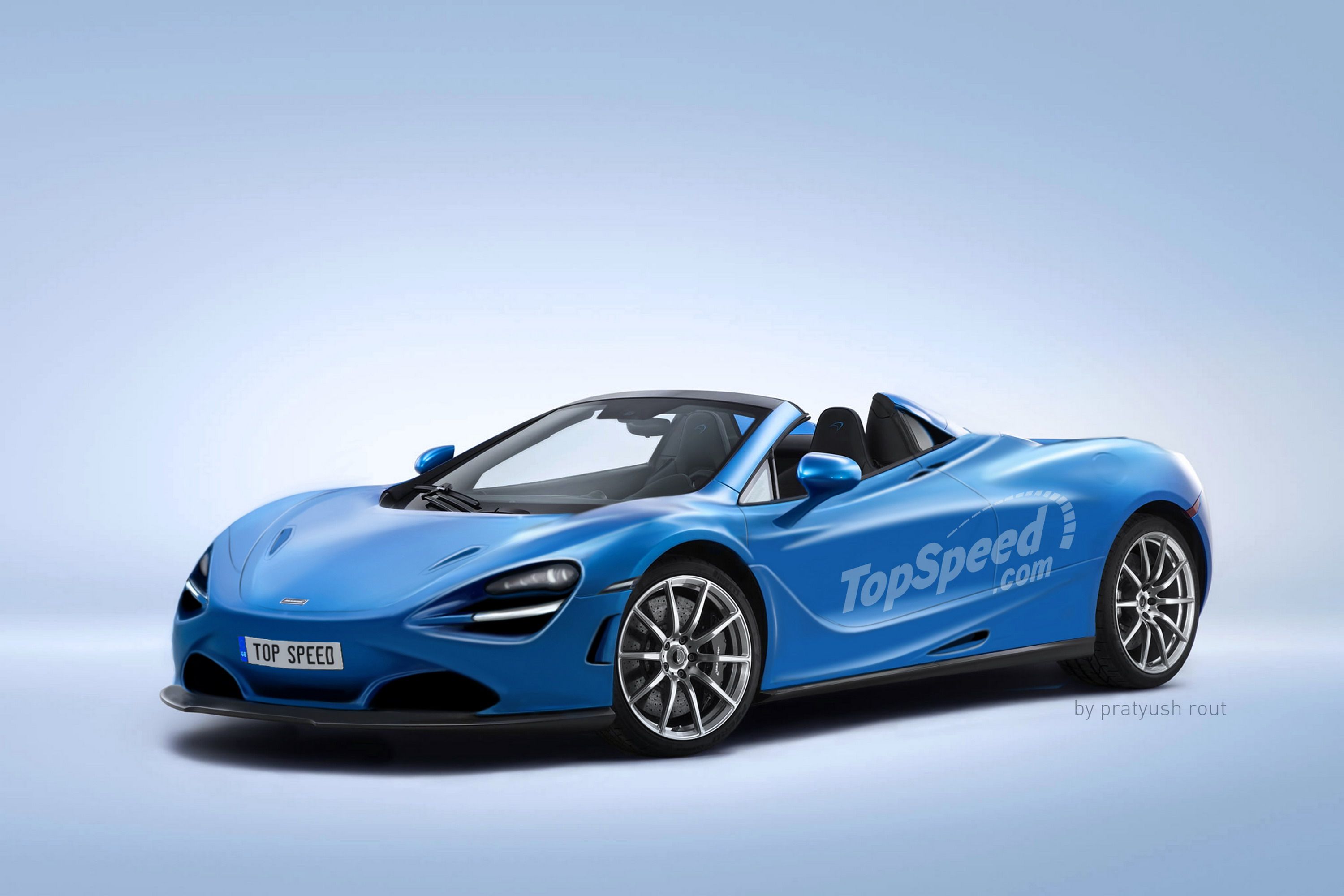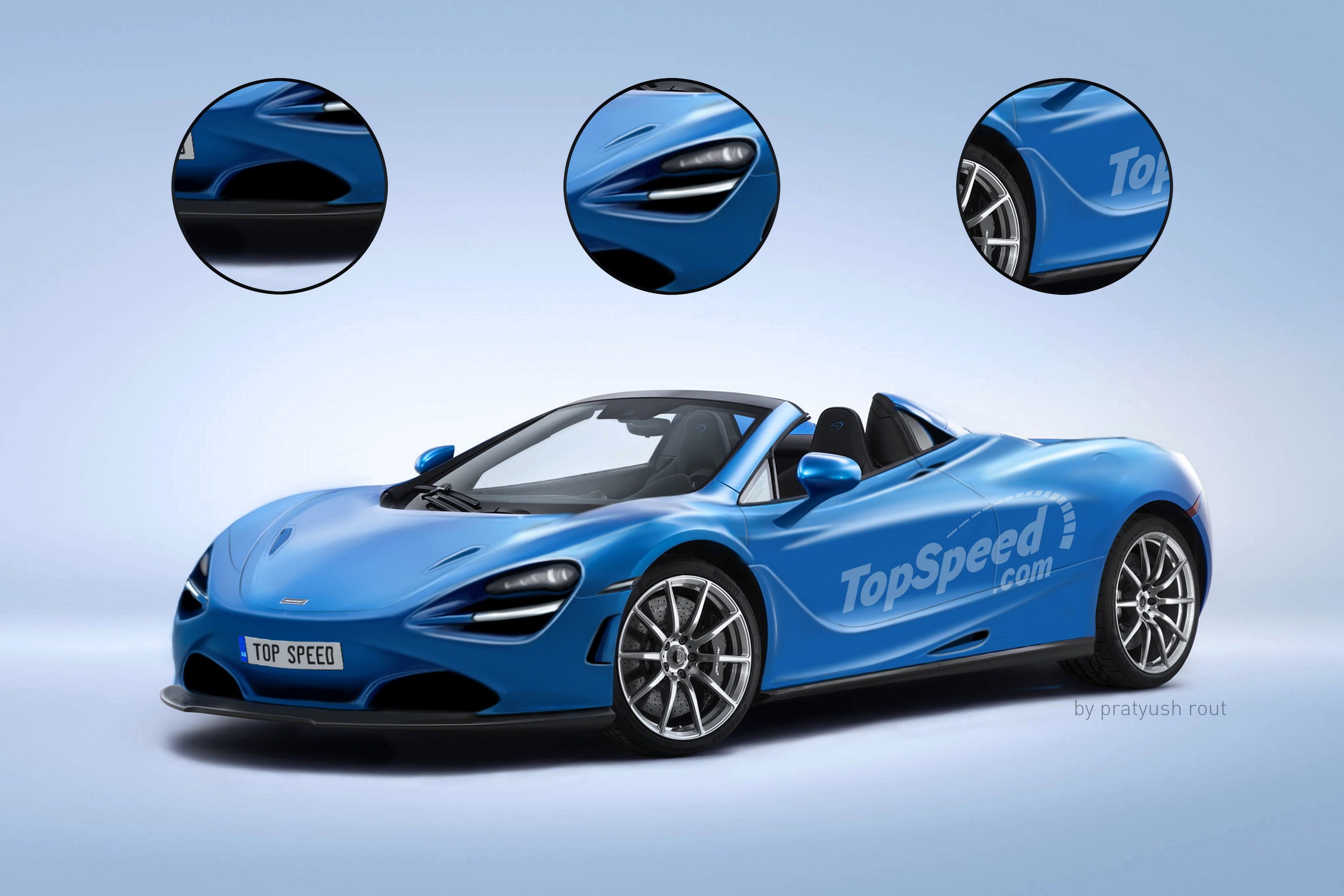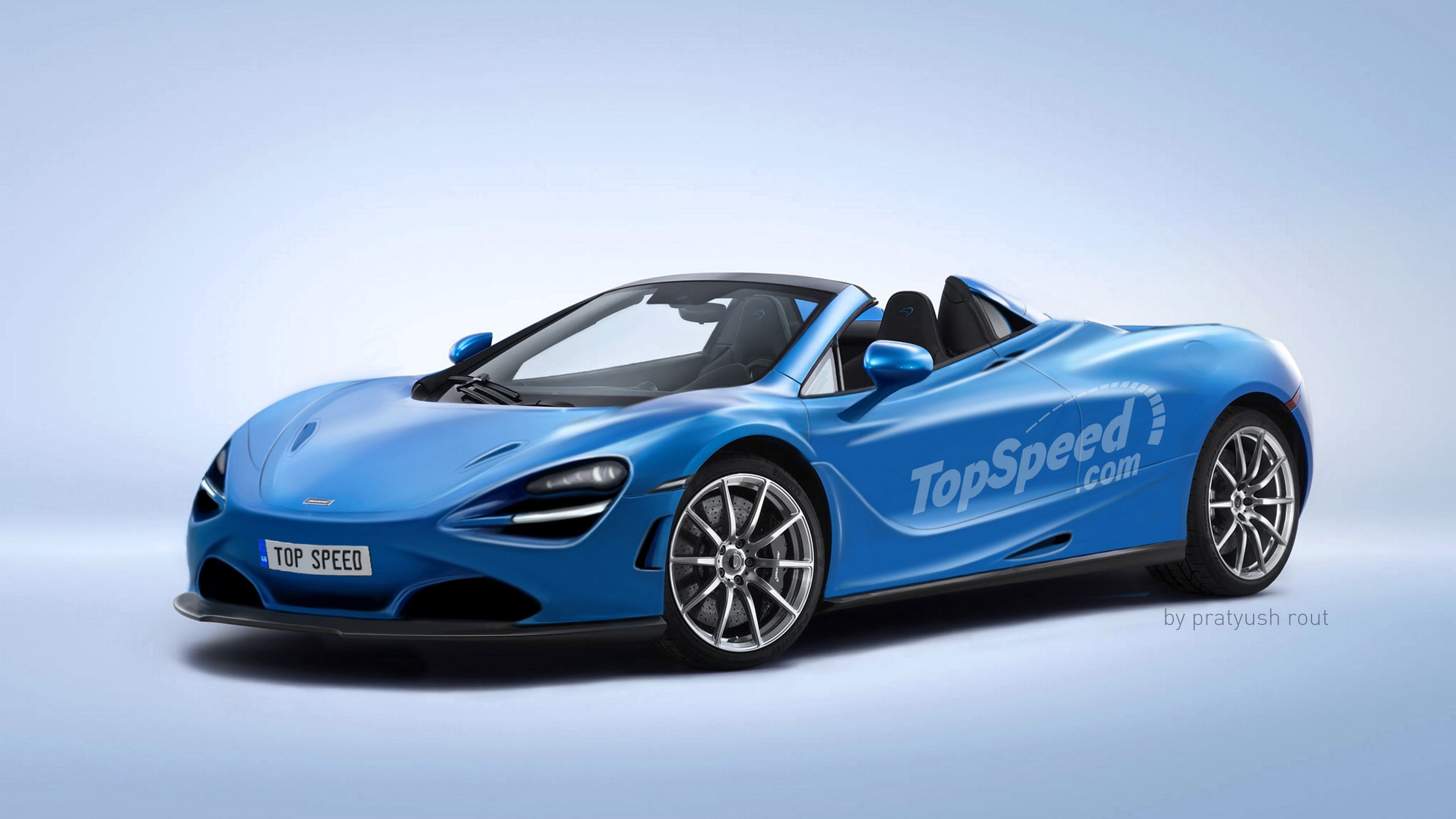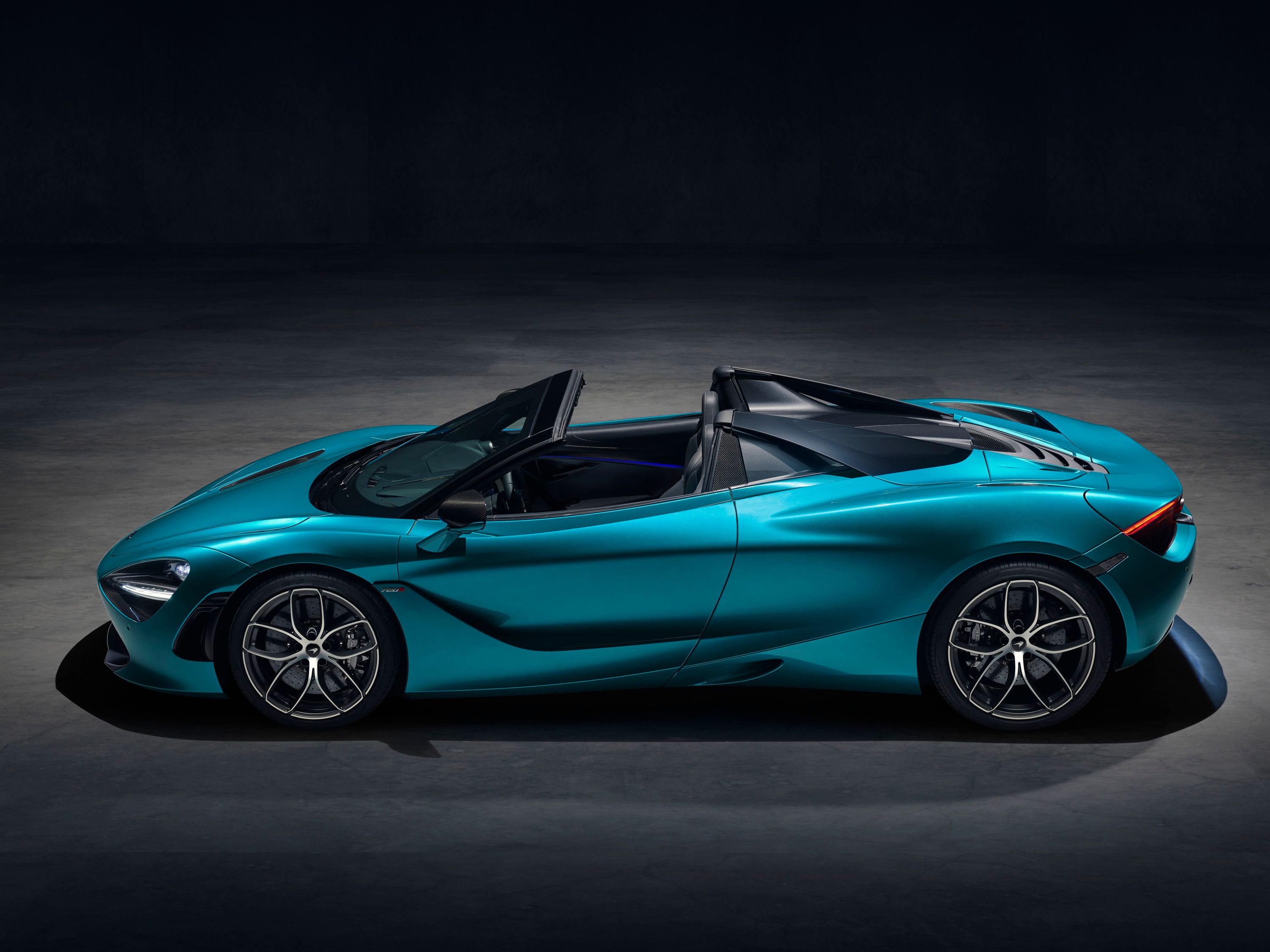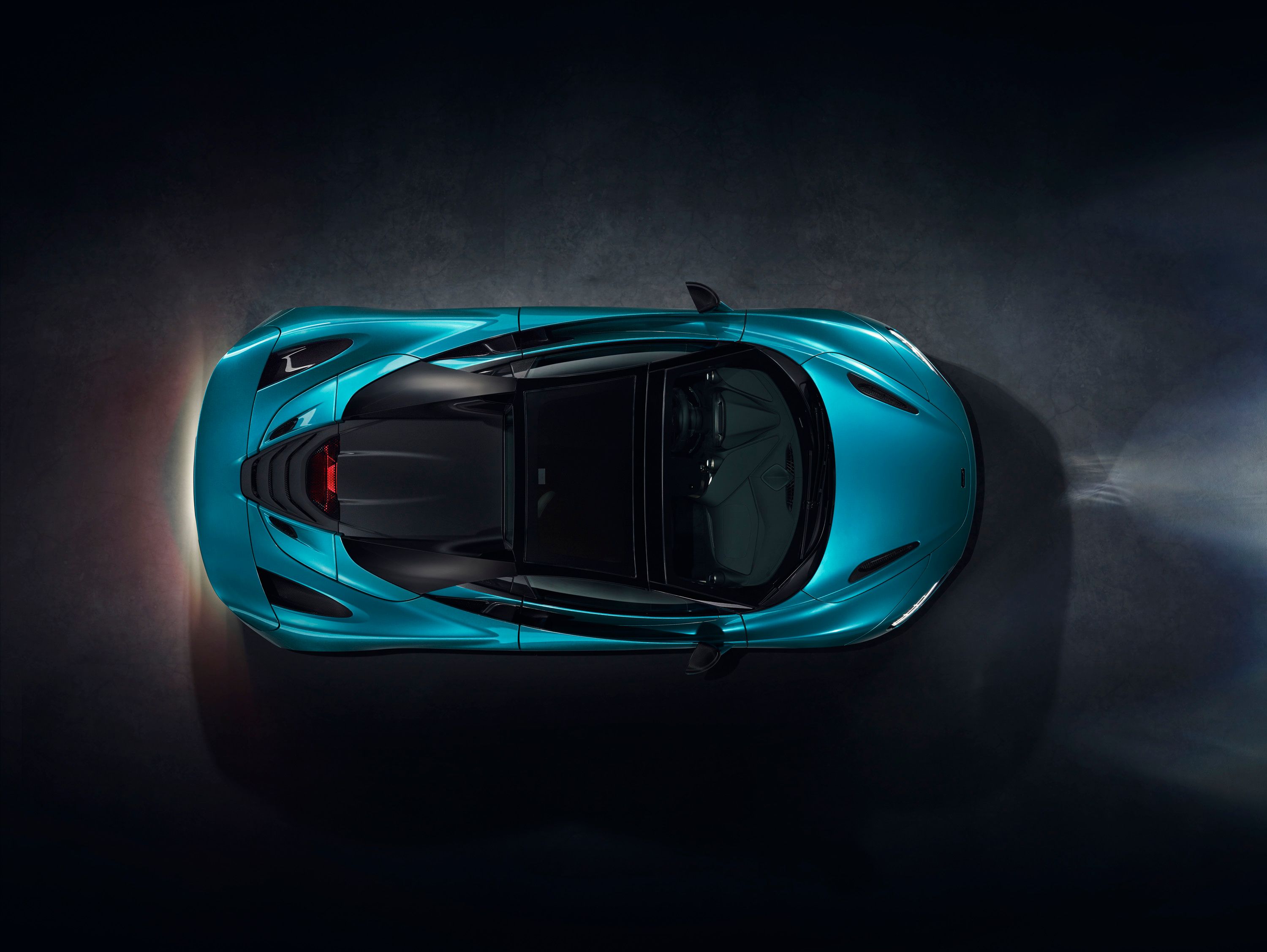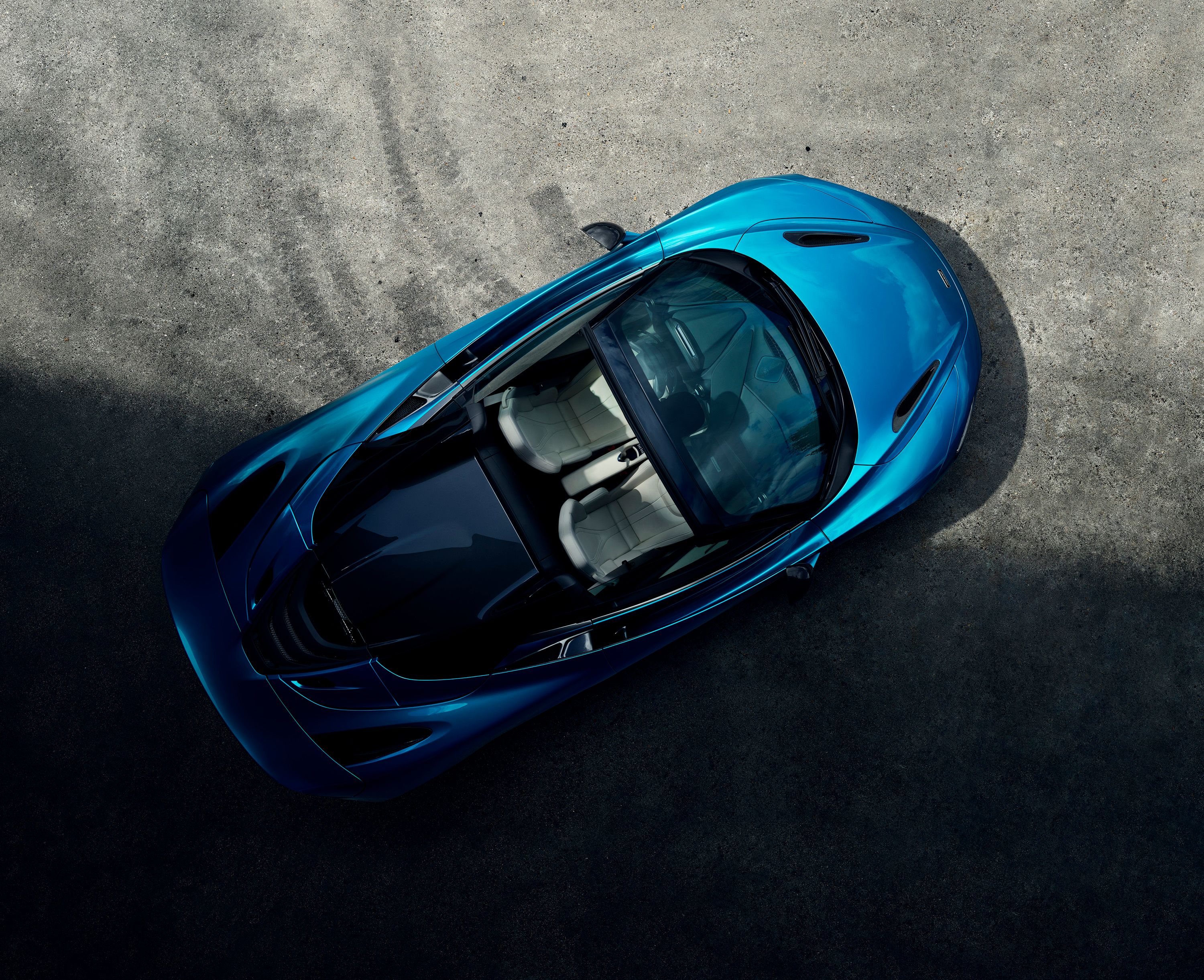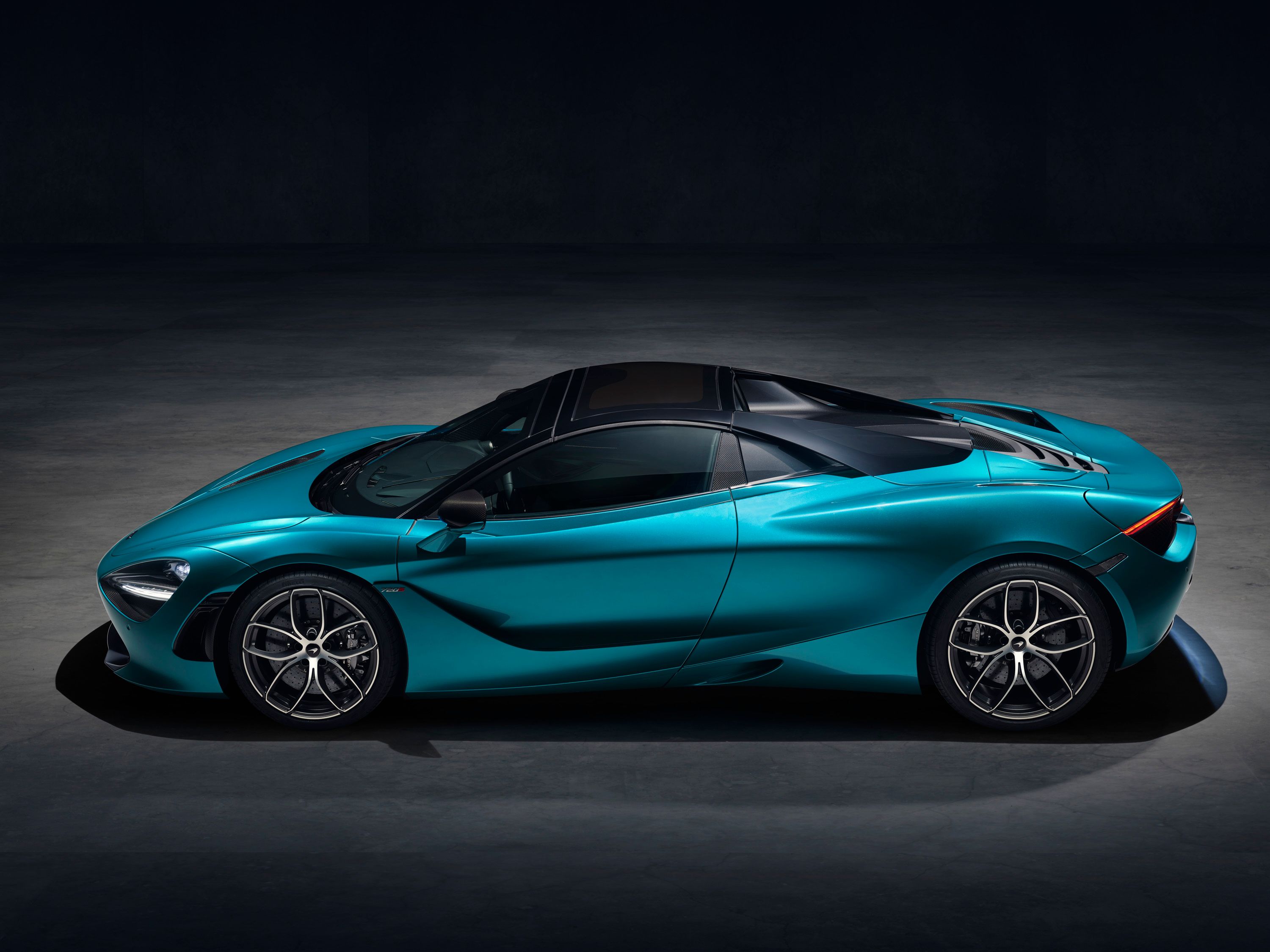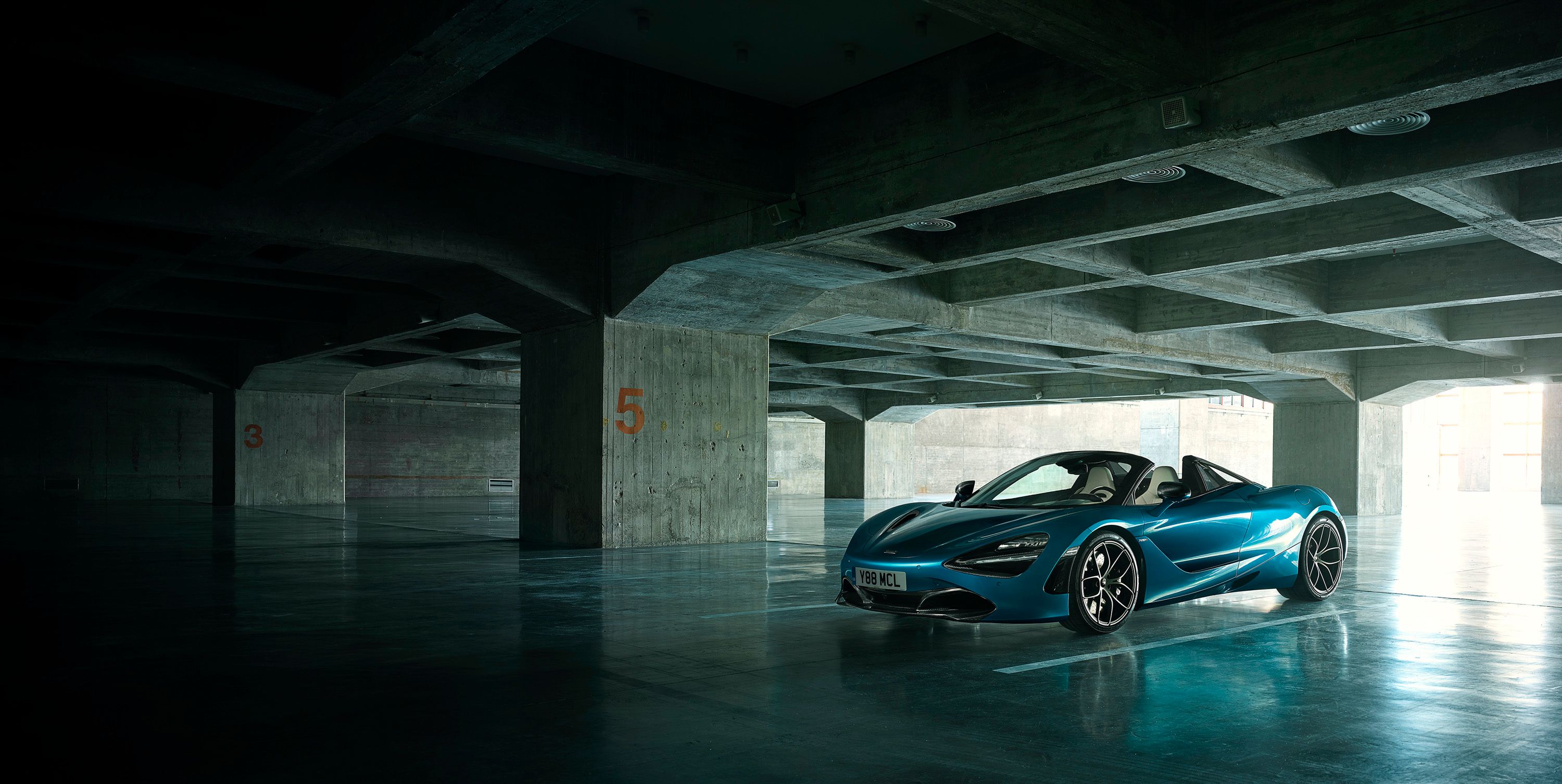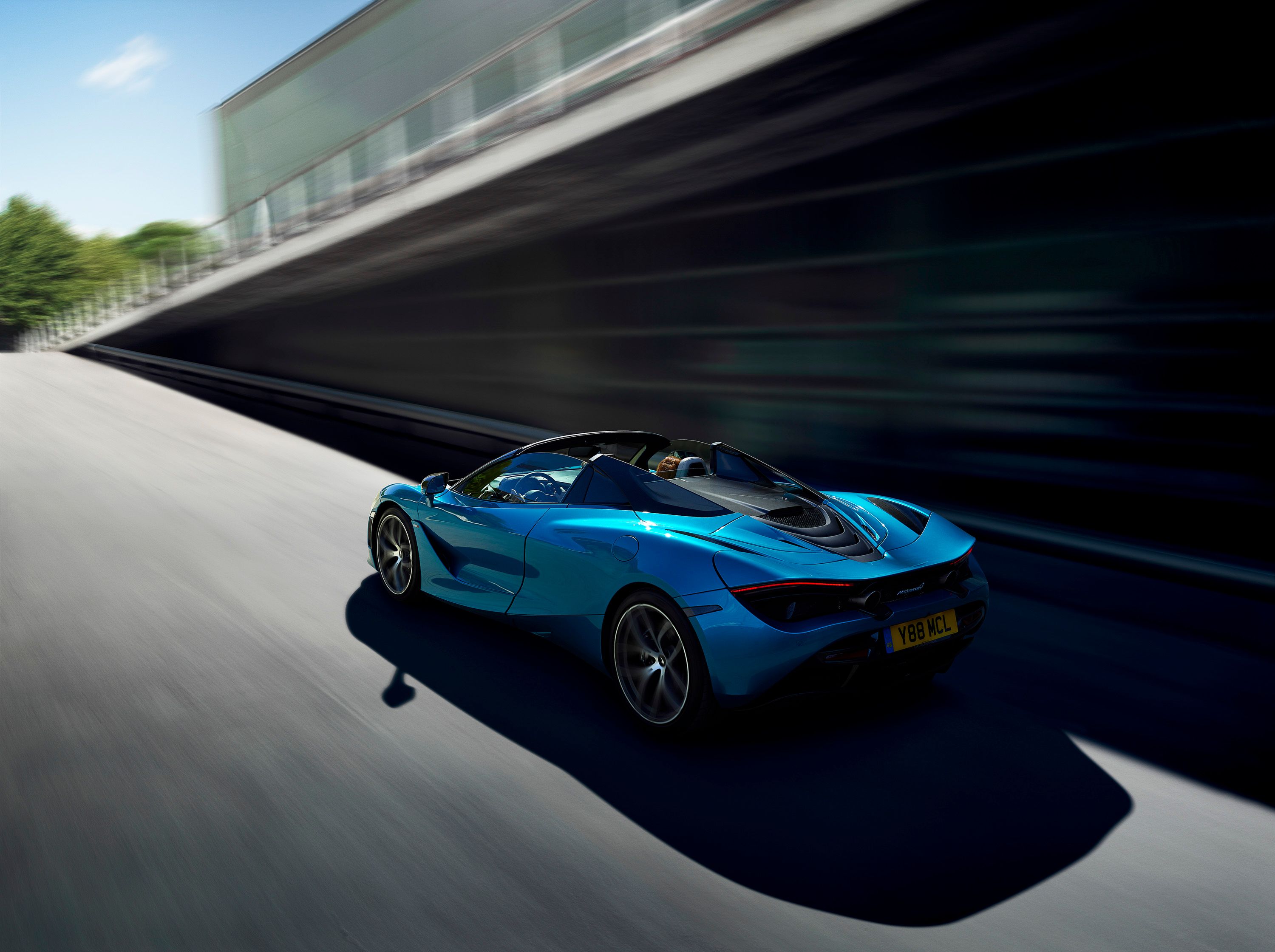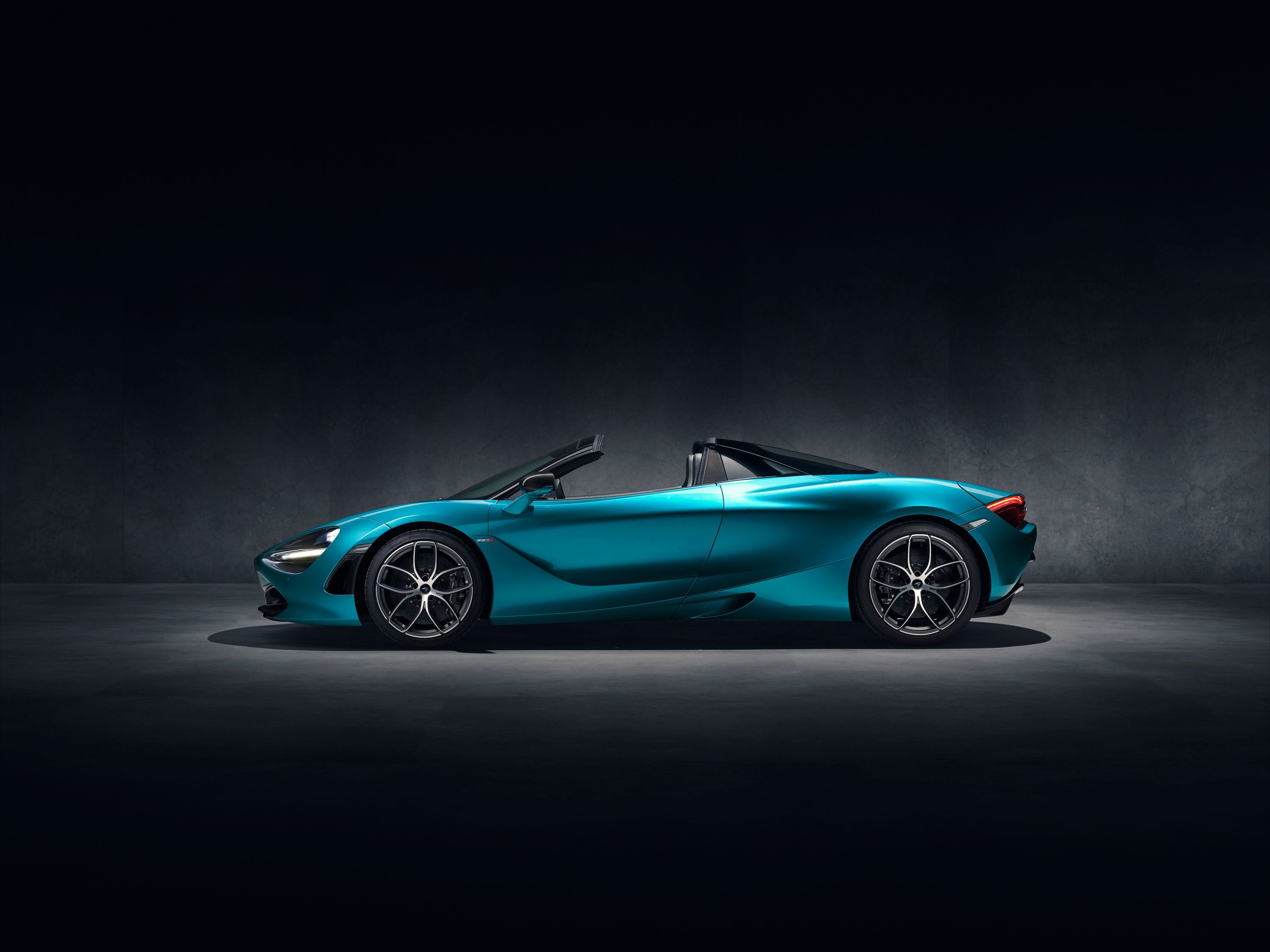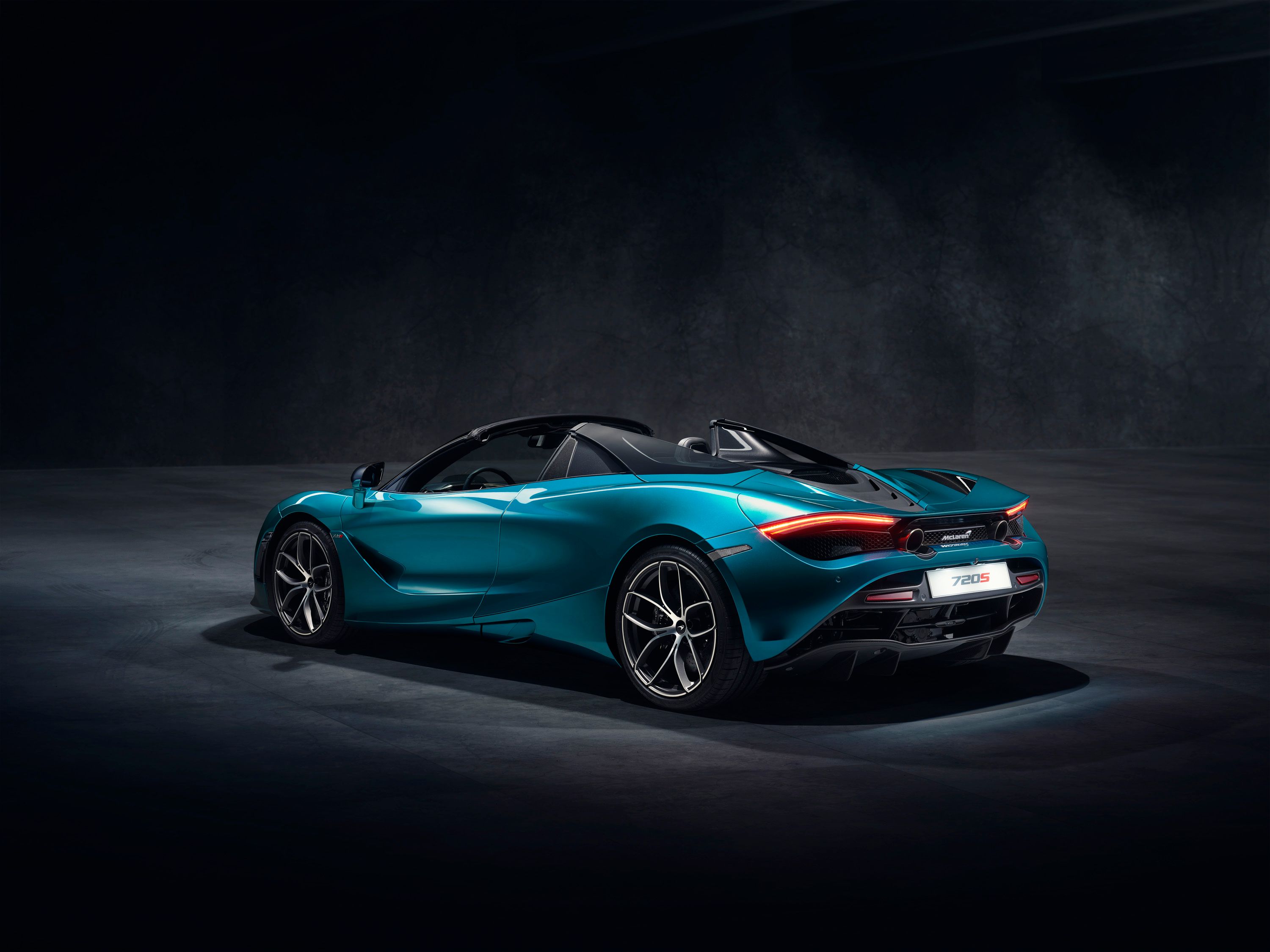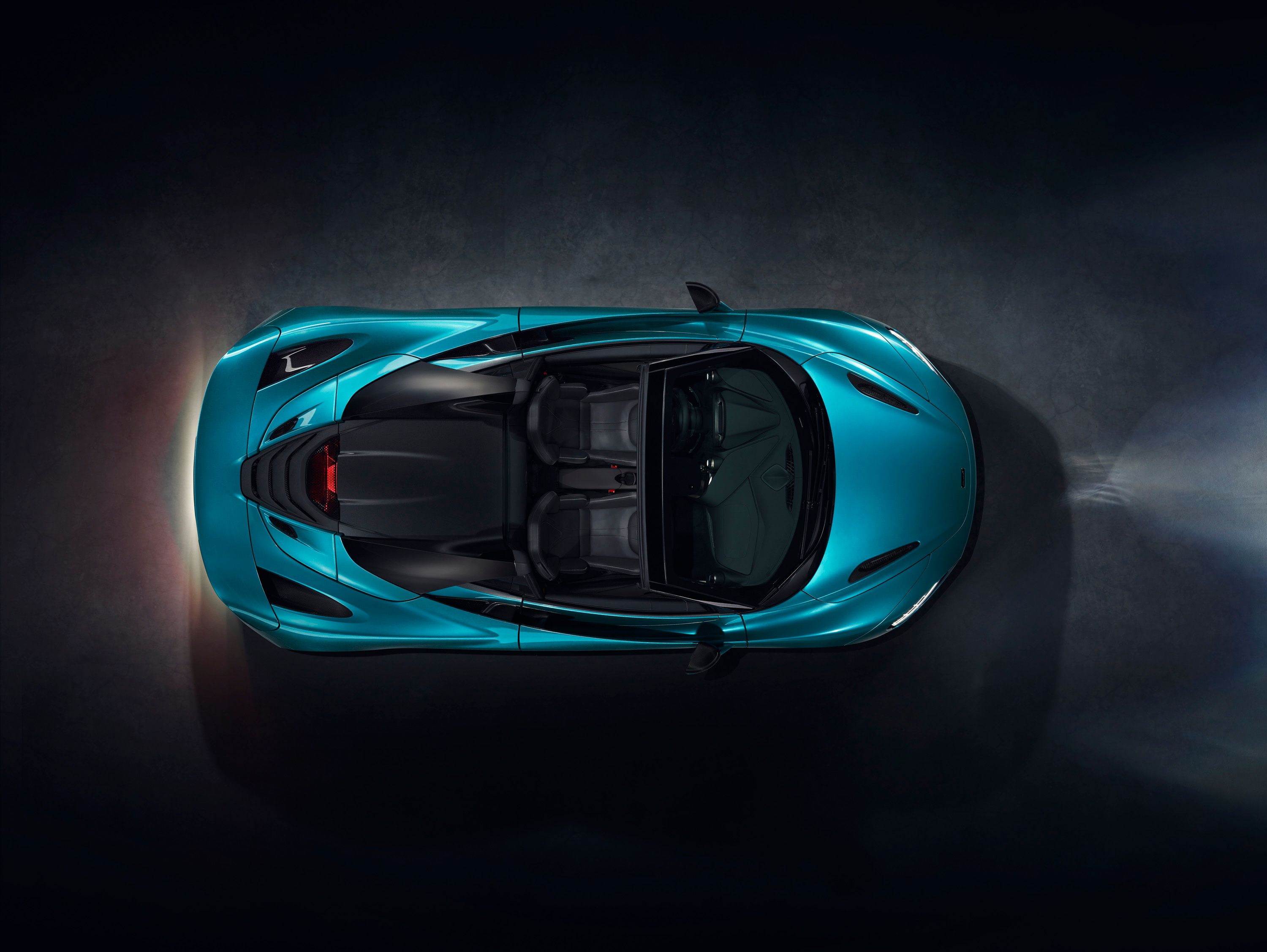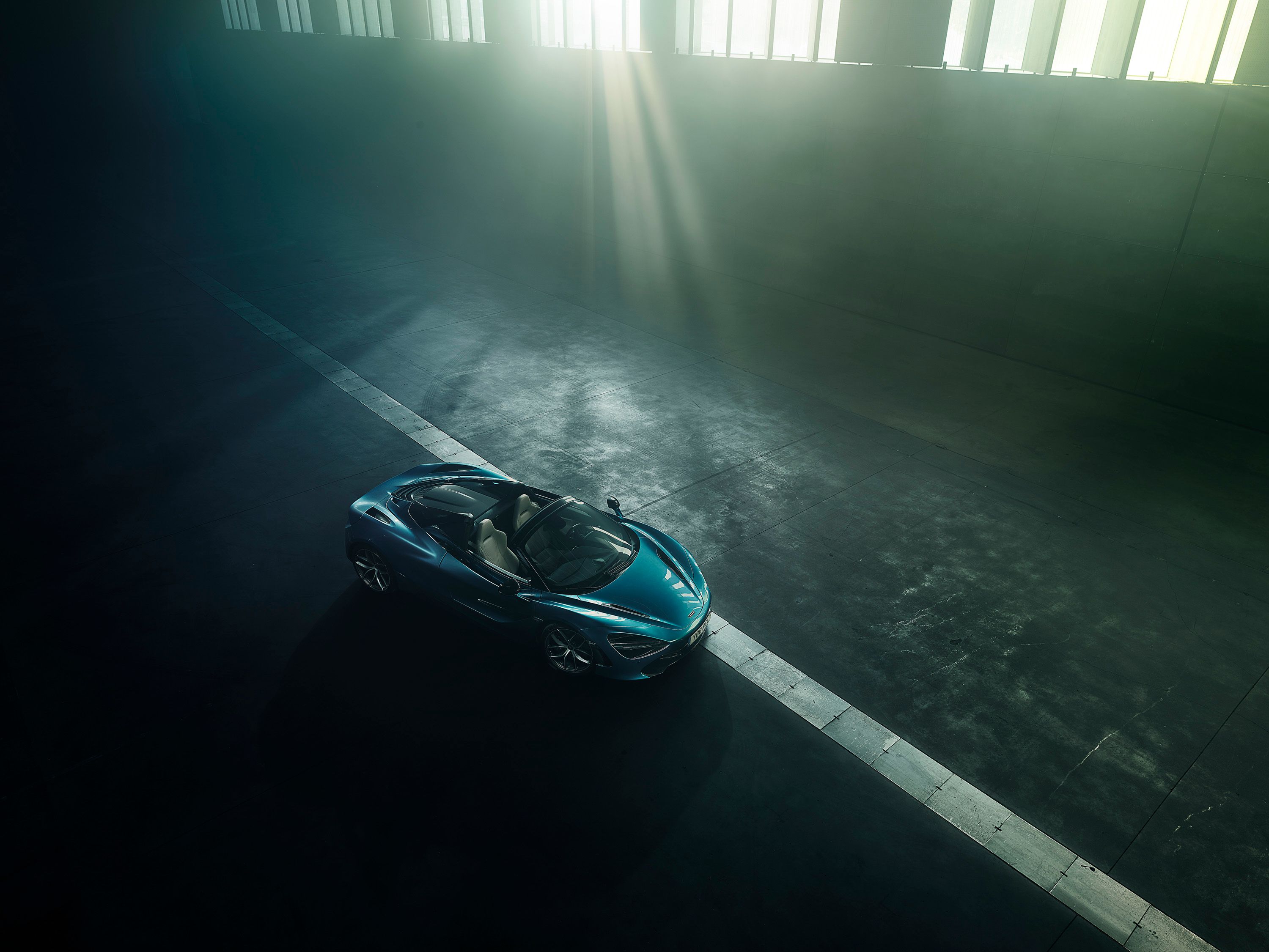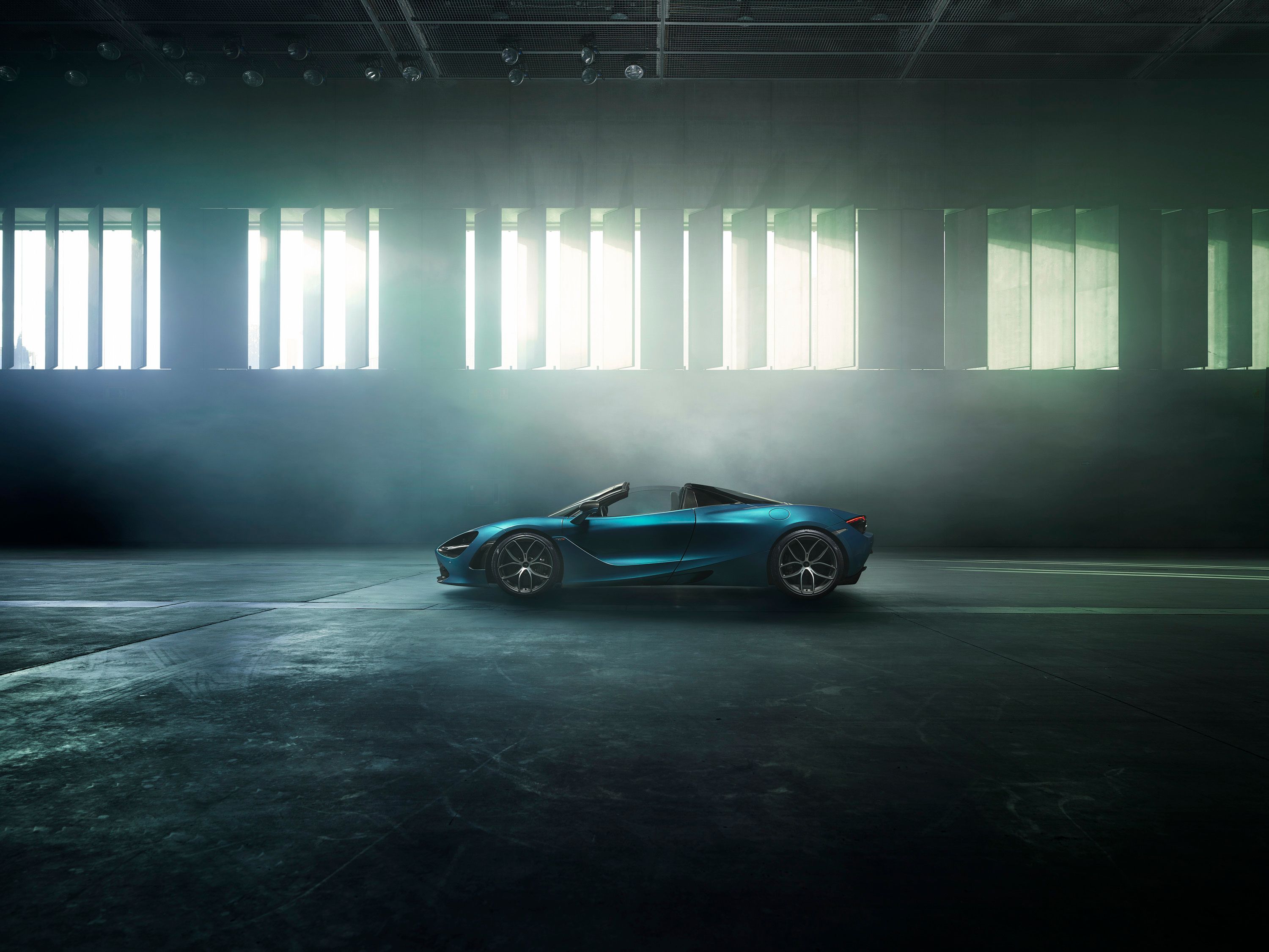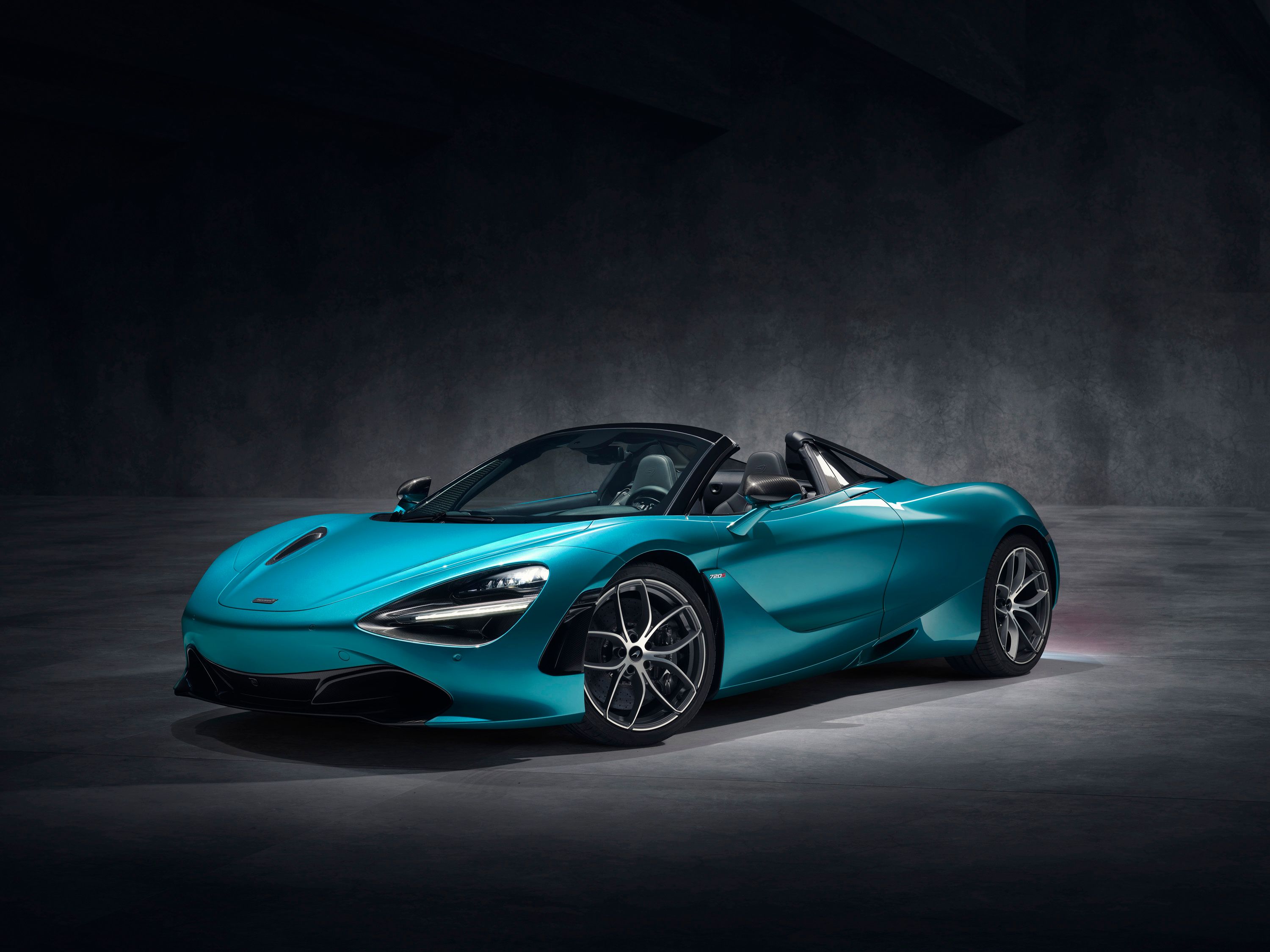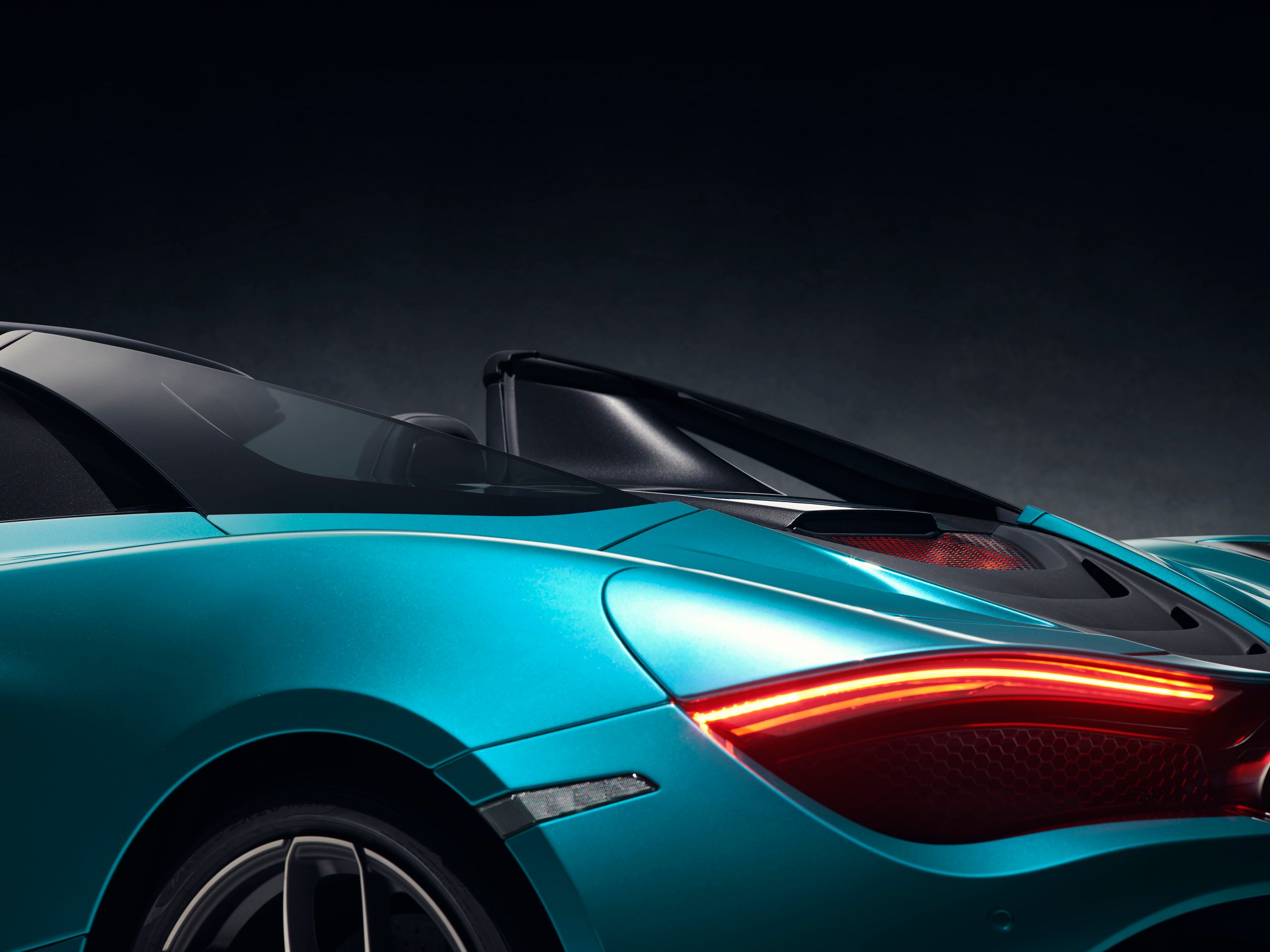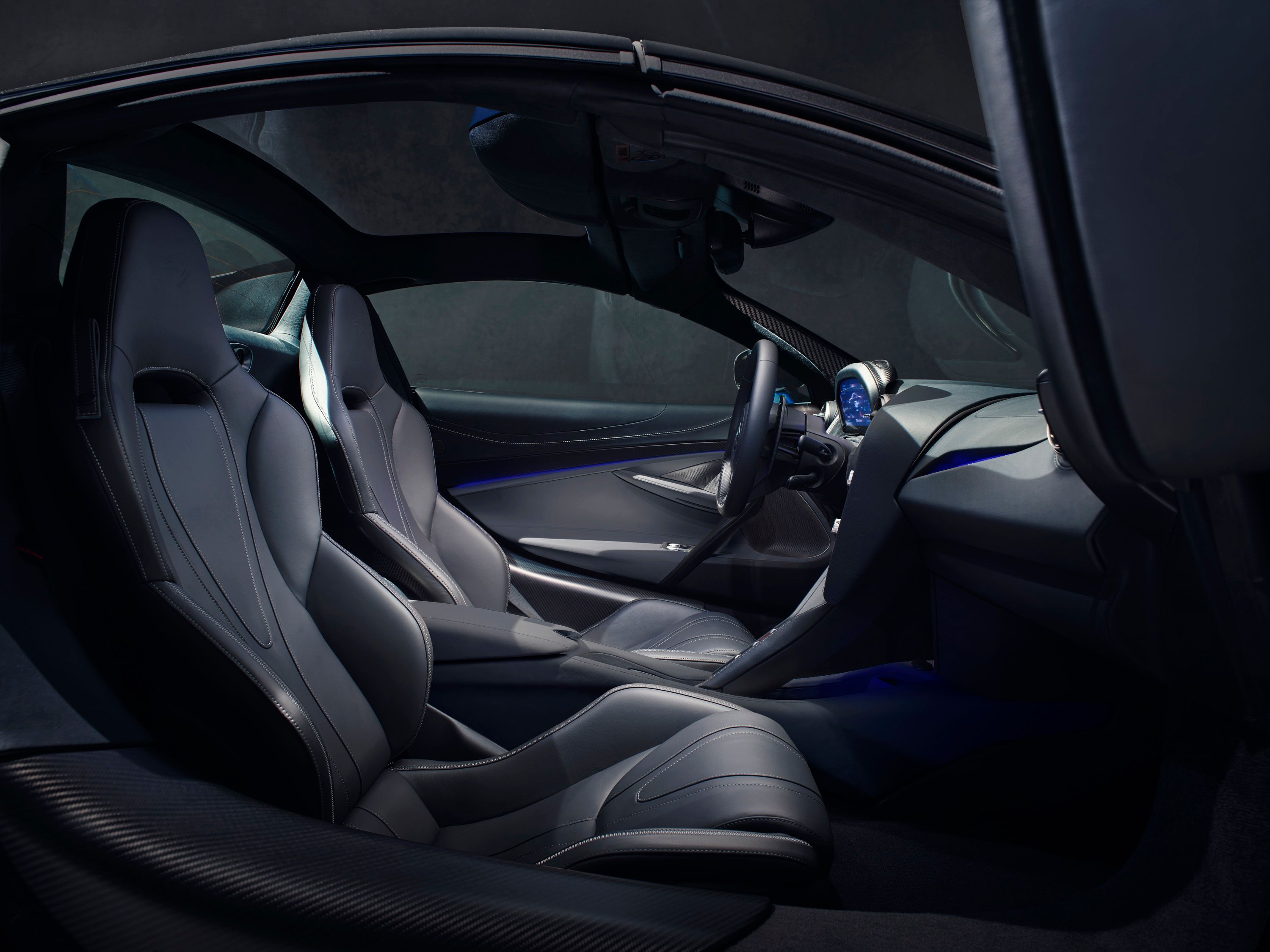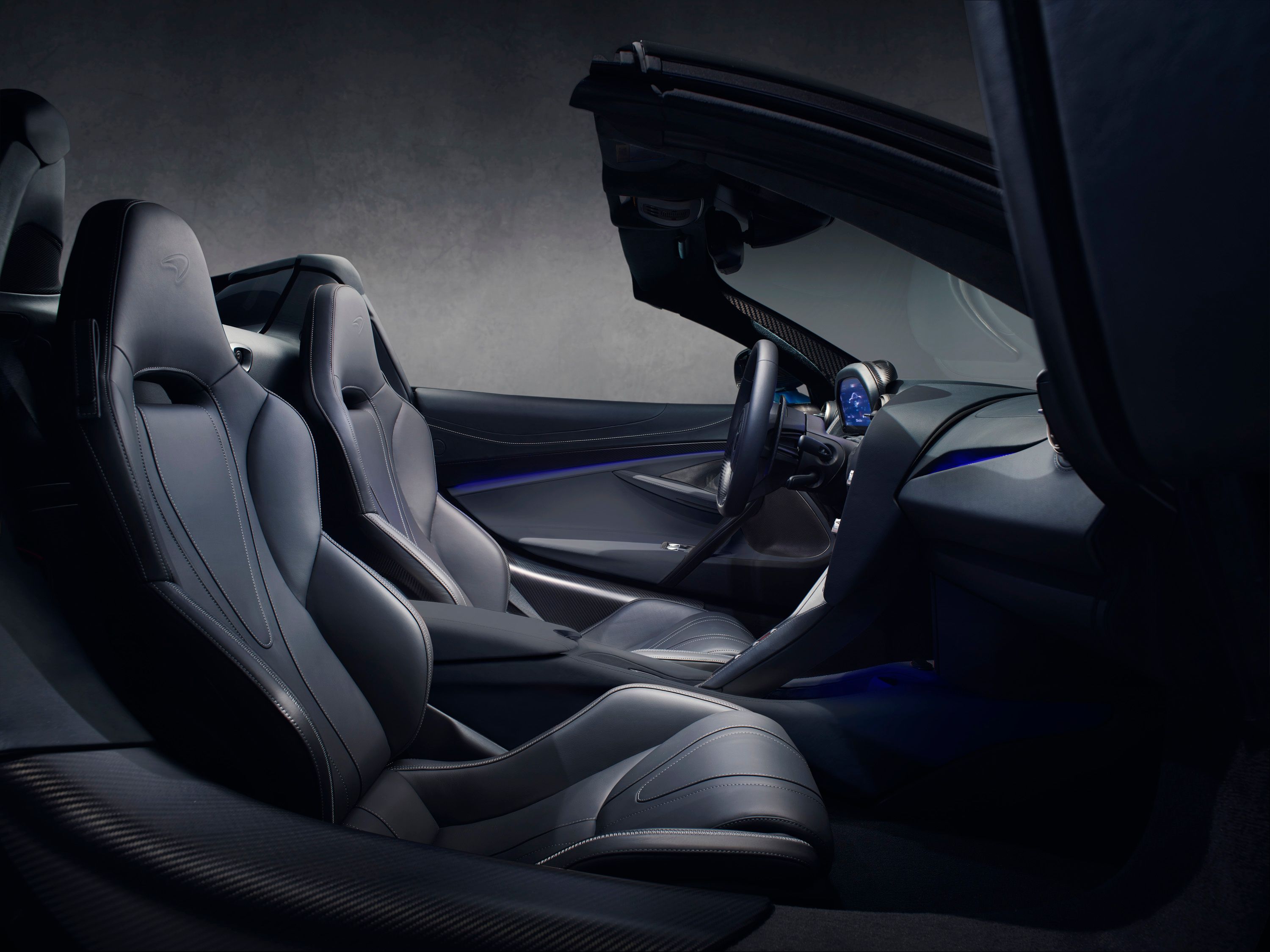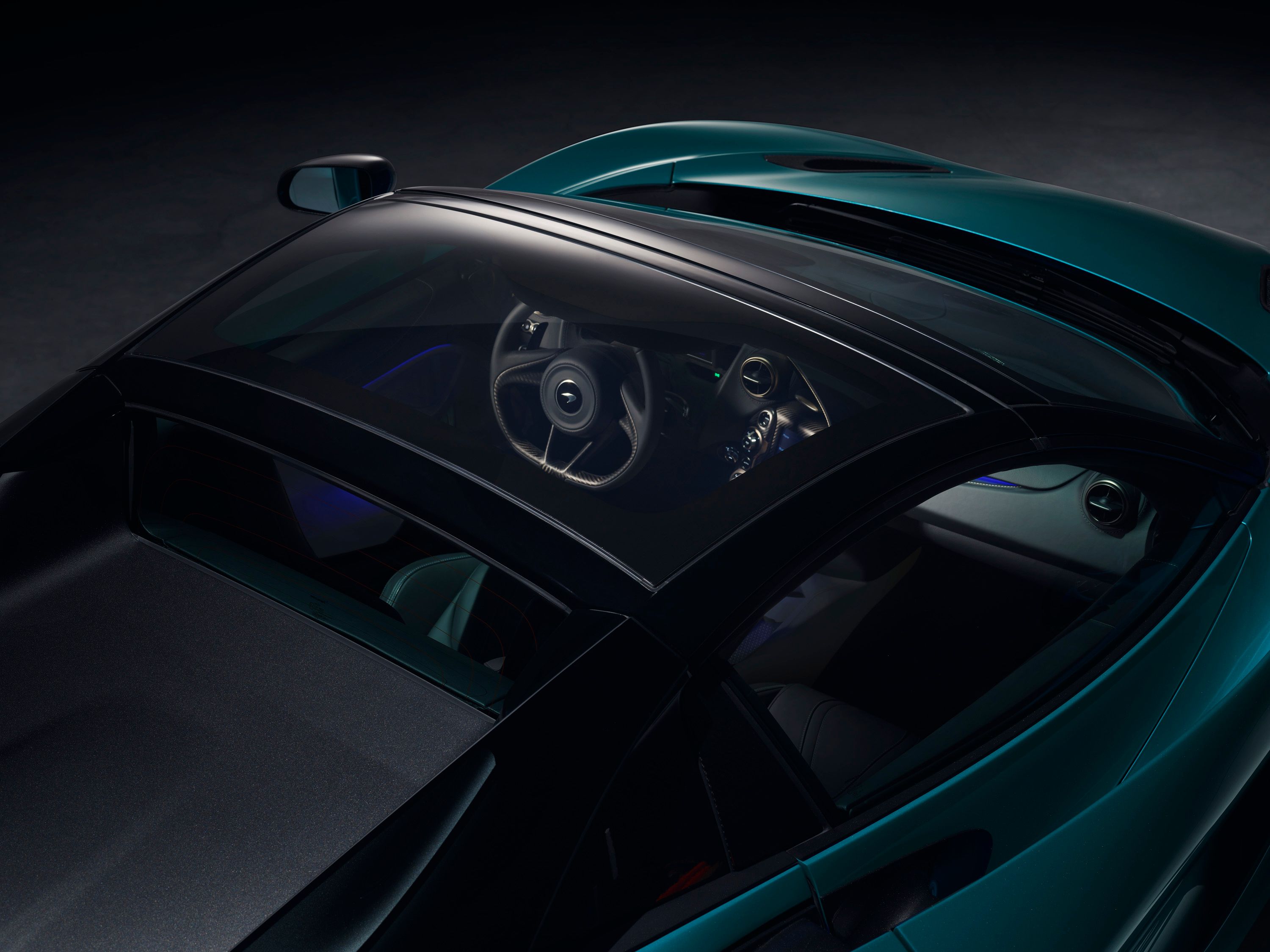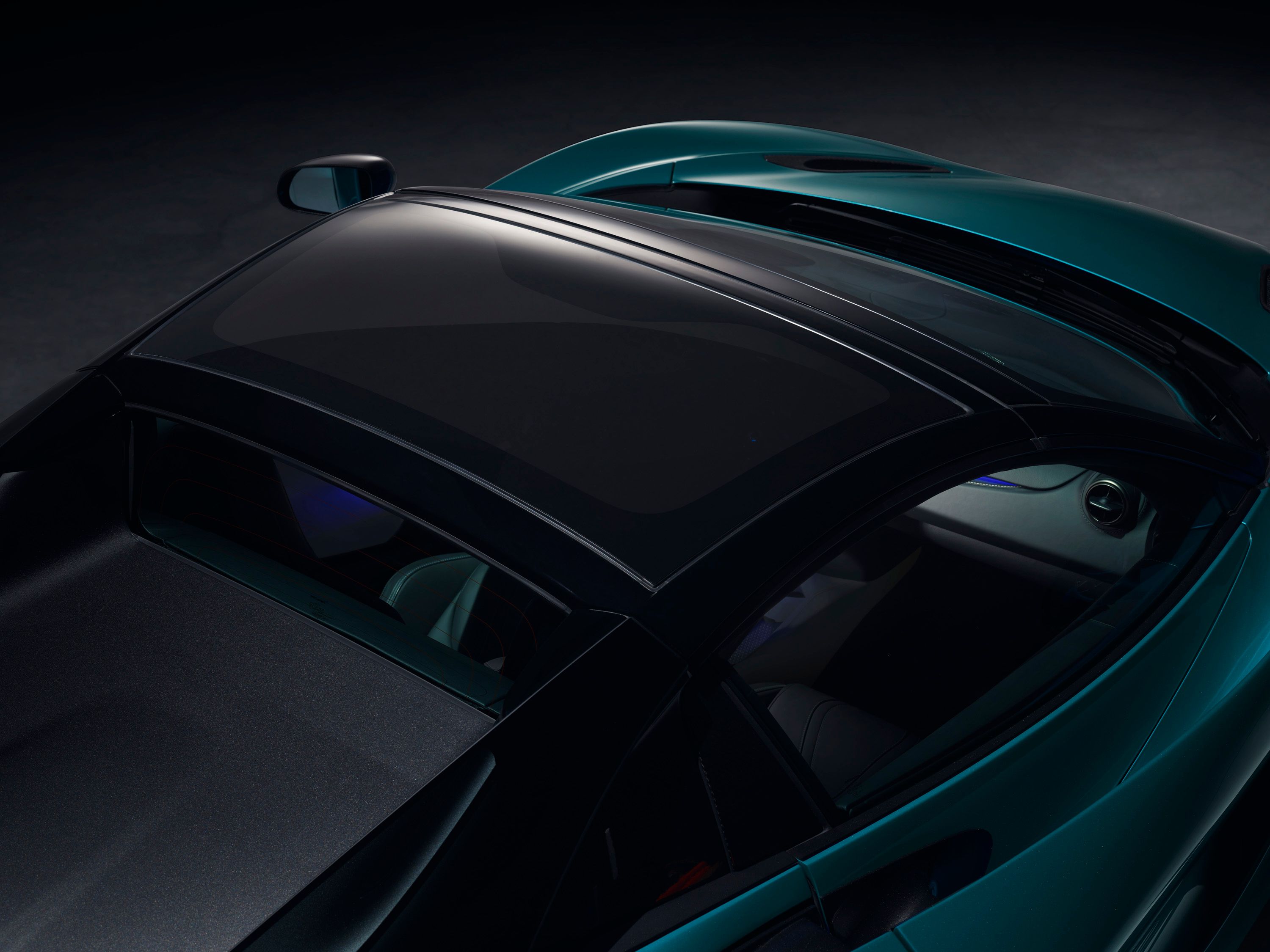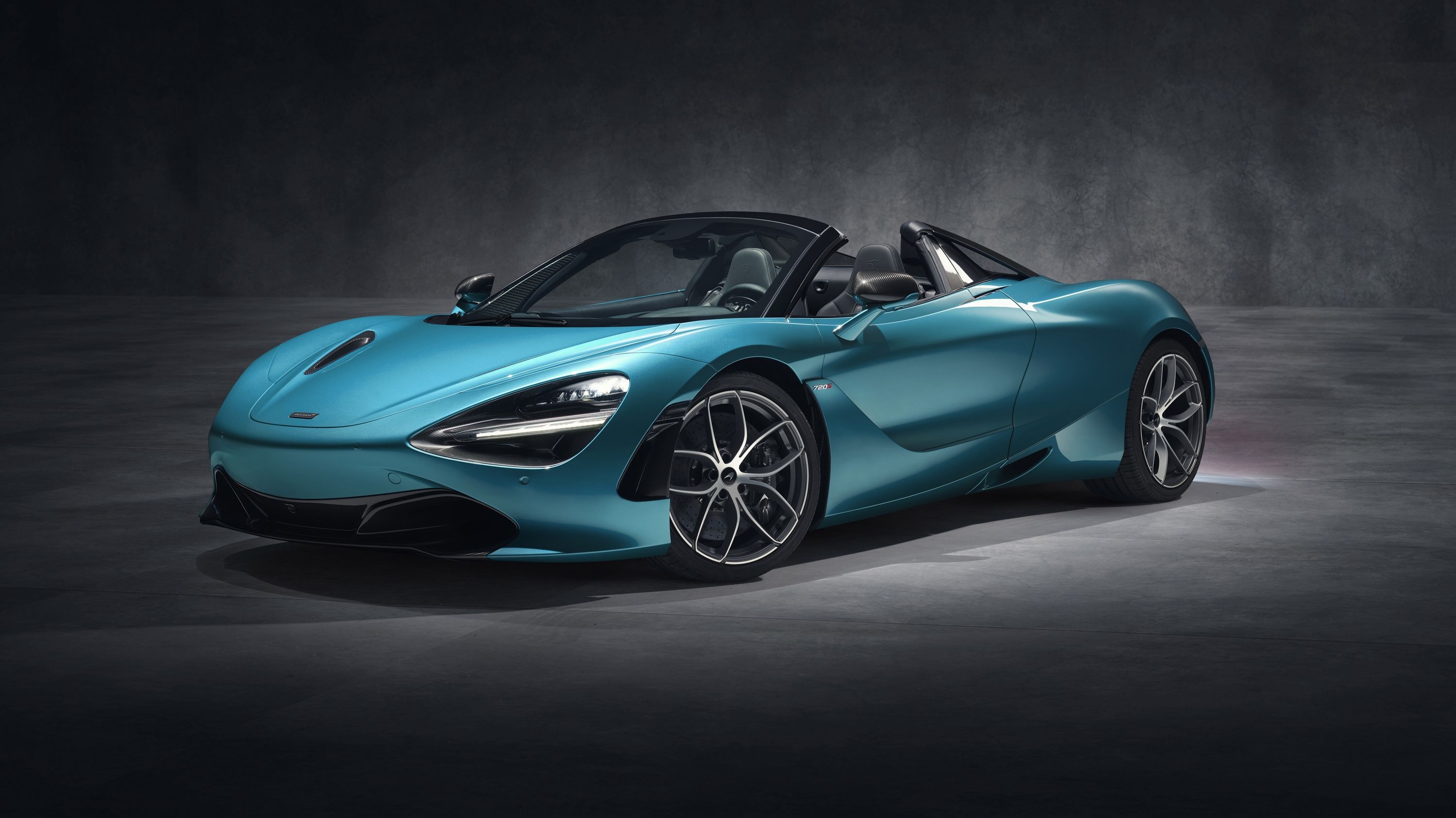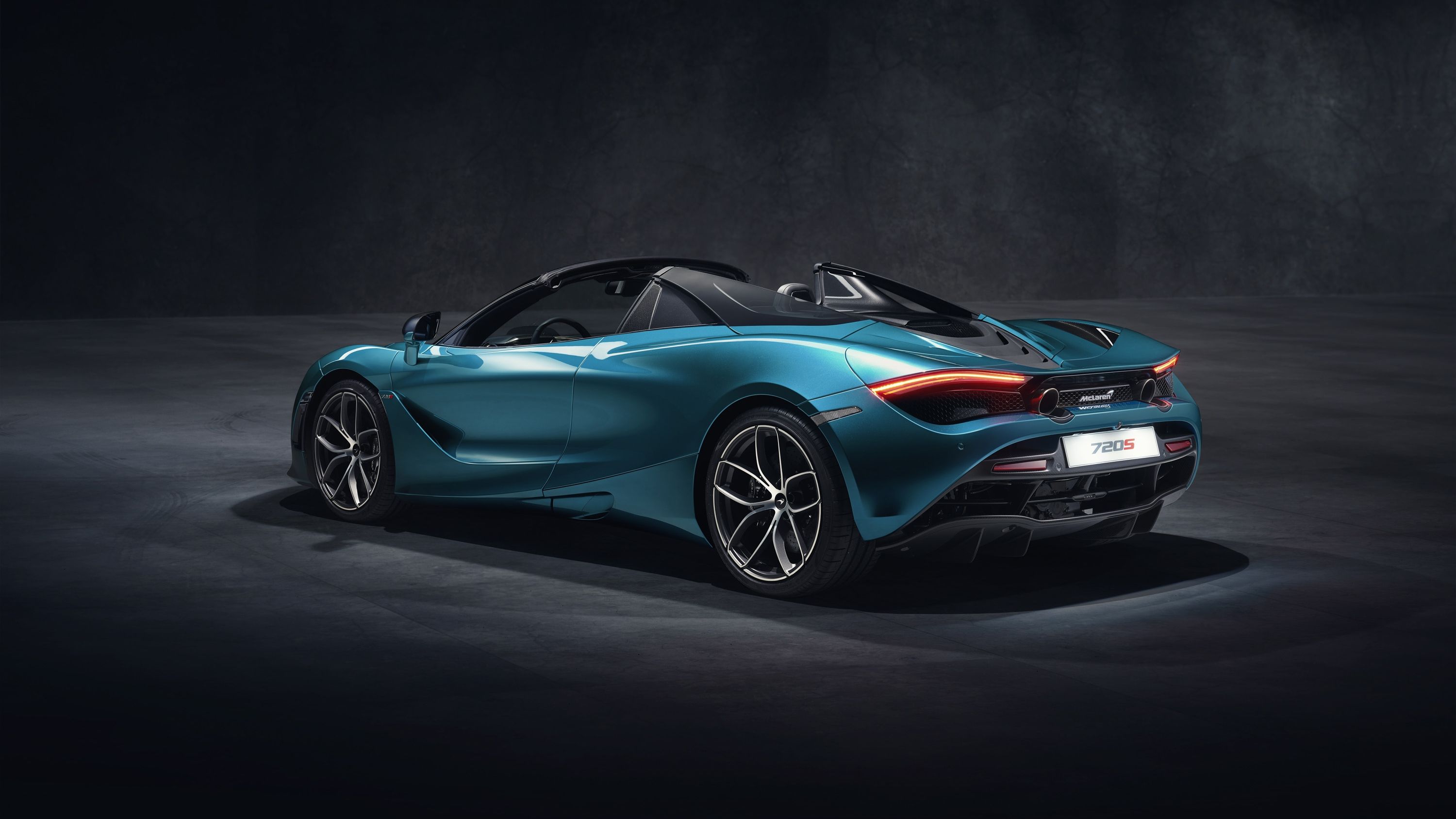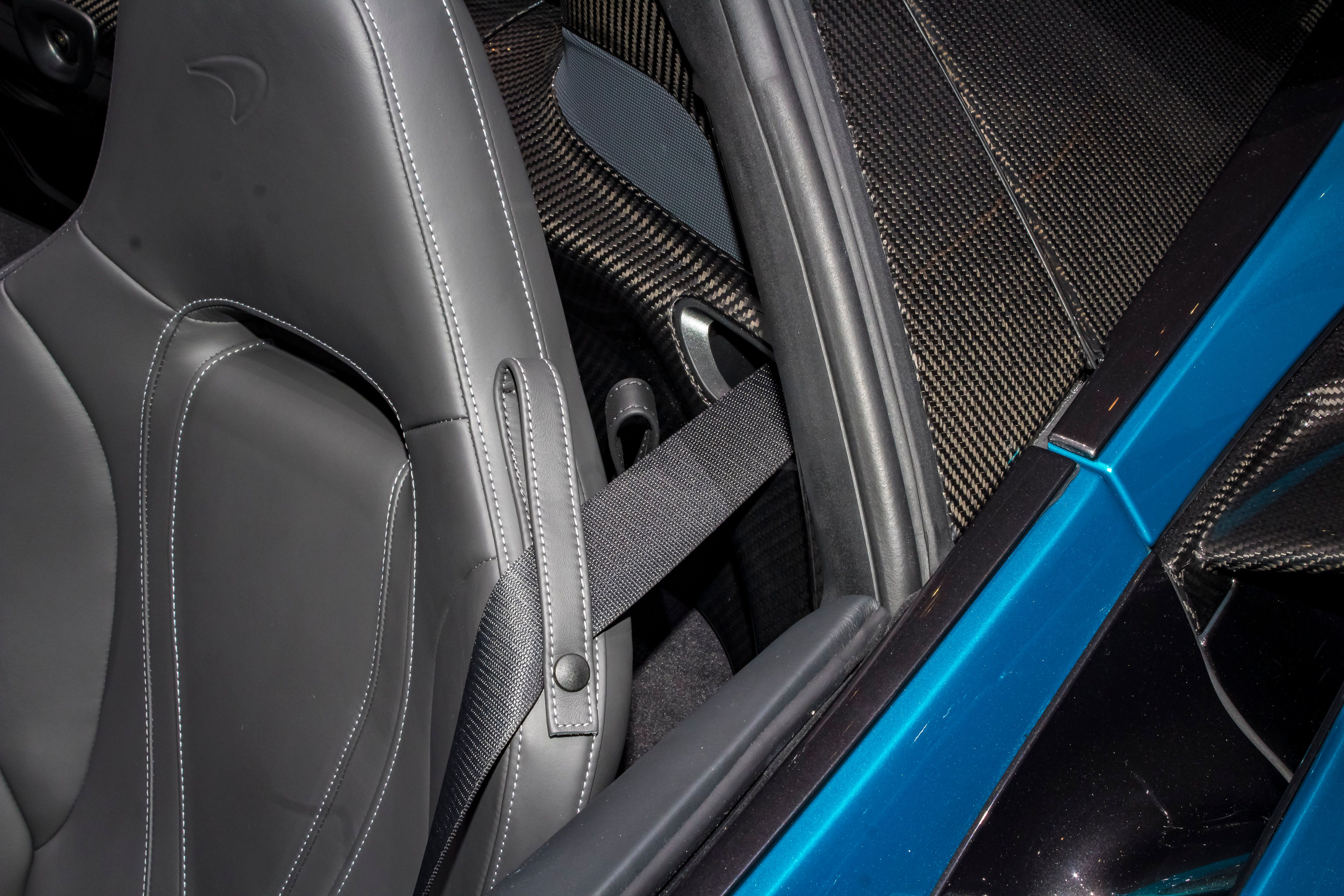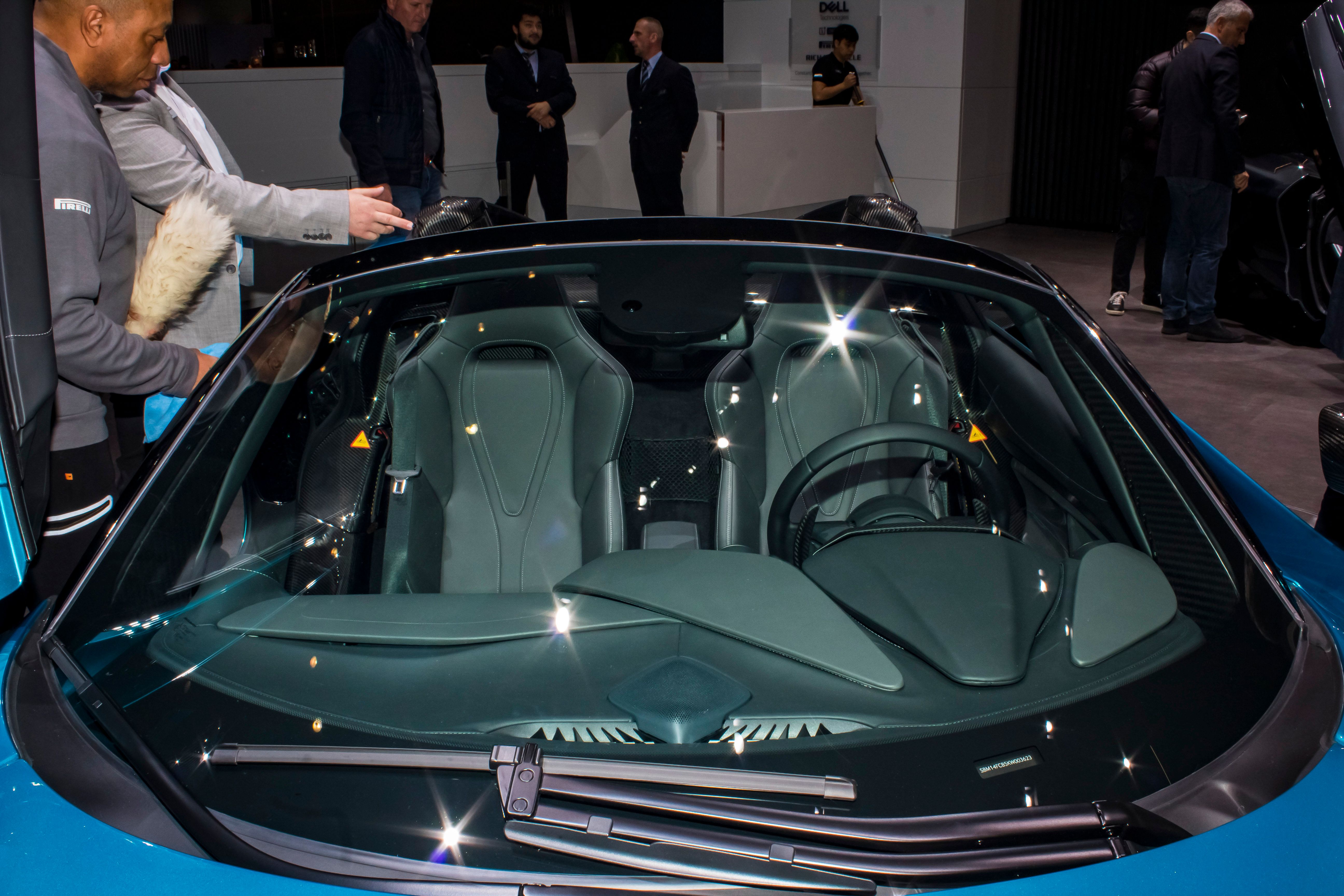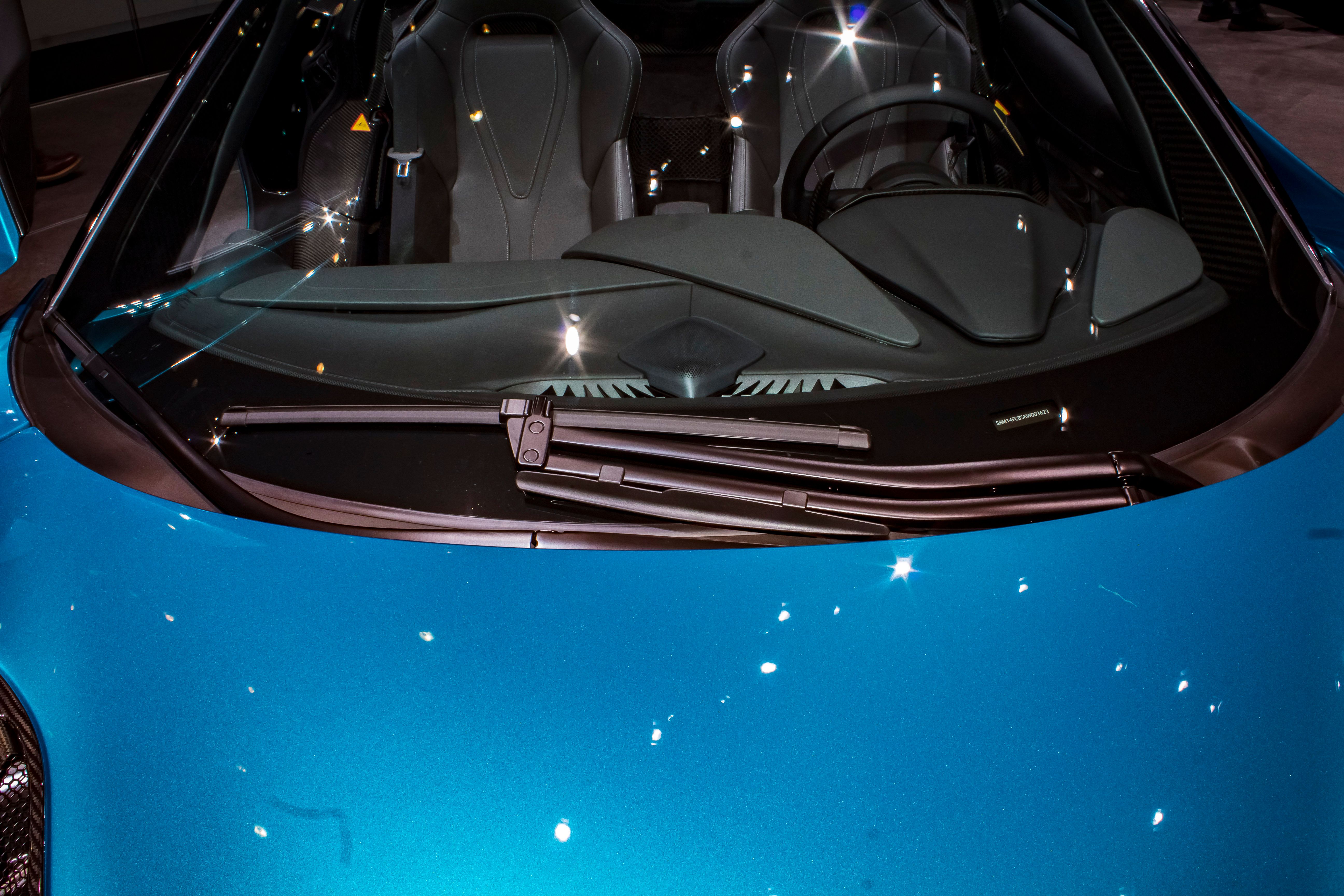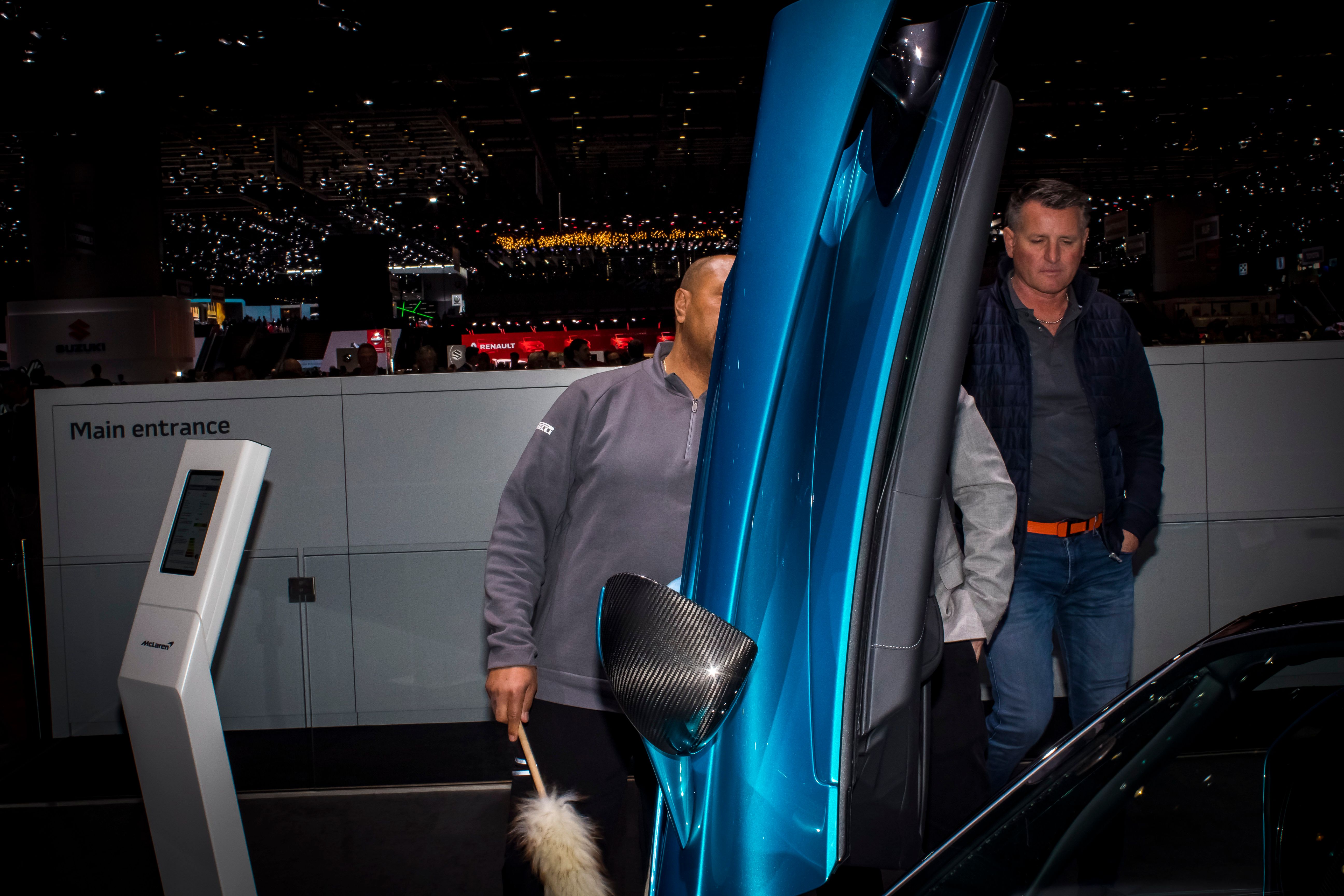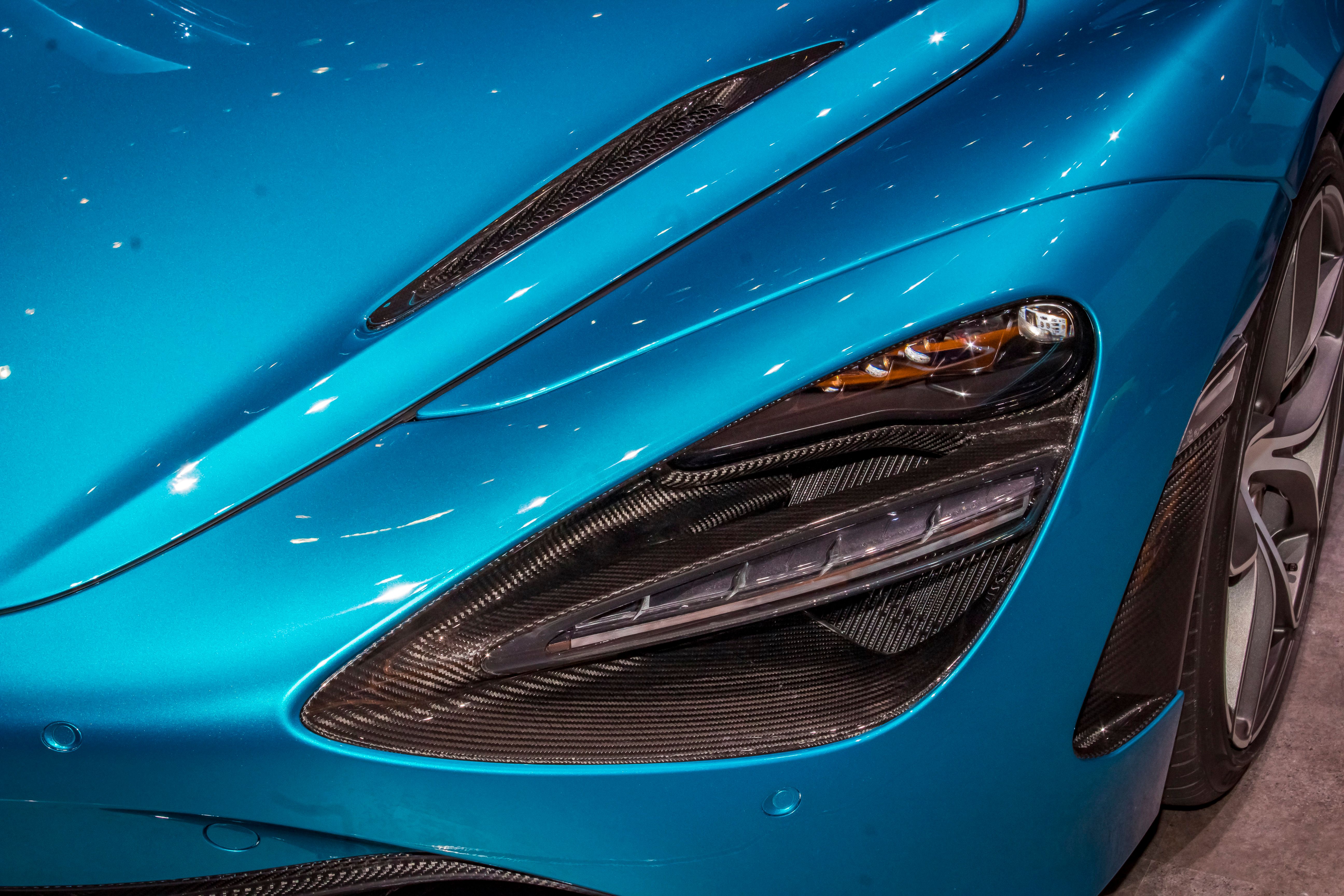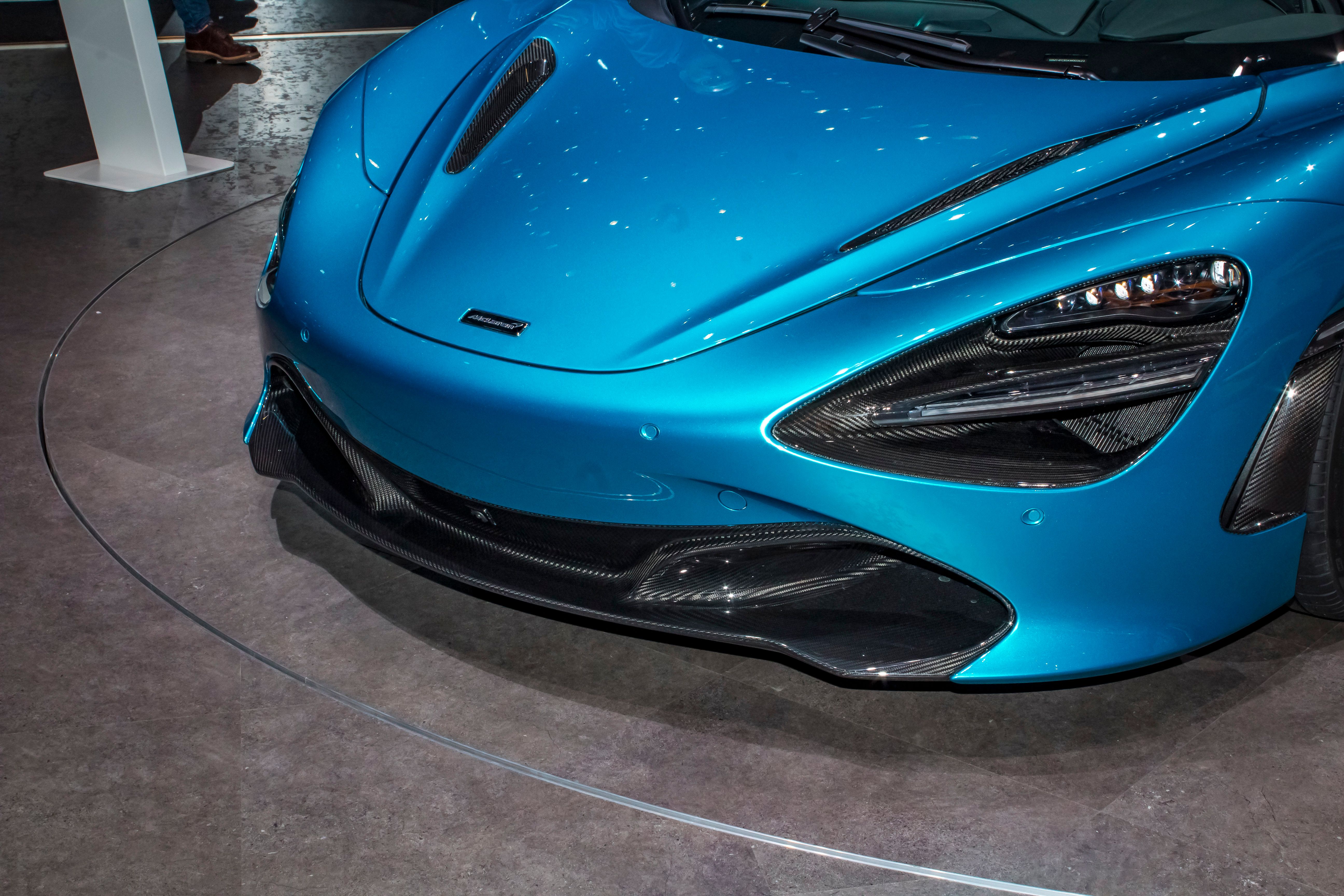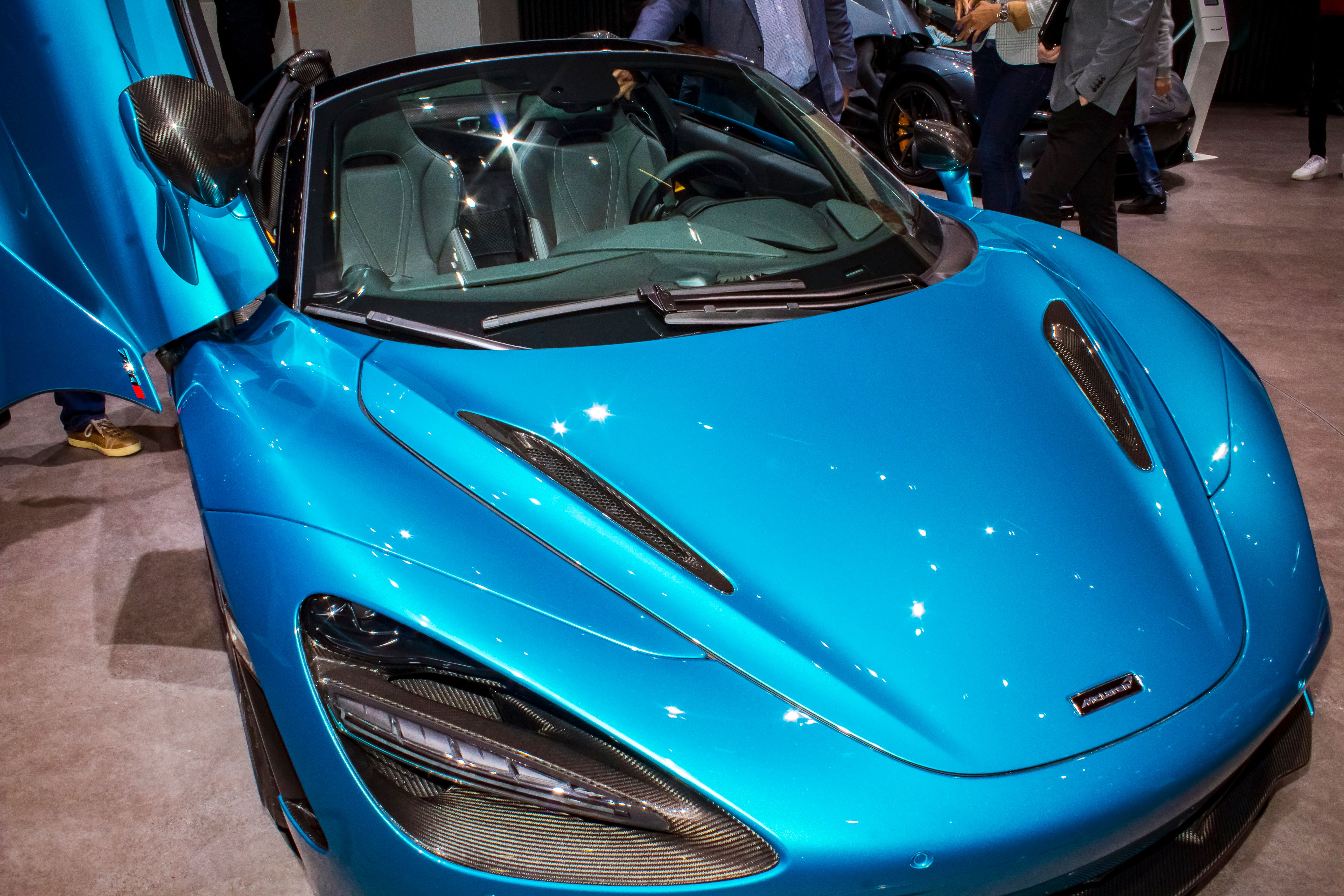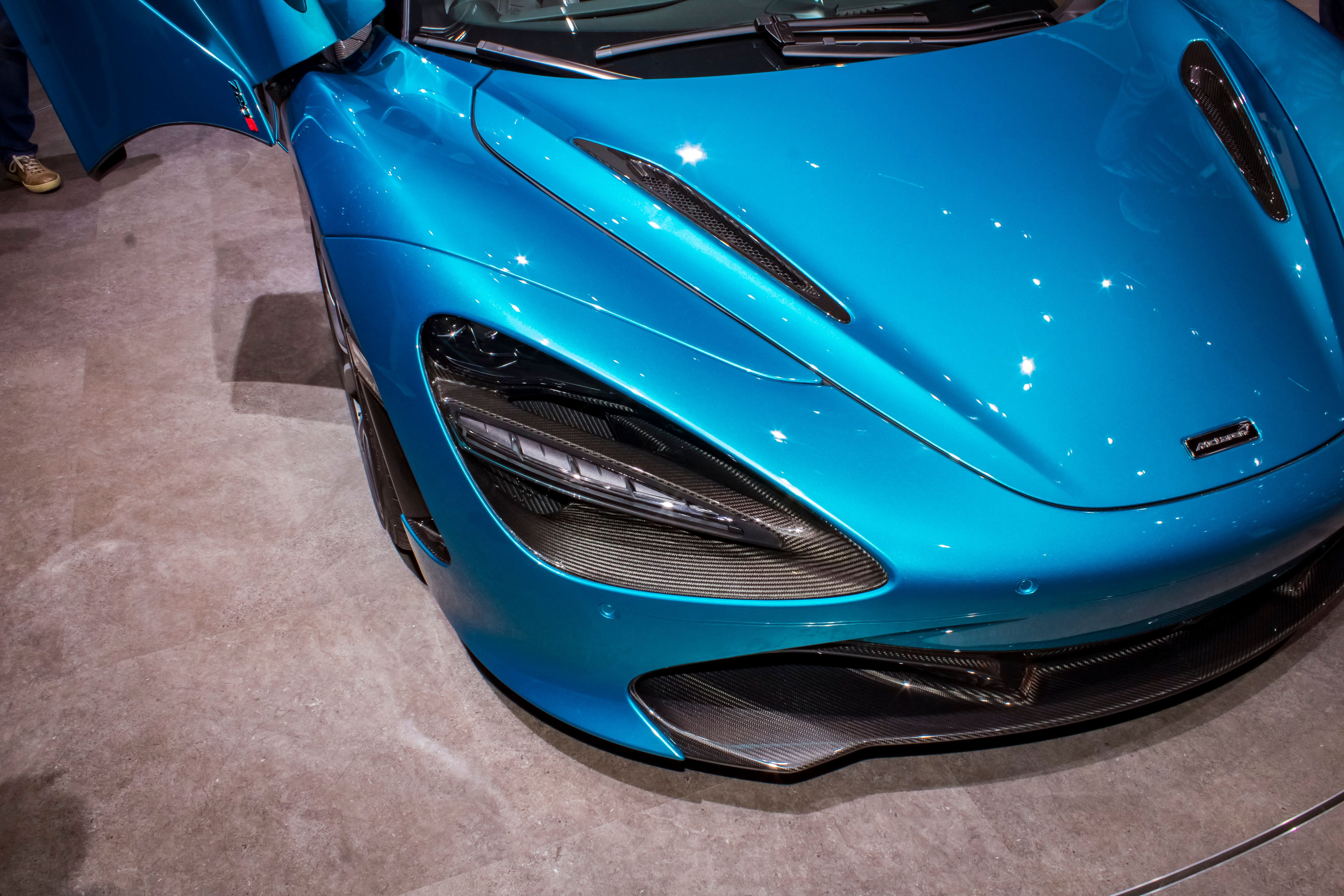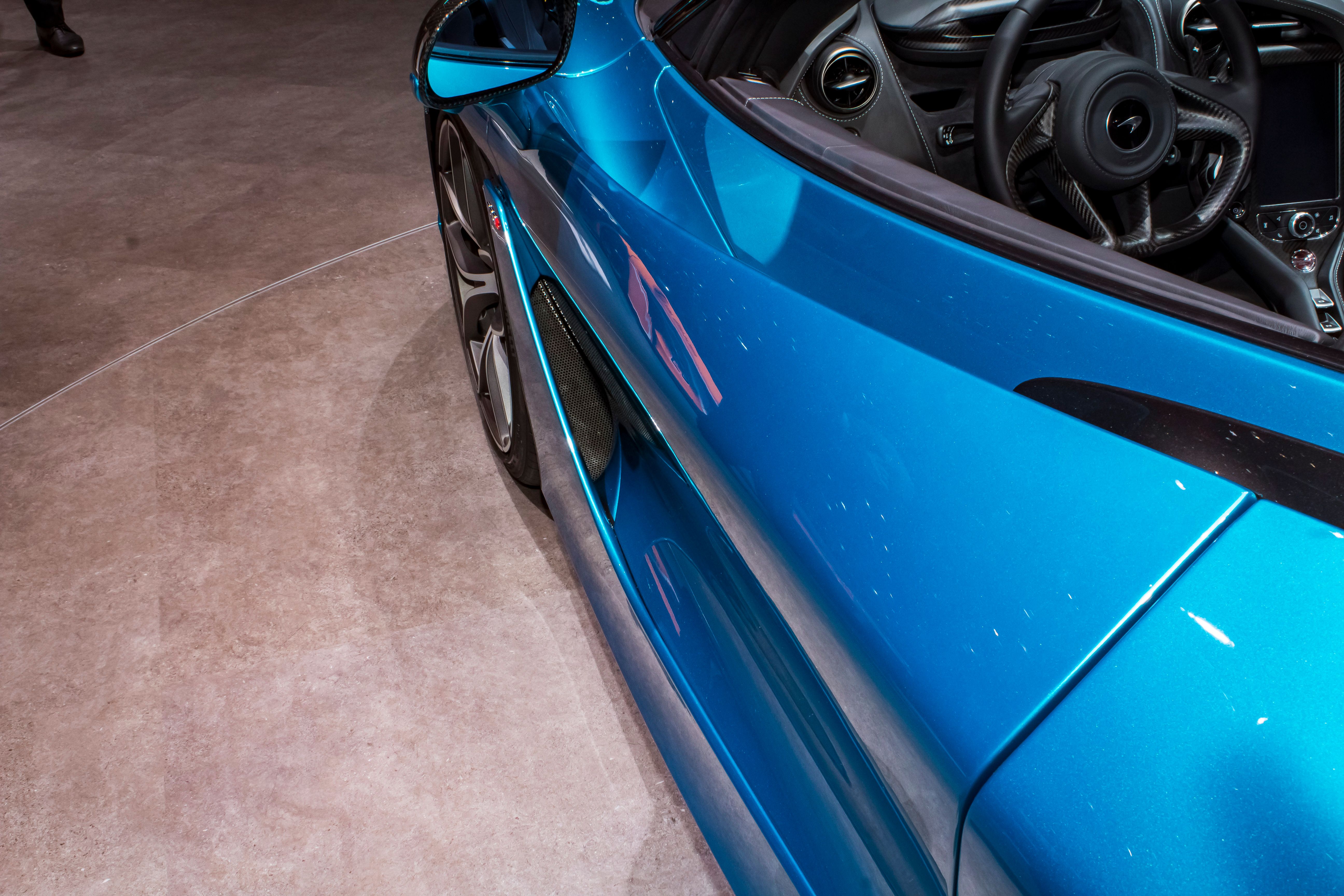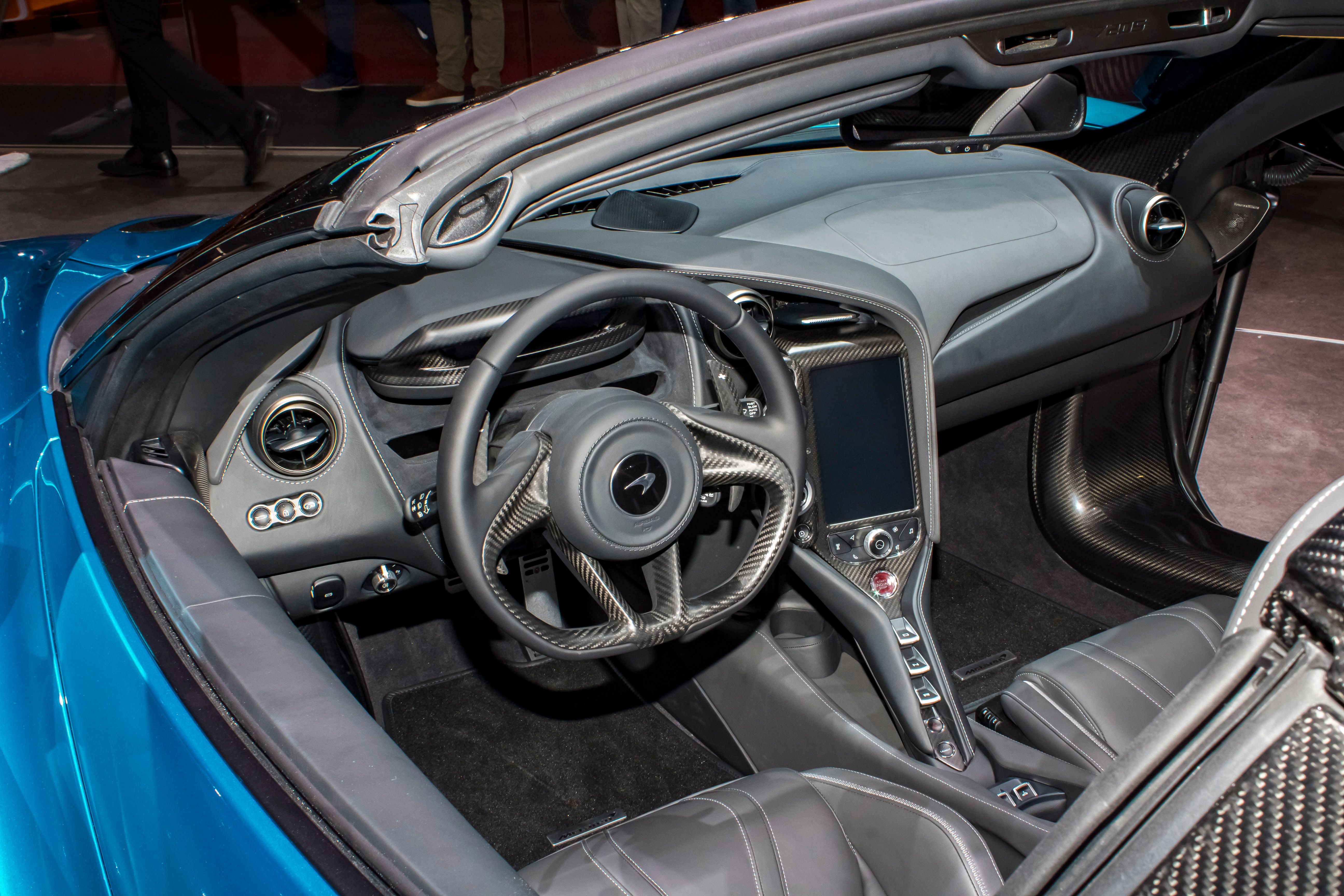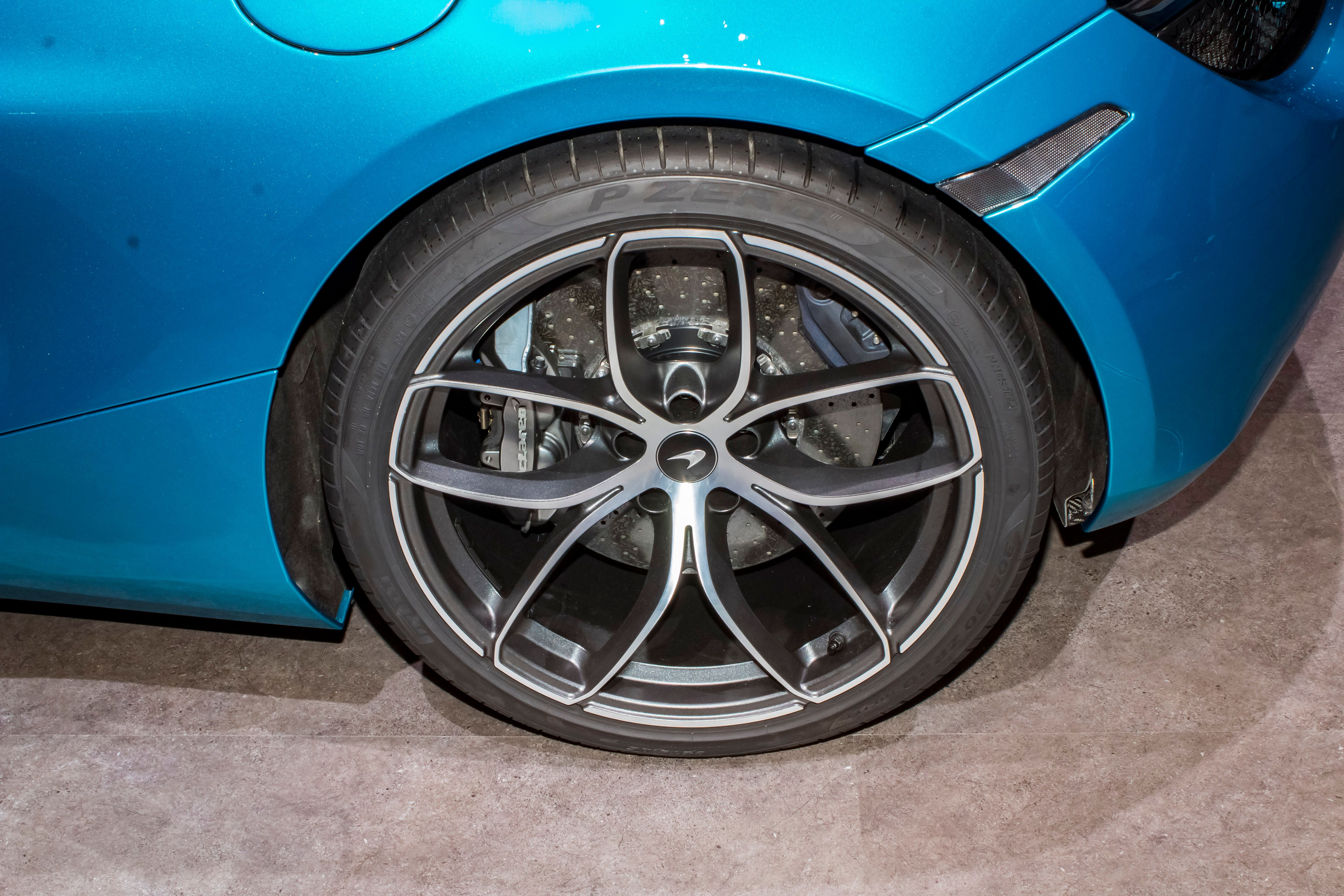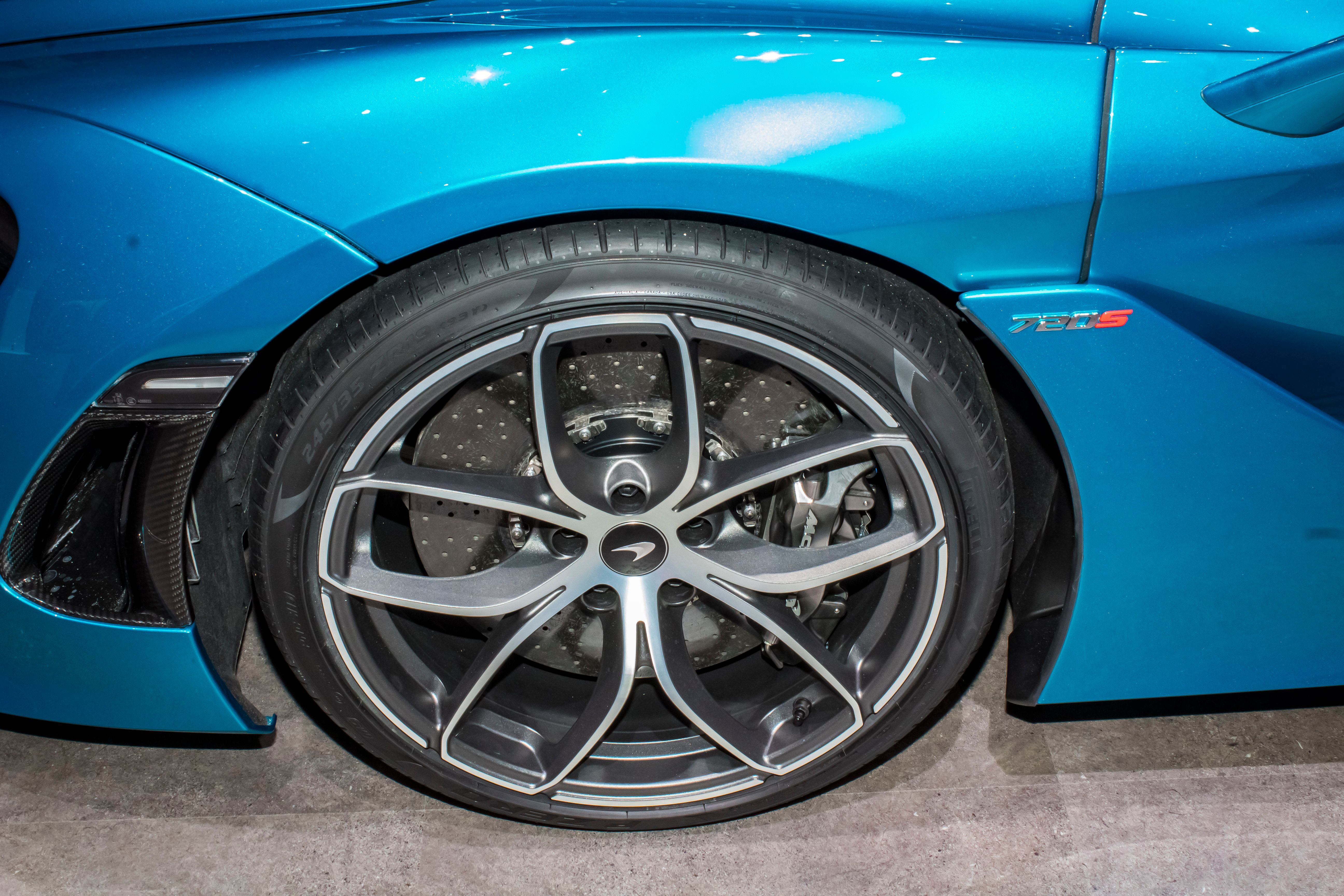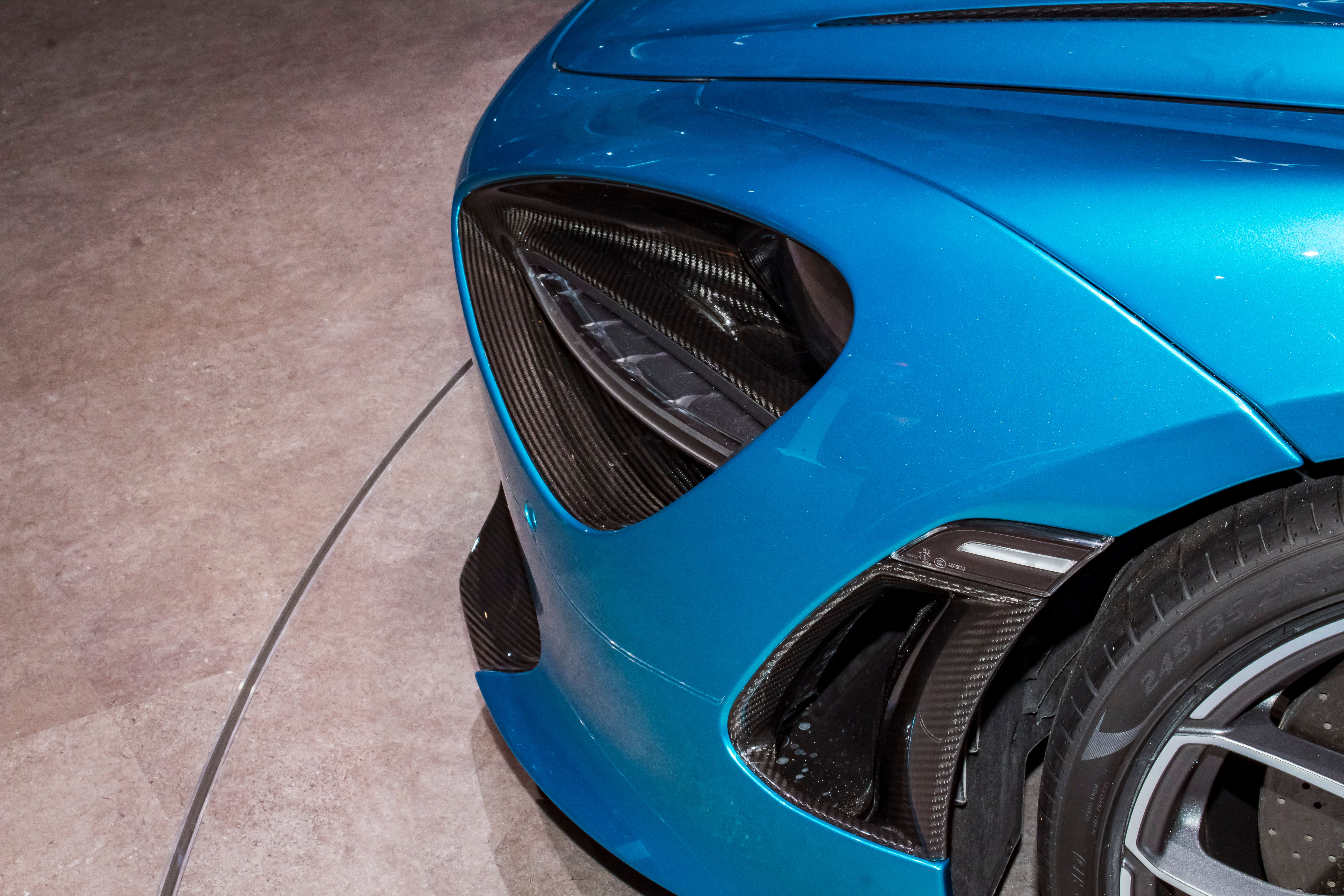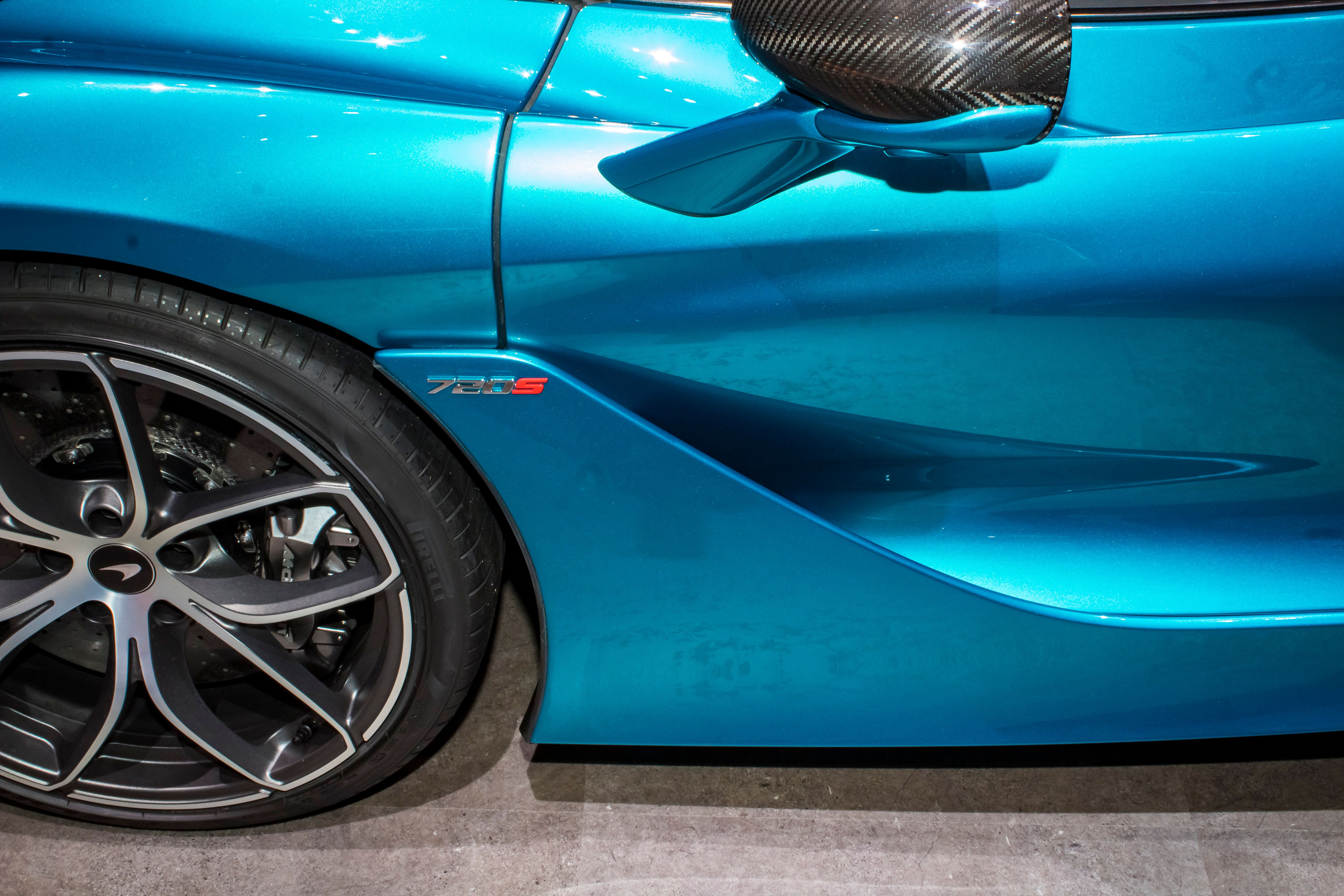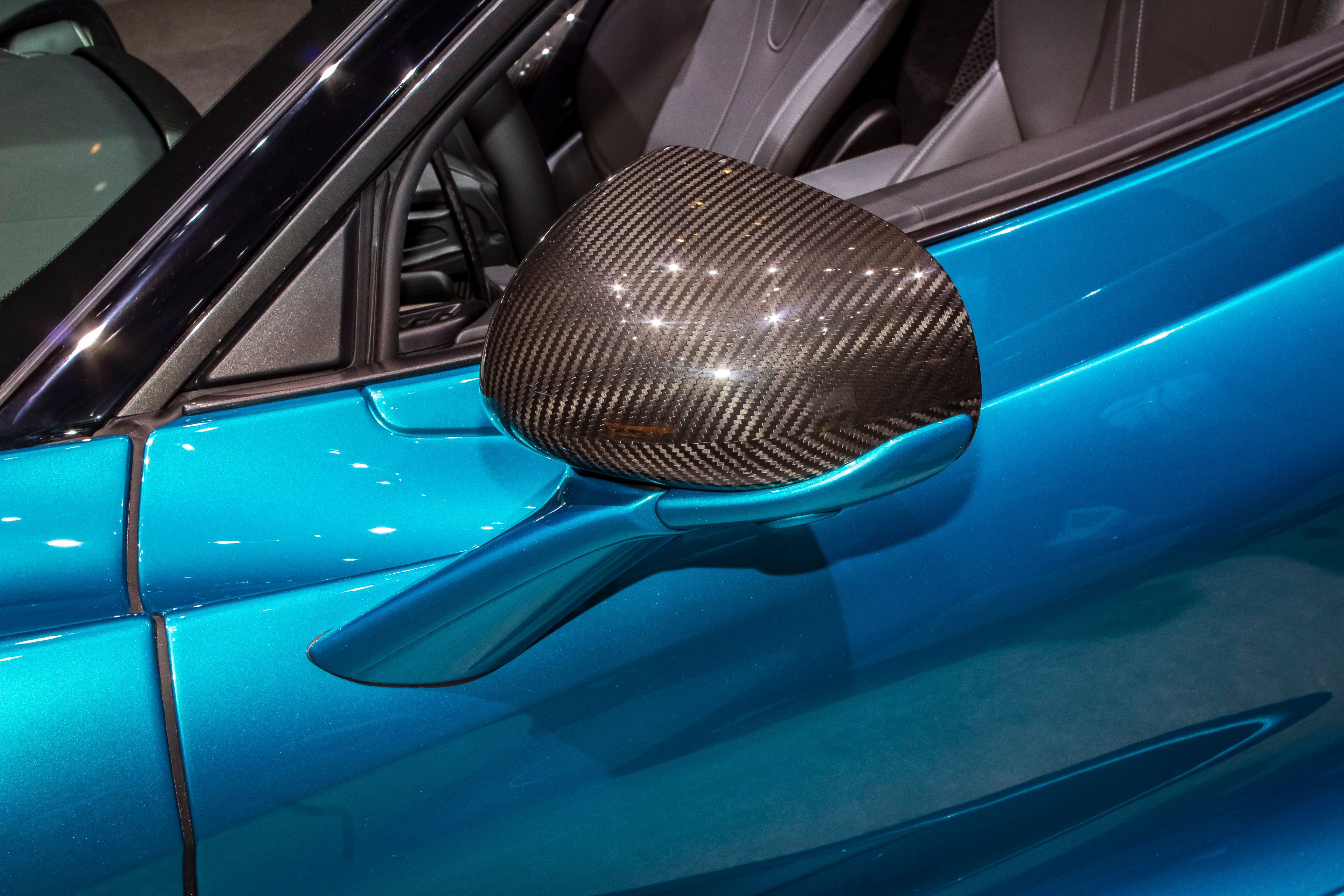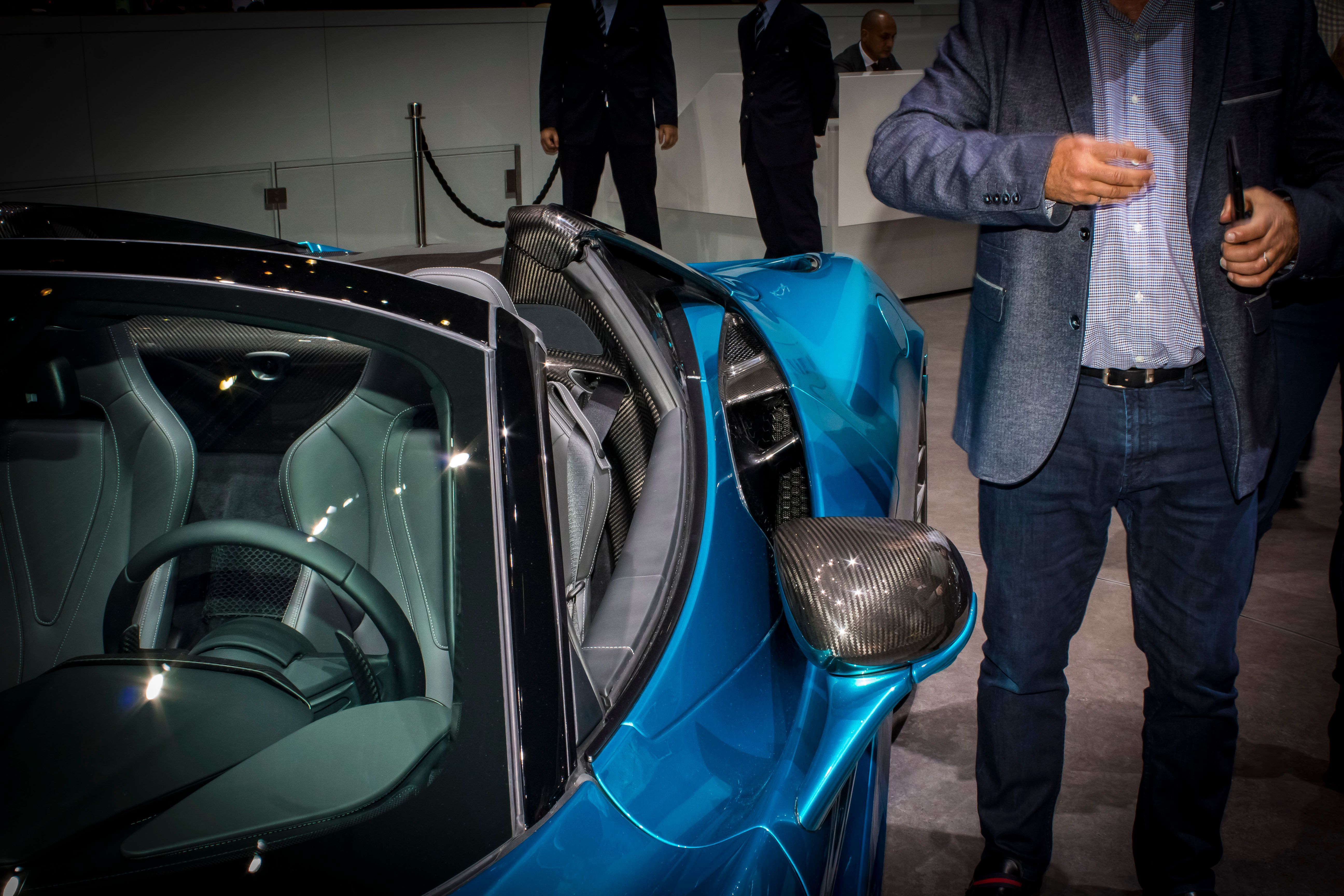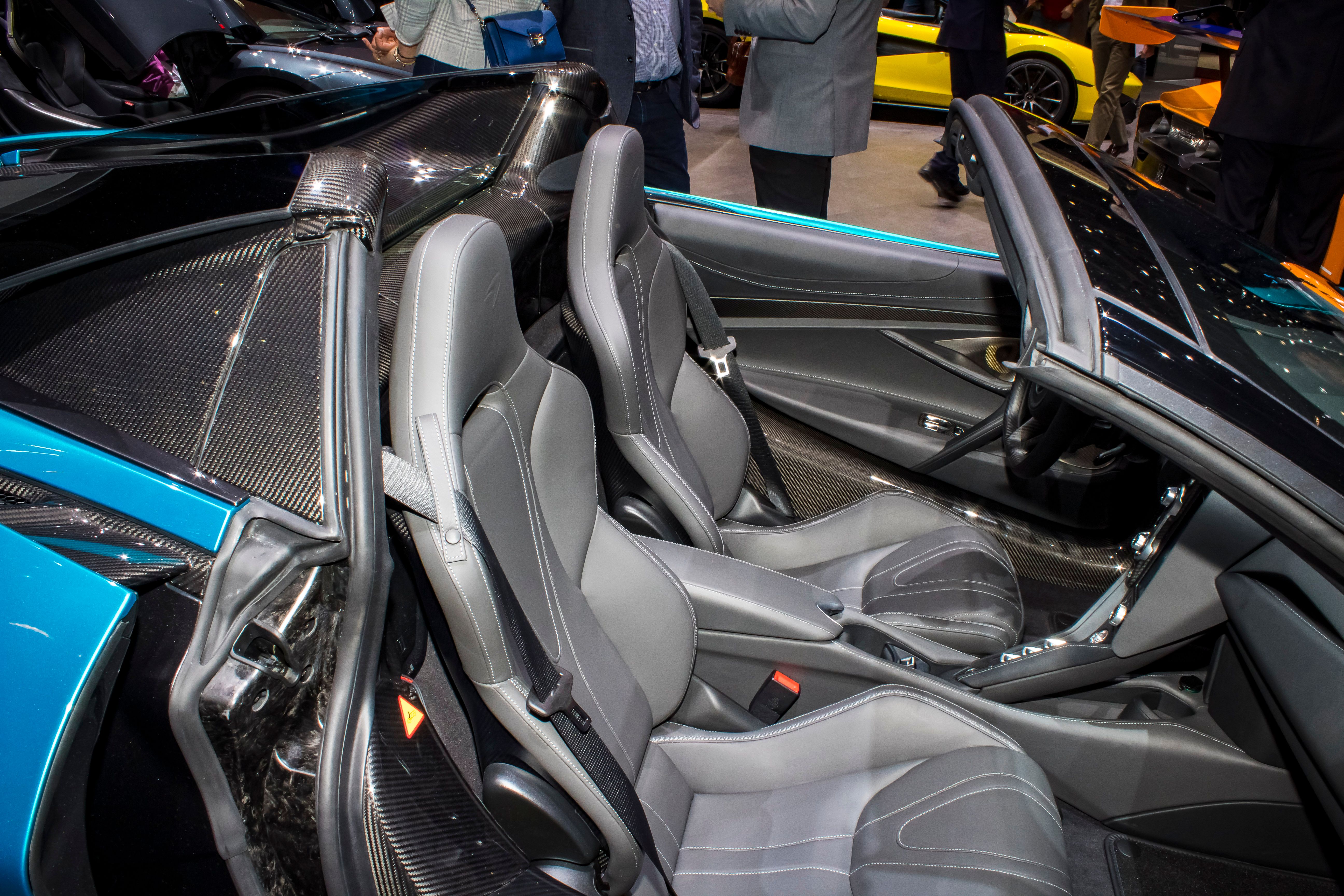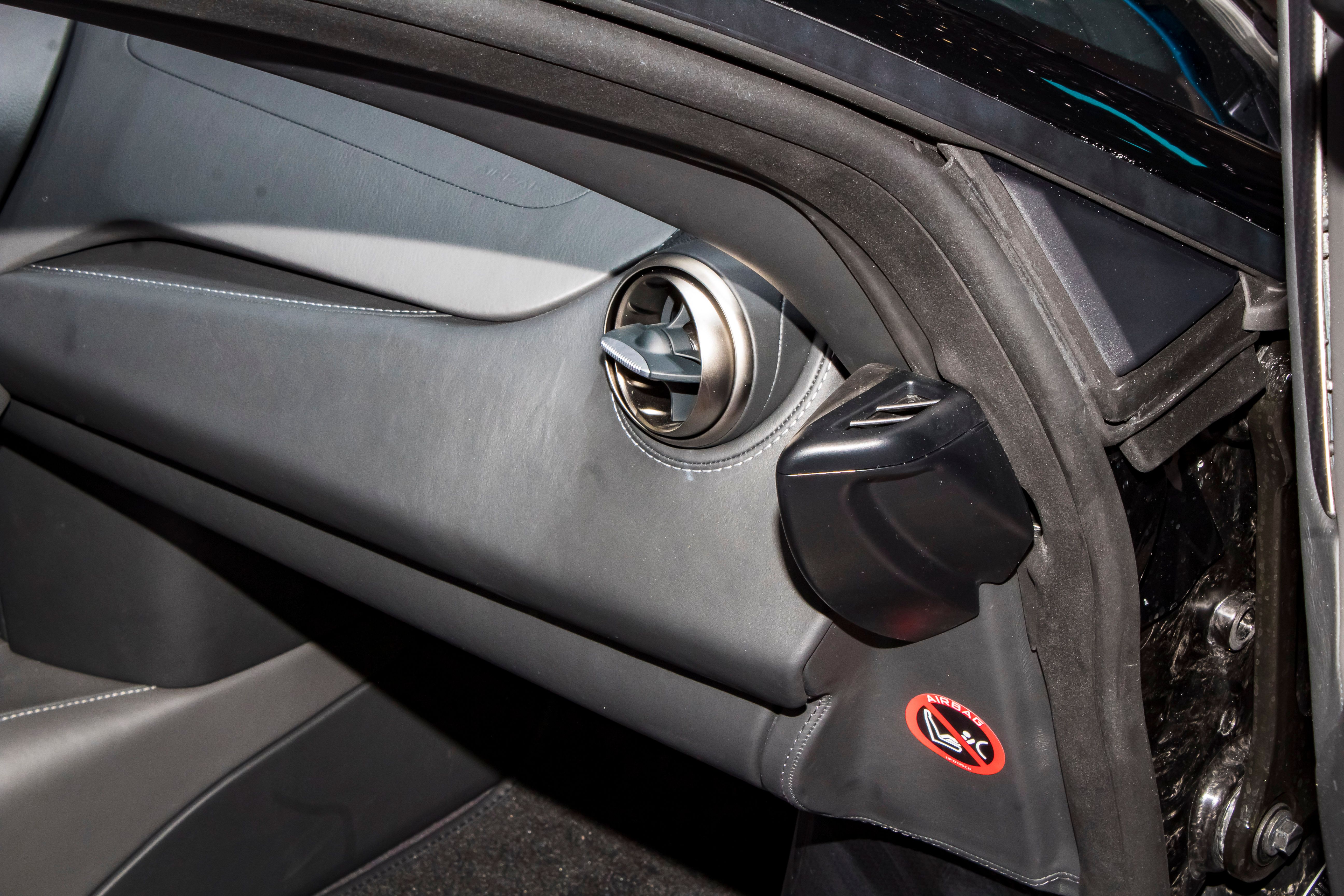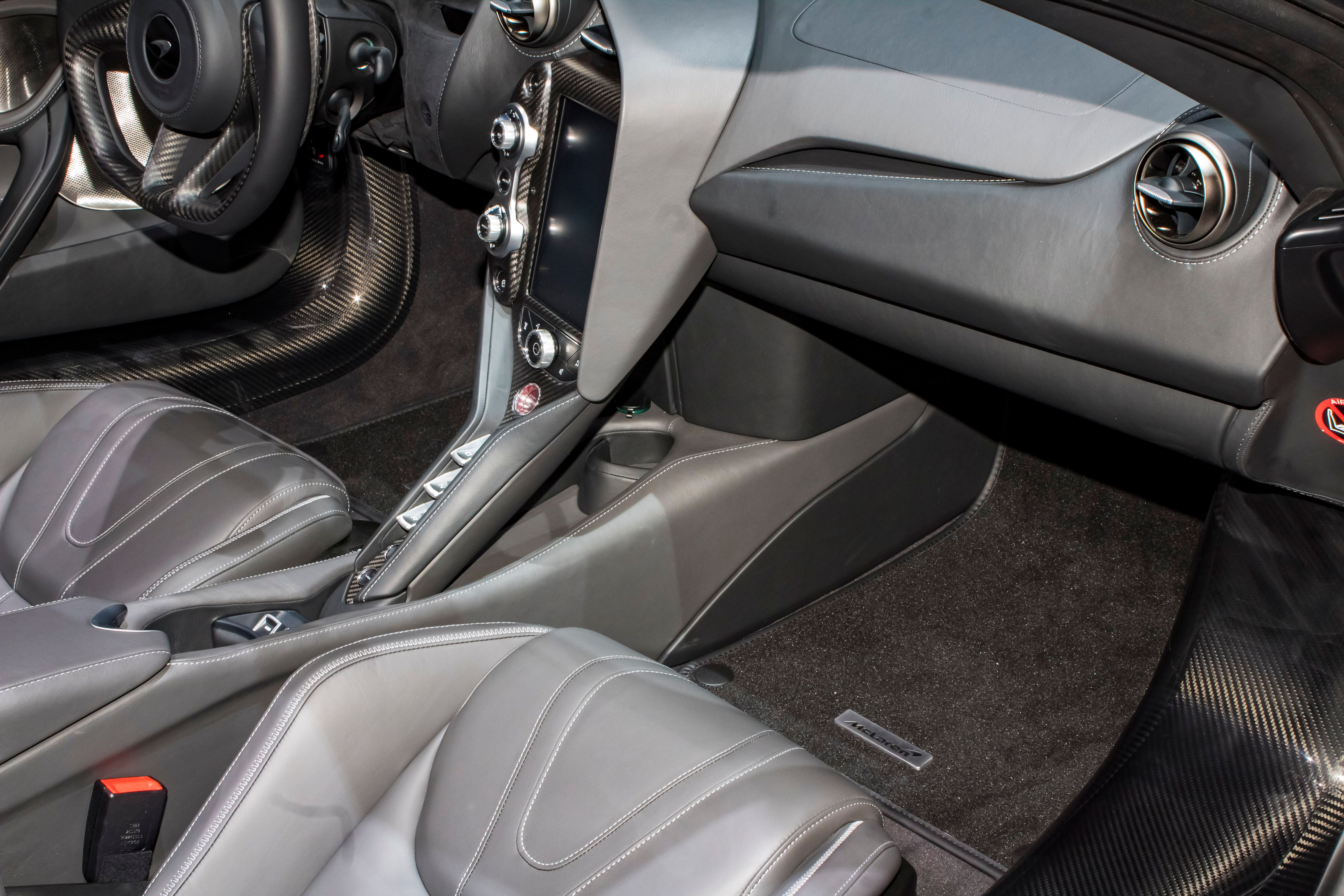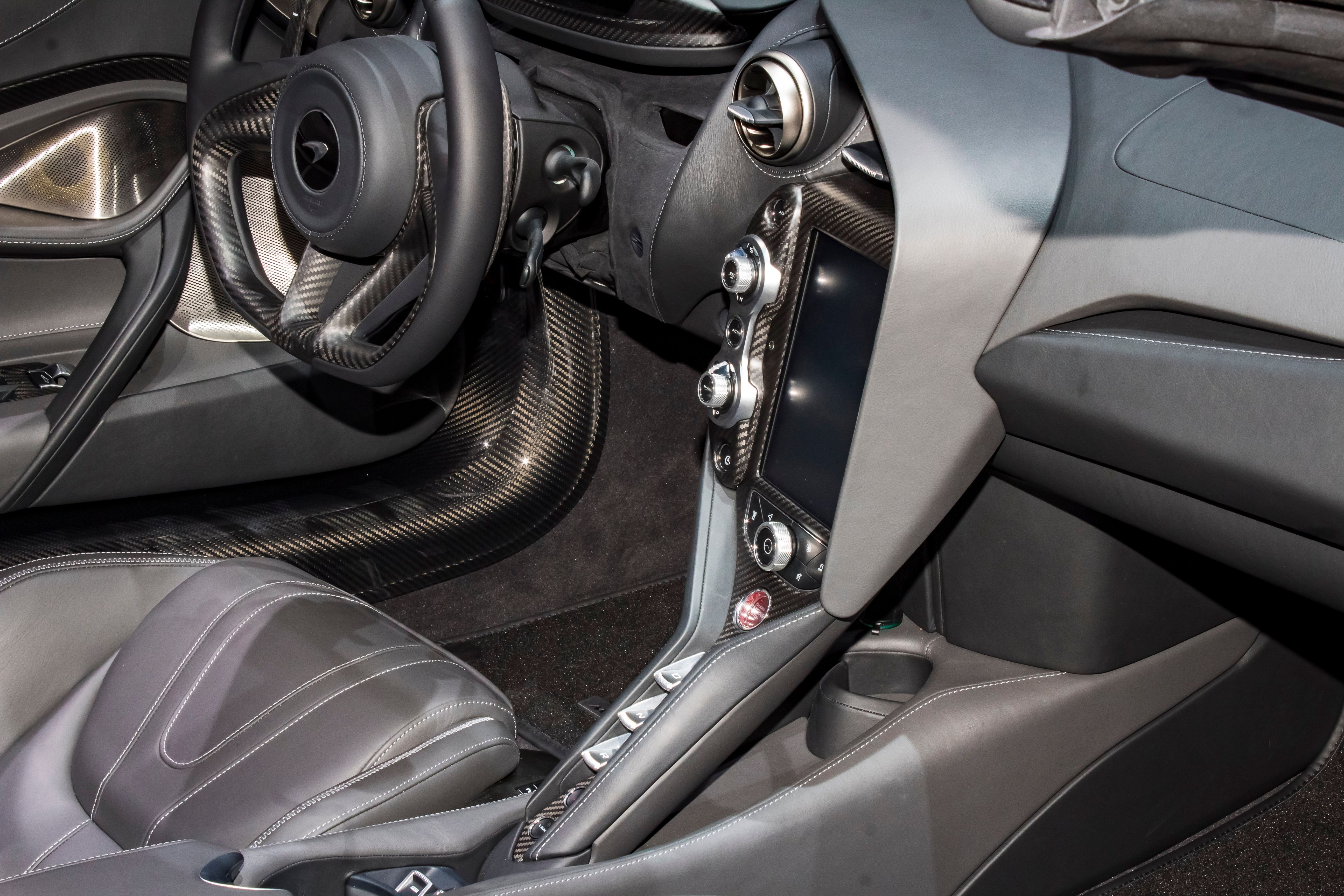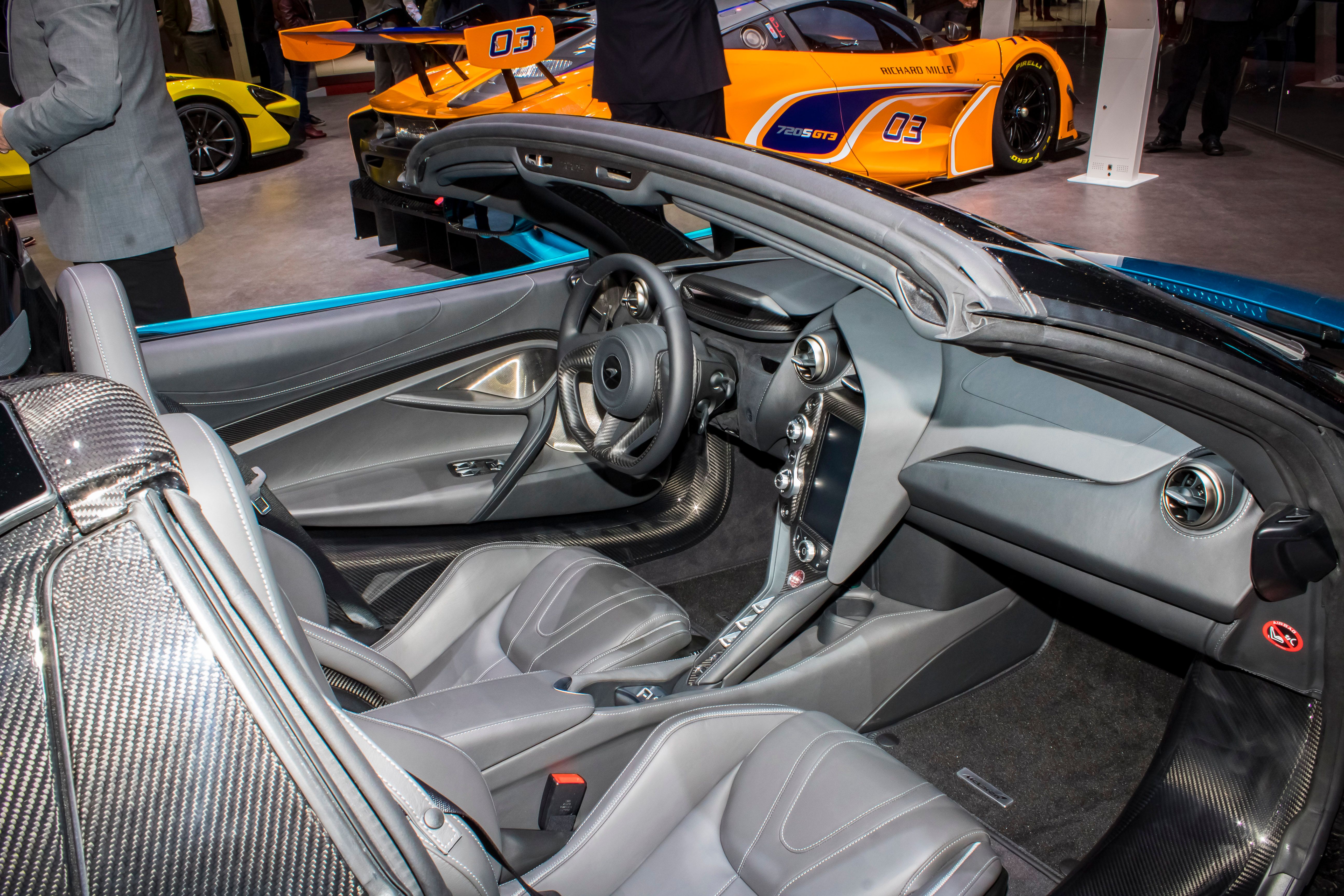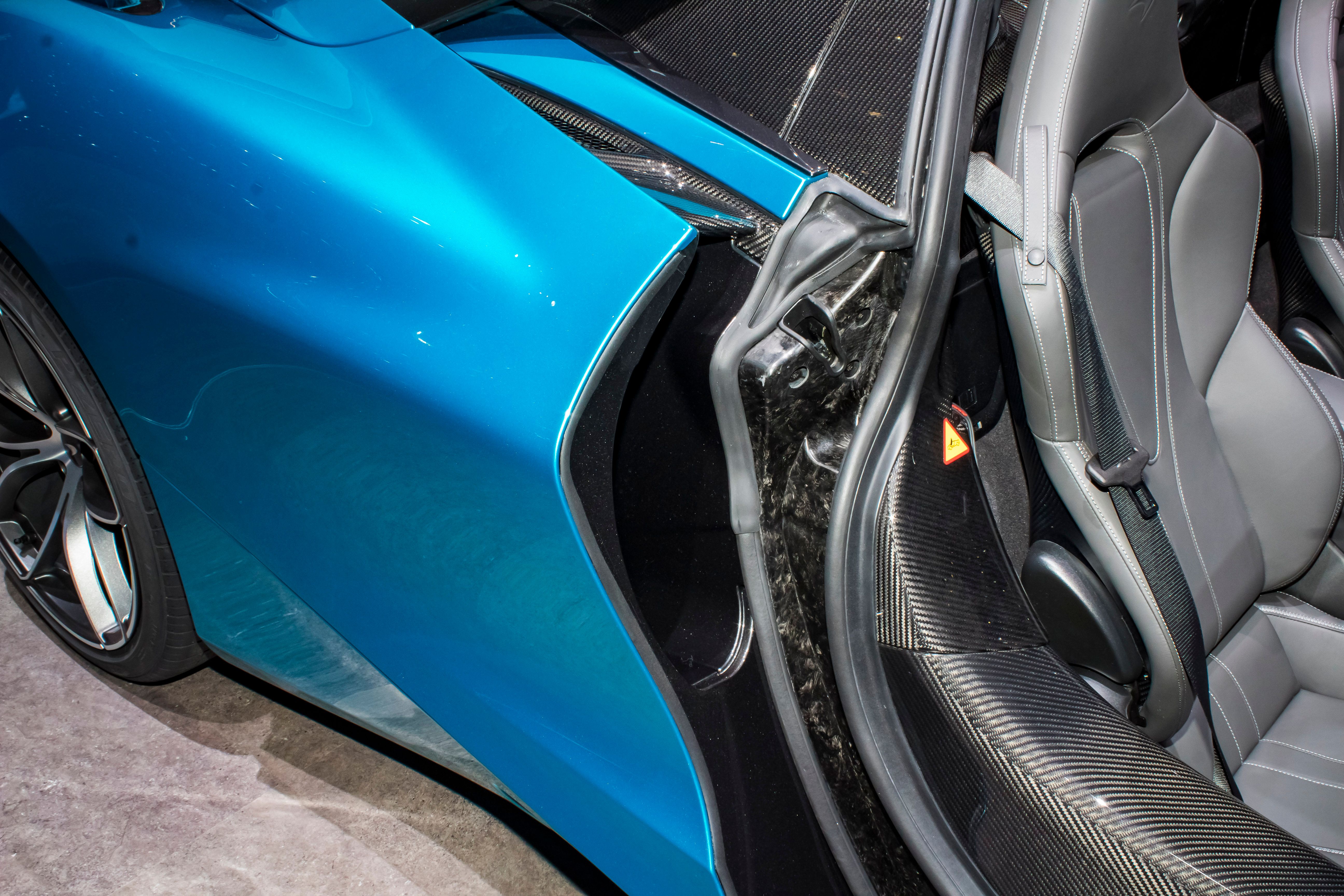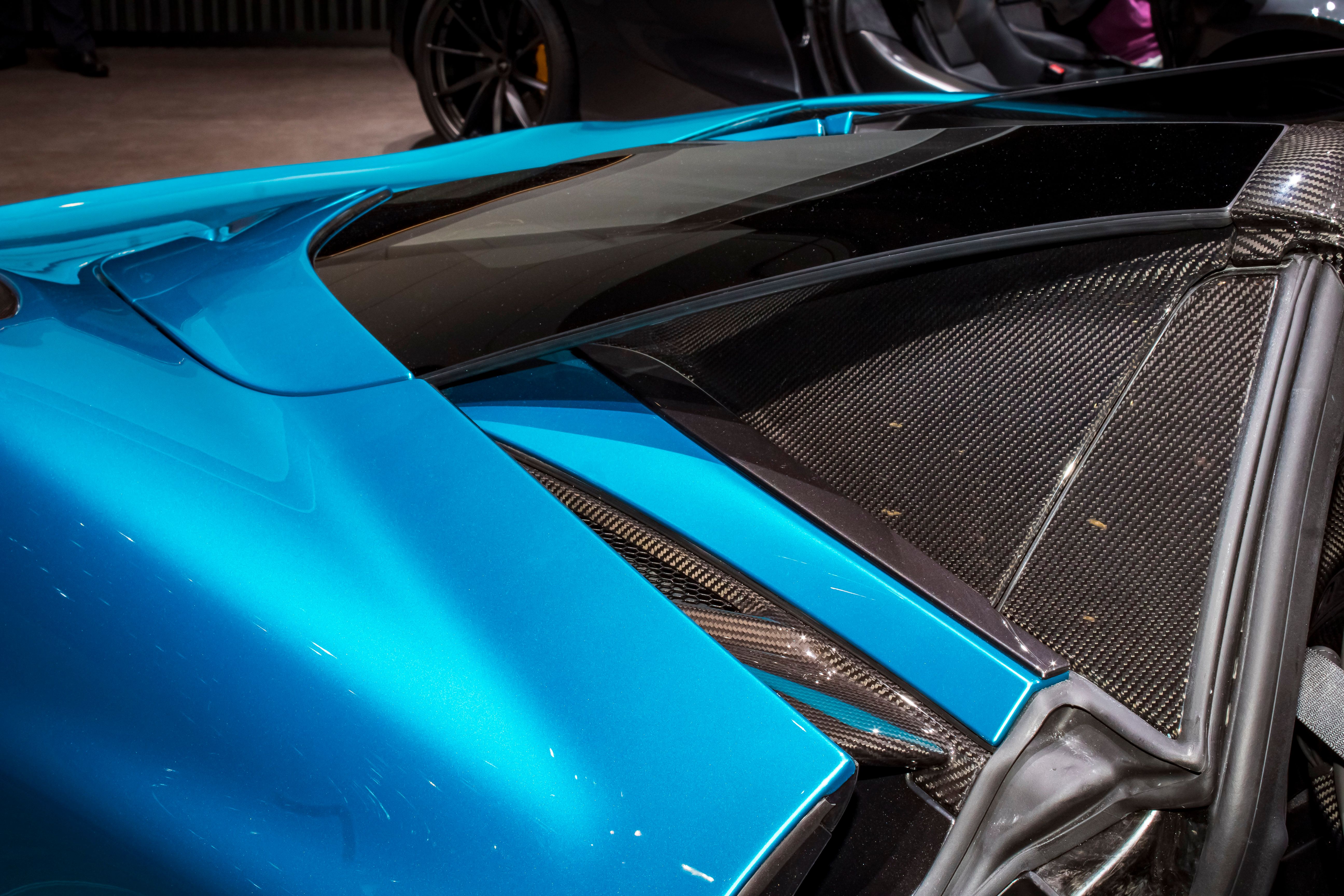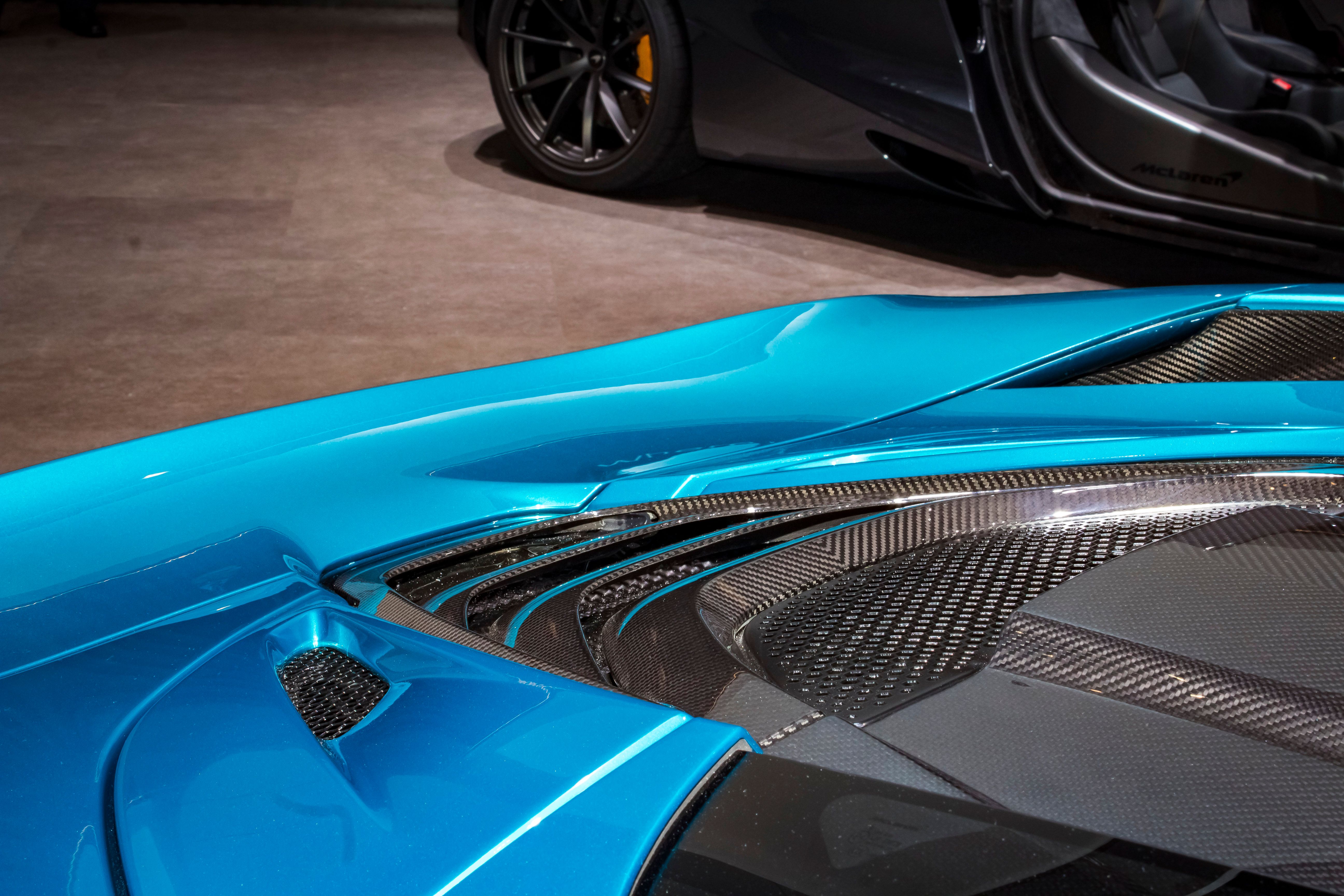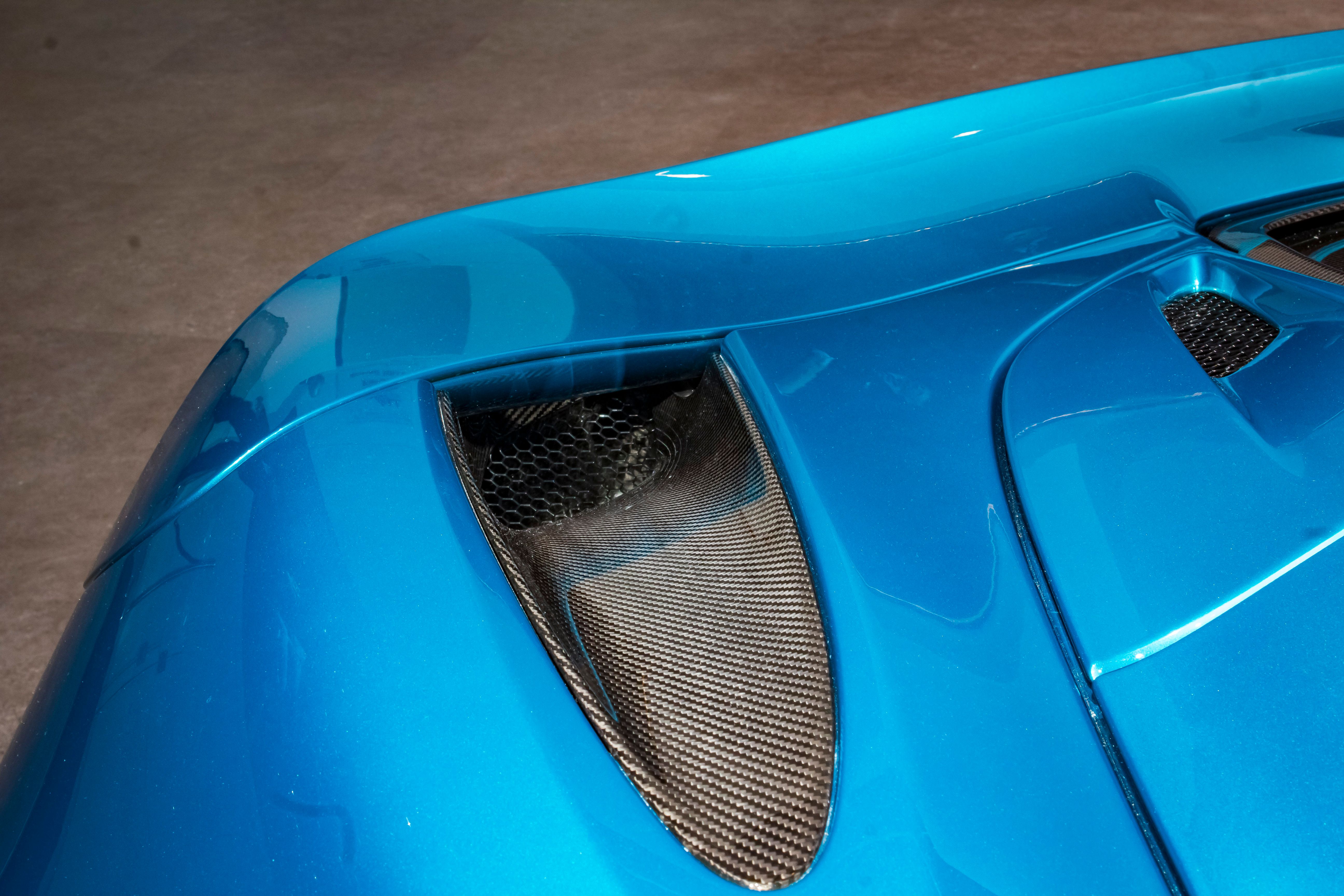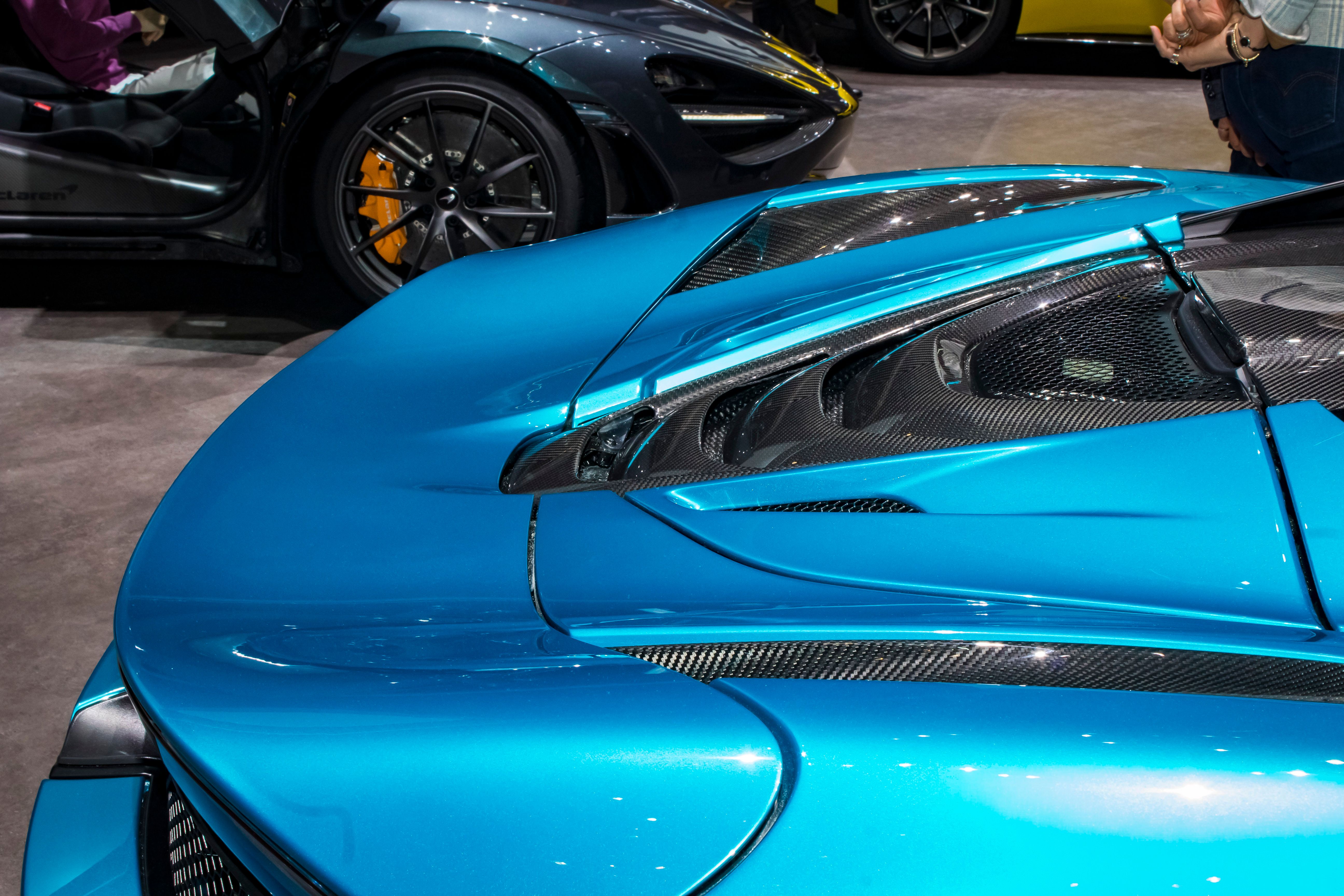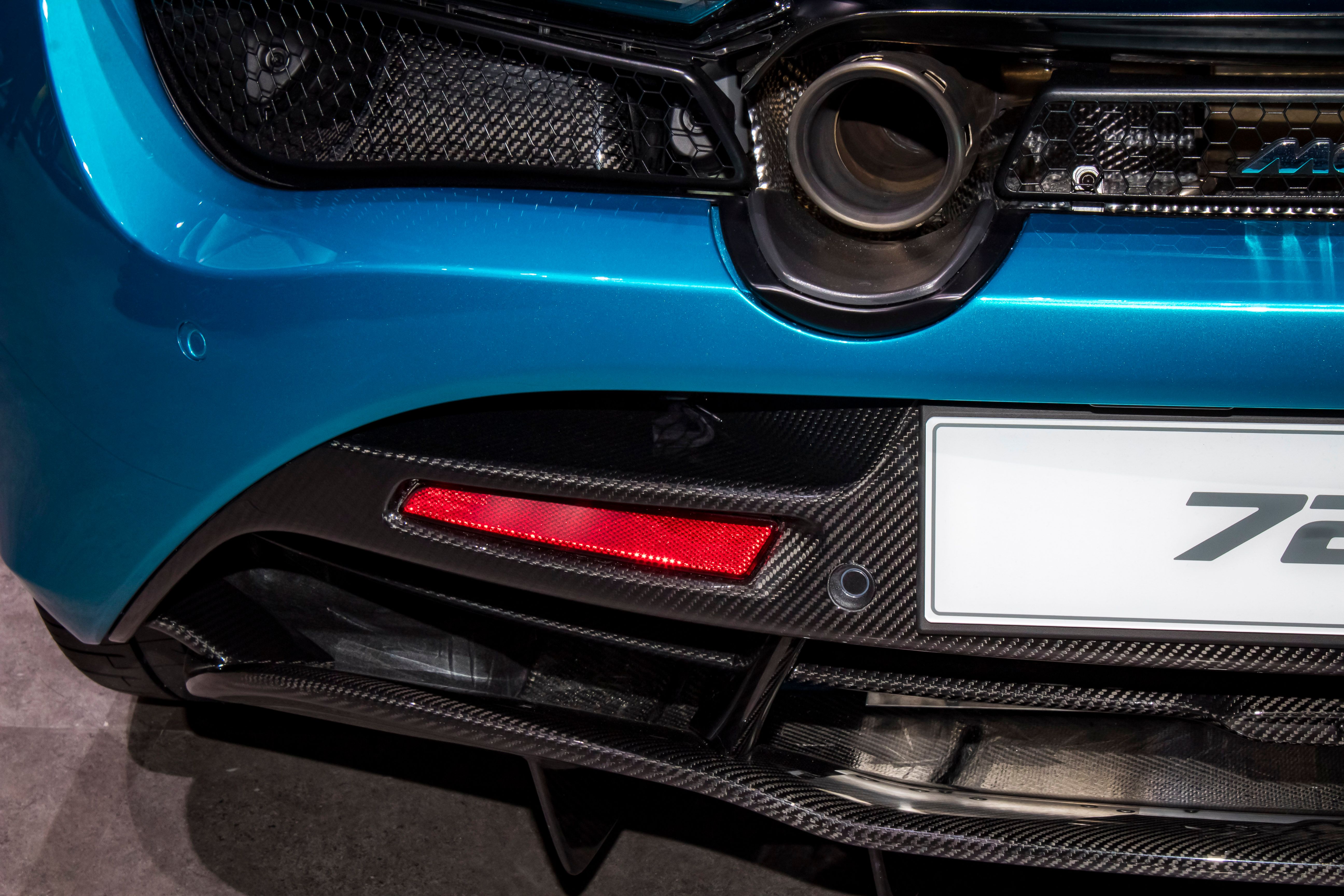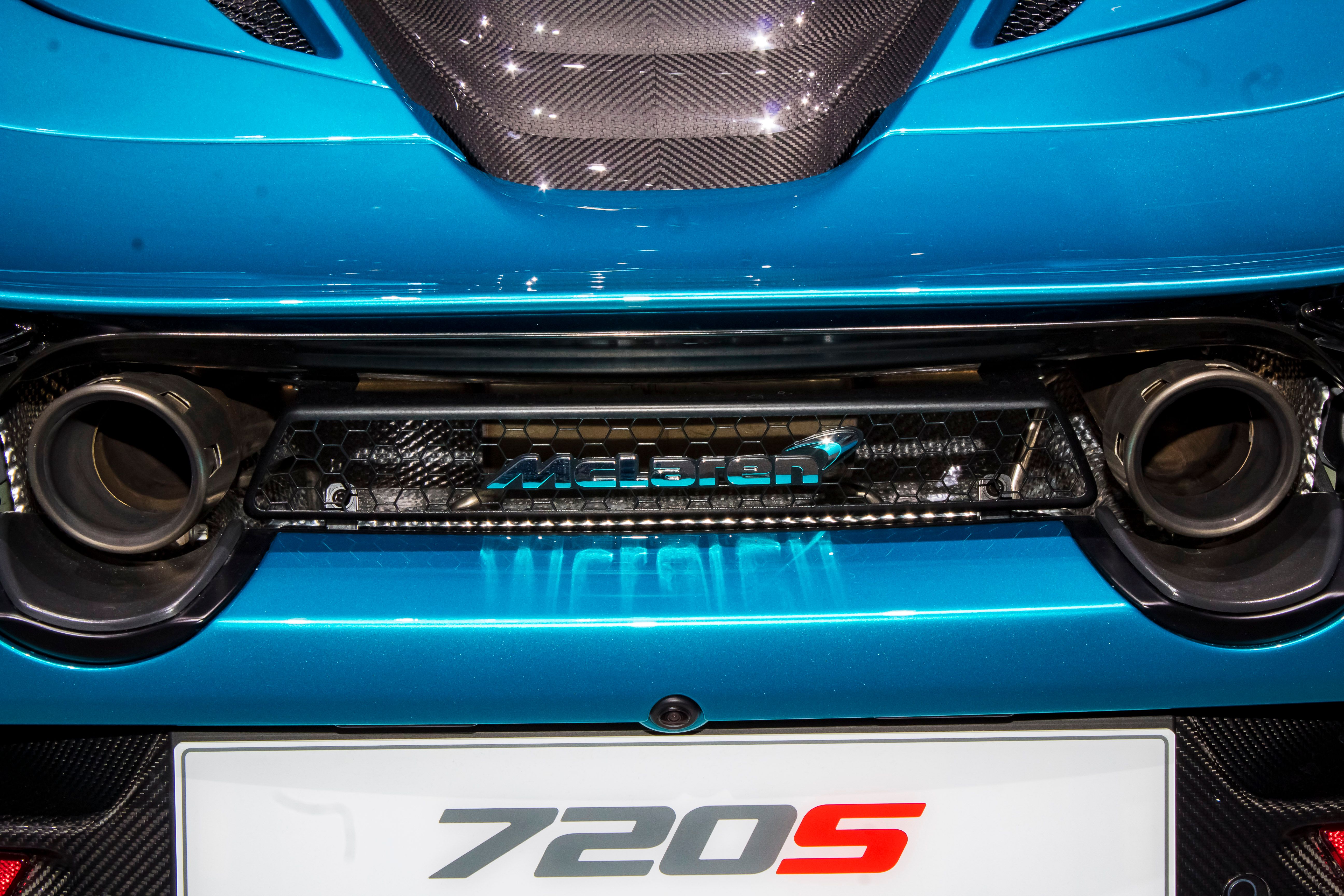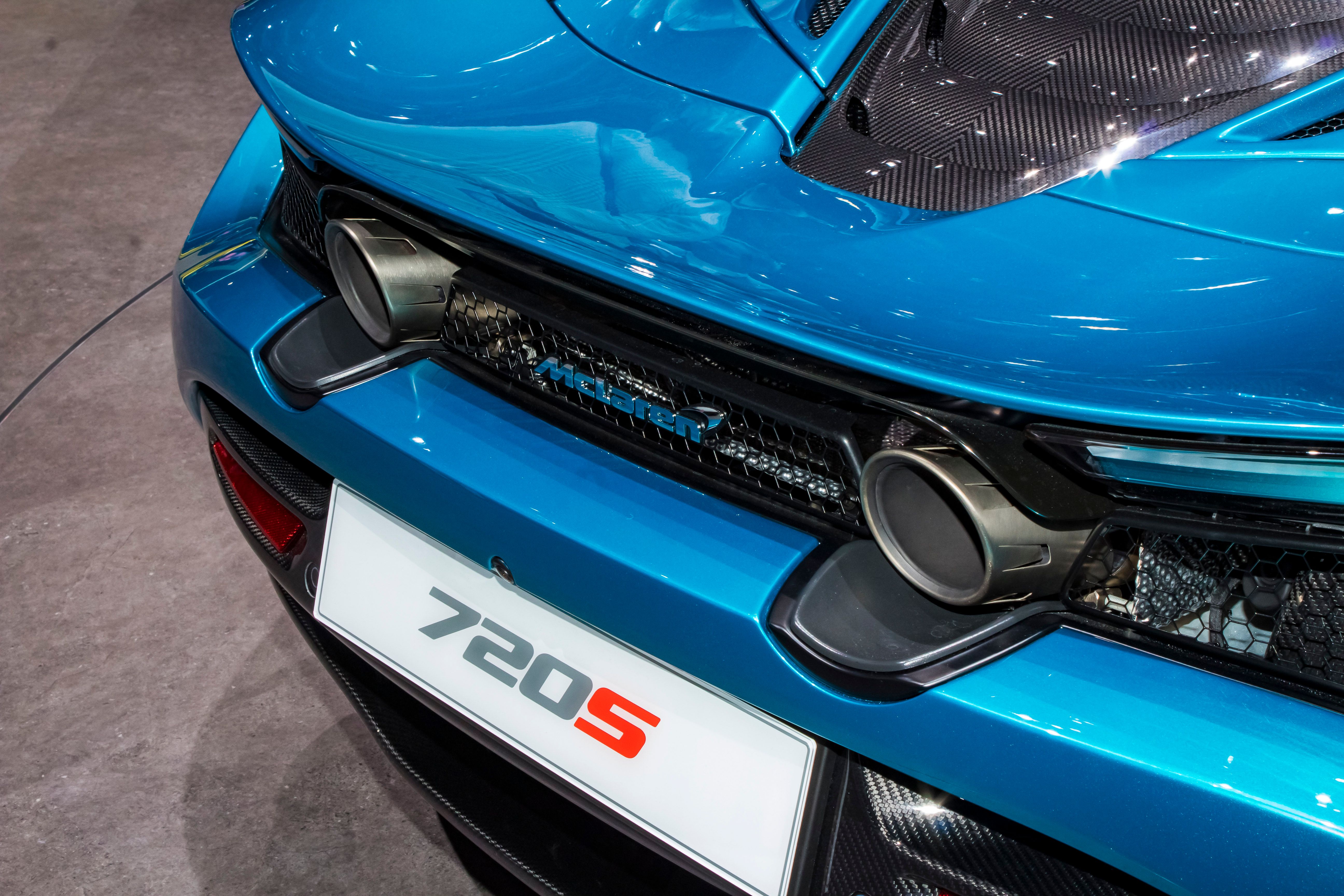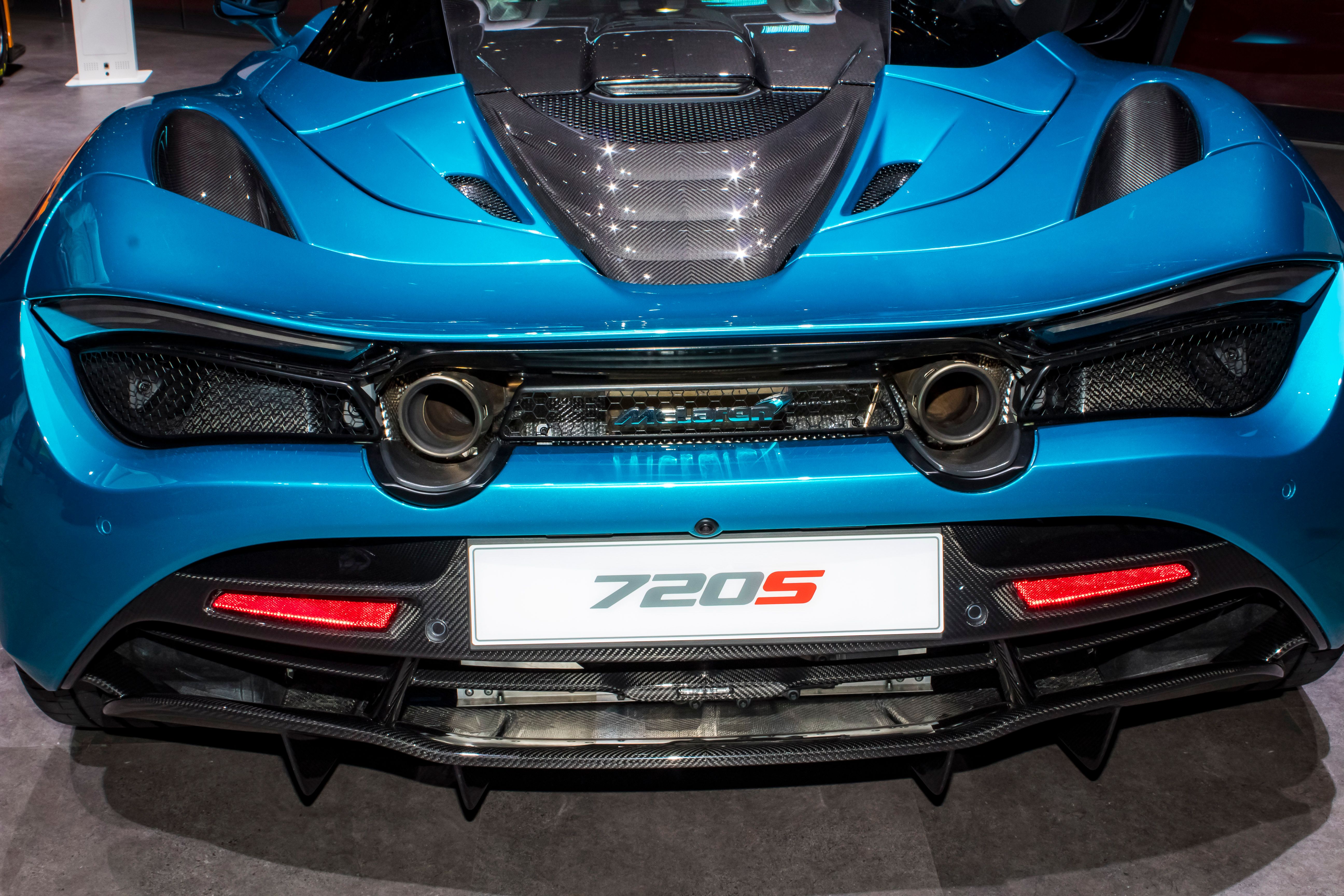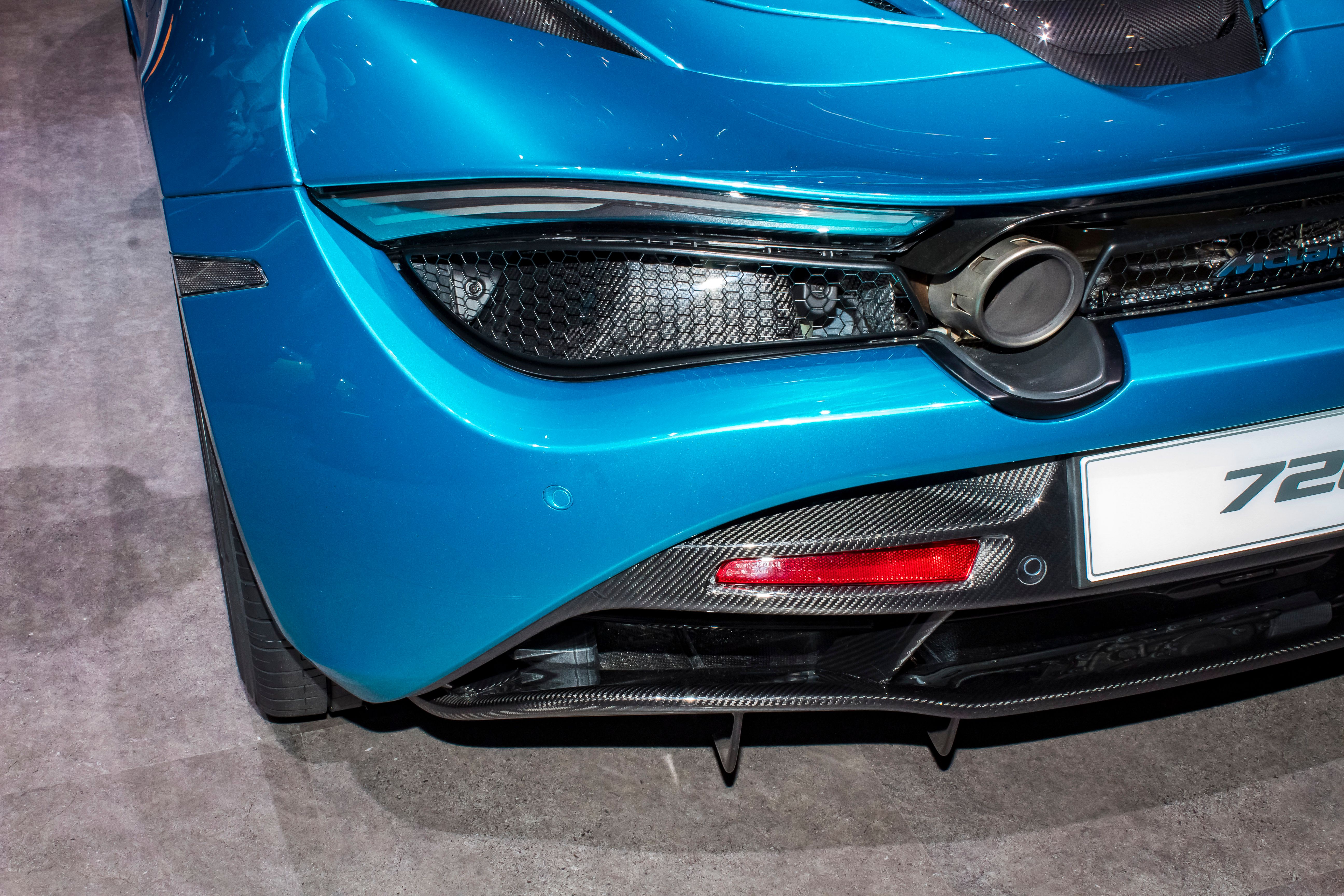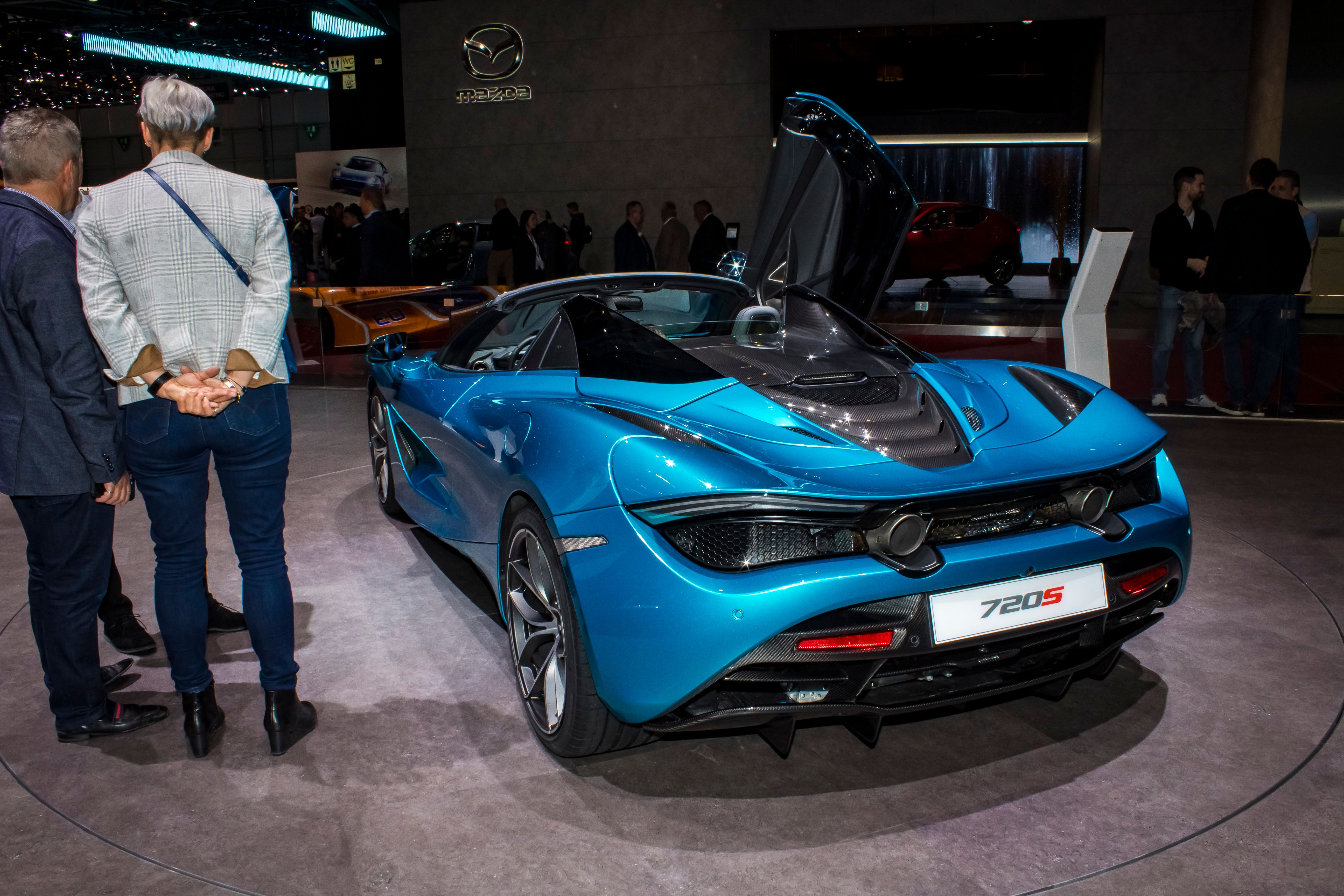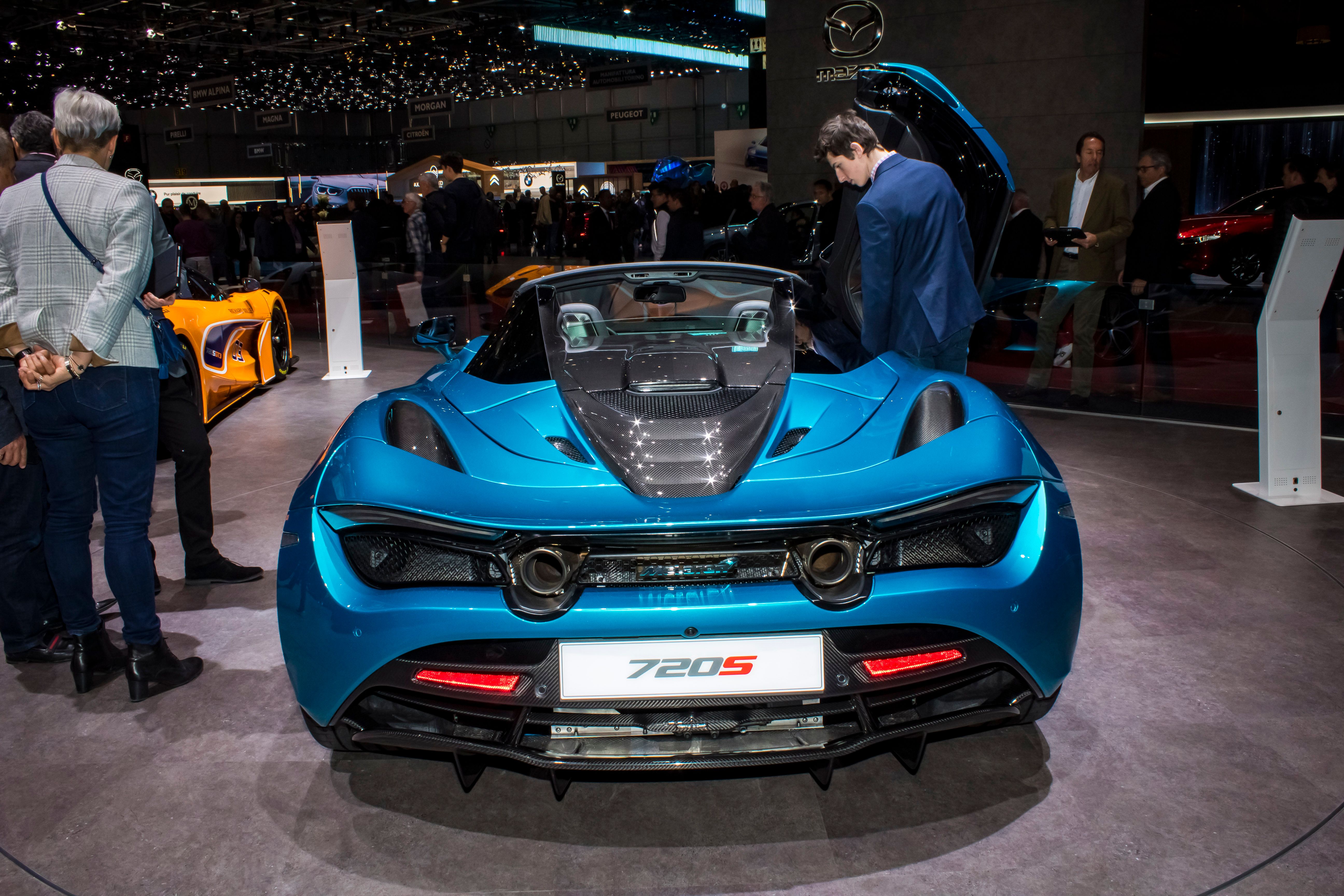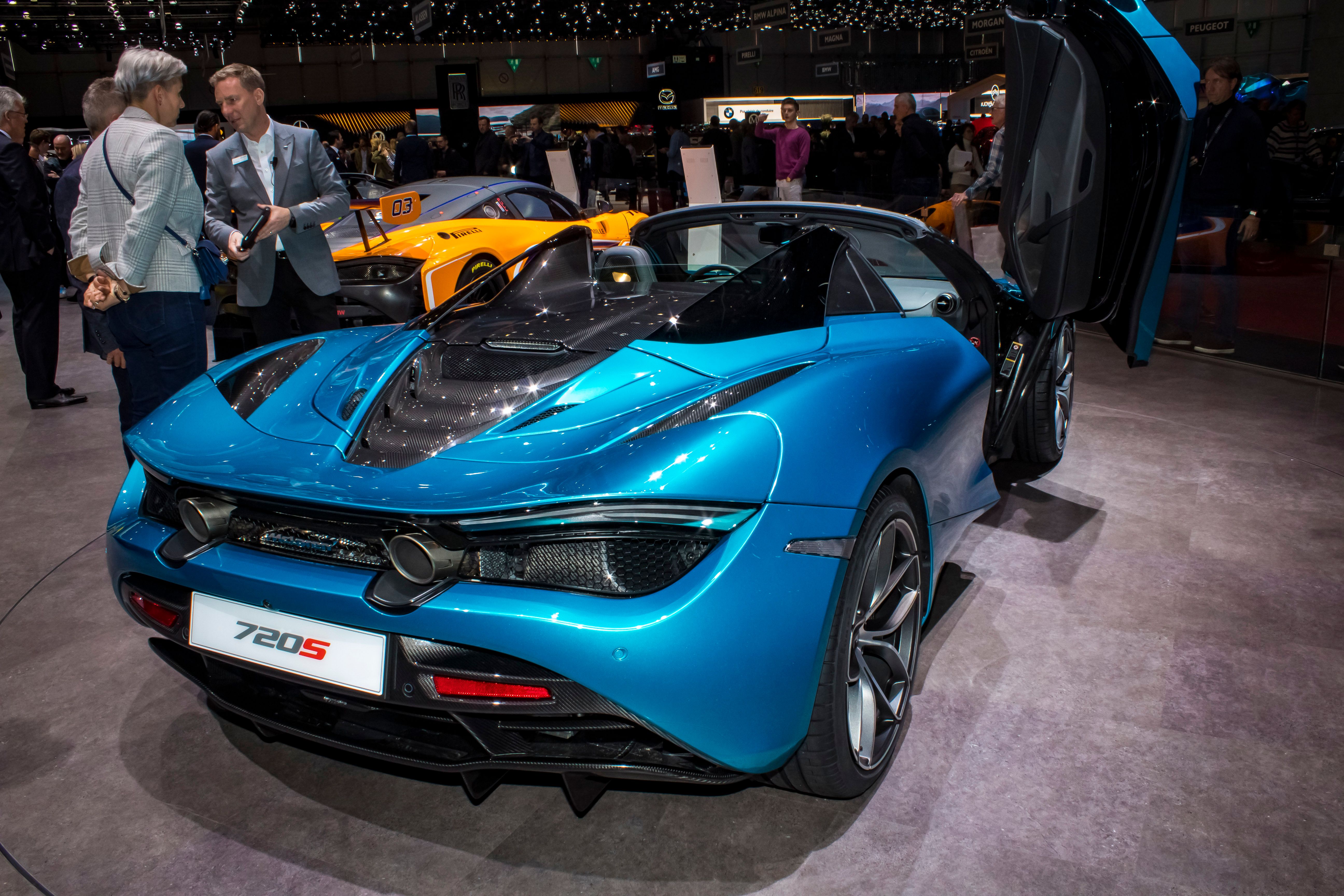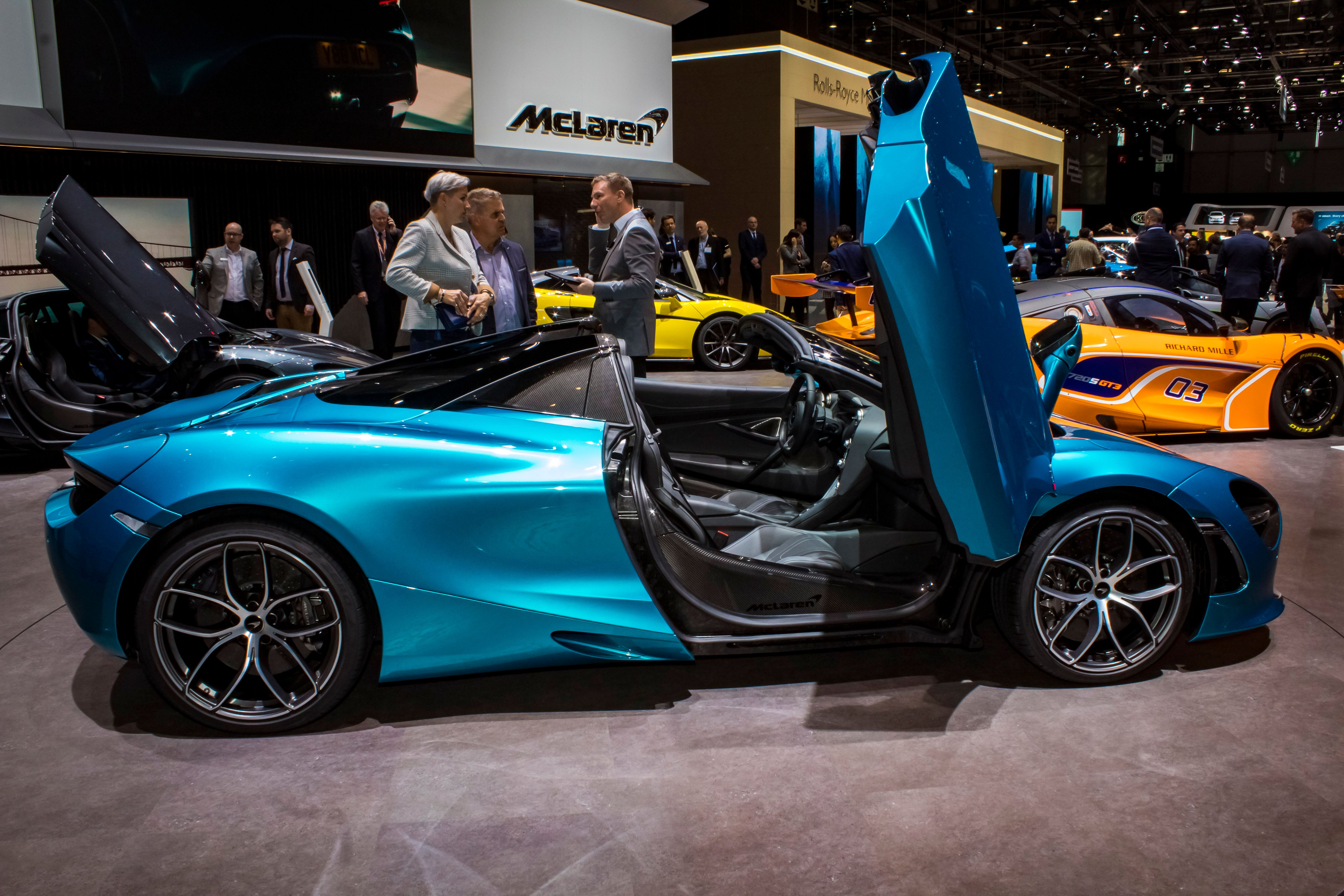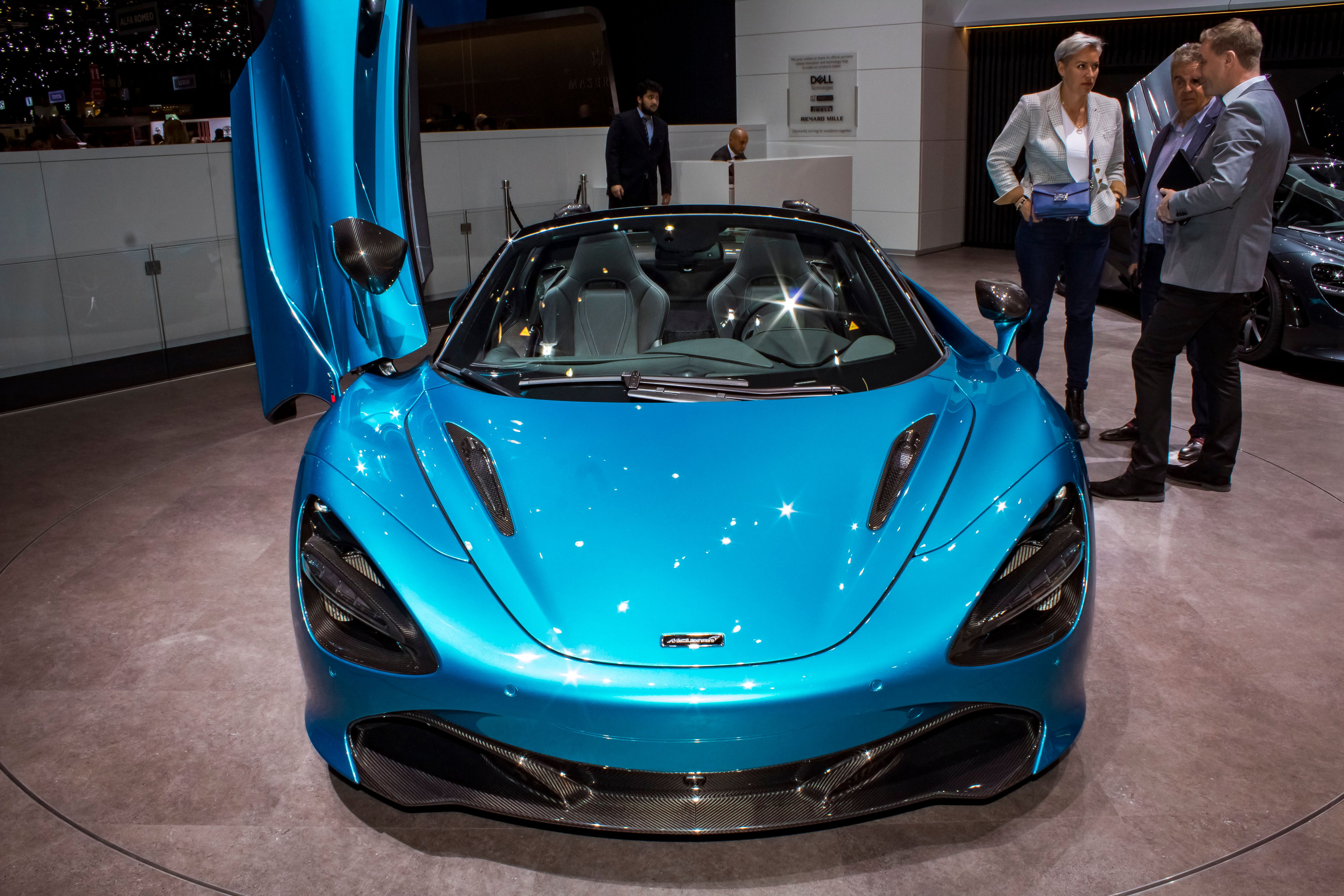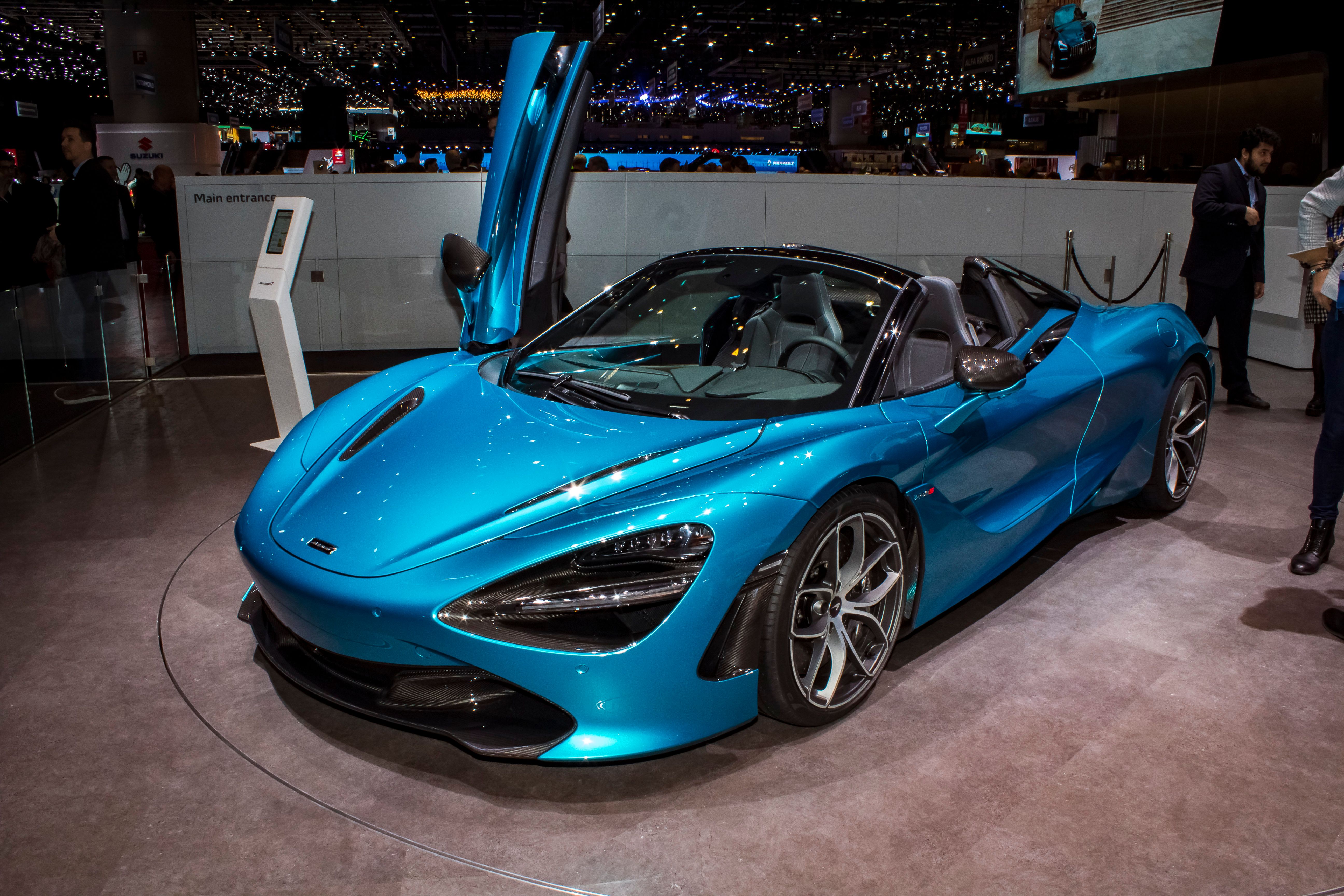Introduced in December 2018, right between the auto shows in Los Angeles and Detroit, the 720S Spider replaces the 650S Spider in the lineup and enables McLaren to compete with the 488 Spider and Huracan Spyder. It’s the third member of the family, joining the coupe and the race-spec 720S GT3. The 720S Spider shares all exterior and interior features, as well as the drivetrain centered around the 4.0-liter V-8 engine, with the coupe model. Although it's 108 pounds heavier than the coupe, the 720S Spider remains the lightest in its class with a dry weight of 2,937 pounds.
Update 03/11/2019: We’ve updated this review with fresh images of the 2019 McLaren 720S Spider taken during the 2019 Geneva Motor Show. Check them out in the gallery at the bottom of this page!
2019 McLaren 720S Spider
- Make: Array
- Model: 2019 McLaren 720S Spider
- Engine/Motor: V8
- Horsepower: 710 @ 7500
- Torque: 568 @ 6500
- Transmission: 7 Speed SSG
- [do not use] Vehicle Model: Array
2019 McLaren 720S Spider Exterior
As seen in the teasers and spy shots, the Spider model is identical to the coupe as far as design goes.
Styling-wise, the 720S is a radical departure from its predecessor, featuring a more angular design up front with headlamps carved deep into the fascia. McLaren also separated the daytime running lights from the main lamps for this model. The bumper of the Spider is identical as well, with two big outlets set at the corners and a clear carbon-fiber splitter below.
It’s in the side profile that the 720S reminds a bit of the 650S, but it has a lower beltline and a more aerodynamic, canopy-style roof. McLaren also moved the big rear fender vents seen on the 650S into the side skirts, keeping the main body panels cleaner. Cooling isn’t an issue though, as the "double-skin" design of the dihedral doors channel extra air to the engine.
The rear section of the 720S employs a flatter fascia with thin LED strips for taillights. A pair of big, round tailpipes sit high in the fascia, flanking the "McLaren" logo on the main grille.
McLaren also created a new wing system for the 720S, replacing the small wing seen on the 650S with an aerodynamic device that occupies a large portion of the decklid. When activated, the rear section of the spoiler lifts to create a wing-like element. While the spoiler is identical to the one on the coupe, the deployment pattern was revised for the drop-top. Specifically, the aero settings differ depending on whether the hard-top is raised or lowered, as the vehicle electronics are automatically aware of which position it is in.
You can choose for a wide range of wheels, but McLaren also offers a unique, 10-spoke design. Just like the coupe, the Spider rides on Pirelli P Zero tires developed specifically for the 720S.
2019 McLaren 720S Spider - Exterior Dimensions
|
Length, inches |
179 |
|
Wheelbase, inches |
105 |
|
Height, inches |
47 |
|
Width, with mirrors, inches |
85 |
|
Width, mirrors folded, inches |
81 |
|
Width, without mirrors, inches |
76 |
|
Track (to contact patch center), inches |
Front: 65.9; Rear: 64.2 |
|
Lightest dry weight, lbs |
2,937 |
|
3,236 |
|
|
Luggage capacity (DIN) |
Front: 5.3 cubic feet; Rear: 2cubic feet |
The Roof
McLaren patented a new carbon-fiber roof system for this supercar. The electrically actuated system needs only 11 seconds to open or close, at speeds of up to 31 mph, which makes it the quickest-operating roof in the supercar class. That's also six seconds quicker than the 650S Spider.
The rear window lowers automatically when the roof is folded, moving into an optimum position to reduce airflow into the cabin. You can also control it independently to let the sound of the engine inside when the roof is up.
2019 McLaren 720S Spider Interior
Heavily inspired by the racing world and packed with tons of carbon-fiber elements, the 720S’ interior is mind-blowing, to say the least. The slim center stack fitted with a vertical, tablet-style display is oriented toward the driver seat and separates the main cockpit from the rest of the cabin.
All the important buttons and knobs related to the infotainment system are mounted near the steering wheel, while the transmission controls are stacked on top of each other below, making things very practical.
While the carbon-fiber steering wheel retains most of the design of the old wheel in the 650S, the instrument cluster is not only new but also revolutionary.
Specifically, when used in the upright position, it shows the comprehensive data you get in any car. It includes speedo and rev counter gauges, info on performance, consumption, and temperature for various drivetrain components. Switch to Slim Display, and it will show only essential data on a small strip, similar to race cars. This feature comes in handy at the race track, where drivers need to remain focused on the course ahead.
While sporty, the 720S’ cabin is also luxurious, featuring switches machined from aluminum, fine leather upholstery, Alcantara, carbon-fiber, contrast stitching, and top-of-the-league fit and finish. Just like the coupe, the Spider should benefit from a wide range of upholstery colors and the usual carbon-fiber and Alcantara packages, including racing carbon seats.
Of course, you can enjoy all of the above while driving in the open-top configuration. But even when the roof is folded, and you're driving at high speeds, the cabin remains comfortable thanks to the design of the buttresses and the rear window. An aerodynamic carrier helps prevent airflow entering the cabin, so you don't have to worry about using extra hair gel.
2019 McLaren 720S Spider Drivetrain
Naturally, the Spider shares drivetrain components with the coupe, so it features the same twin-turbo, 4.0-liter V-8 engine.
Despite being 108 pounds heavier than the coupe, the Spider is equally fast. The sprint to 60 mph takes 2.8 seconds, which also makes it the quickest in its class. It's also two tenths quicker than the 650S Spider and on par with the awesome 675LT. It's no surprise that McLaren calls the 720S Spider "the most accomplished convertible supercar" it ever made.
Getting from 0 to 124 mph in this supercar will take 7.9 seconds, just a tenth-second slower than the coupe and around a half-second quicker than the 650S Spider. The quarter-mile coms in at 10.4 clicks, also a tenth-second slower than the coupe.
The Spider's top speed also matches that of the coupe at 212 mph, a five-mph increase over the 650S. However, this figure can be reached only with the top up. When the roof is folded, the supercar won't go beyond 202 mph.
Just like the coupe, the 720S Spider is built around a carbon-fiber tub and upper structure called the McLaren Monocage II and introduced in 2017. This layout delivers extreme strength and rigidity in a lightweight structure and it’s combined with a range of aluminum alloys in the chassis. To provide enhanced rollover protection for passengers, fixed carbon-fiber structural supports are integrated into the rear of the Monocage II, also providing main anchor points for the roof system and the seatbelts. Compared to the 650S Spider, the 720S Spider's structure is 15 pounds lighter.
The supercar also features a new generation of the company’s Proactive Chassis Control, new suspension, and electro-hydraulic steering for increased grip, balance, and performance.
2019 McLaren 720S Spider Specifications
|
Engine configuration |
M840T engine, 4.0-liter twin-turbo V8, 3,994cc |
|
Drivetrain layout |
Longitudinal mid-engined, RWD |
|
Power bhp/kW @ rpm |
710/537 @ 7,500rpm |
|
Torque lb ft @ rpm |
568 @ 5,500-6,500rpm |
|
Transmission |
7 Speed SSG. Comfort, Sport and Track modes |
|
Steering |
Electro-hydraulic; power-assisted |
|
Chassis |
Carbon fibre MonoCage II-S monocoque, with aluminum front and rear crash structures |
|
Suspension |
Independent adaptive dampers, dual aluminum wishbones, Proactive Chassis Control II (PCC II). Comfort, Sport and Track modes |
|
Brakes |
Carbon Ceramic discs (Front: 15.3in Rear: 15in); aluminum calipers (6-piston front; 4-piston rear) |
|
Wheels (inches) |
Front: 9J x 19; Rear: 11J x 20 |
|
Tires |
Front: 245/35/R19 93Y; Rear: 305/30/R20 103Y |
|
ACCELERATION |
|
|
0 -97km/h (0-60mph) |
2.8 seconds |
|
0-100km/h (0-62mph) |
2.9 seconds |
|
0-200km/h (0-124mph) |
7.9 seconds |
|
0-300km/h (0-186mph) |
22.4 seconds |
|
0-400m / ¼ mile |
10.4 seconds |
|
Maximum Speed (RHT raised/RHT lowered) |
212mph/202mph |
|
124mph – 0 braking |
4.6 seconds/387ft |
|
62mph – 0 braking |
2.8 seconds/99.4ft |
2019 McLaren 720S Spider Pricing
Pricing for the 720S Spider starts from $315,000 in the U.S., a notable $30,000 increase over the coupe model. Deliveries to customers will begin in March 2019. The 720S Spider is available in the same three specifications as the coupe, with Performance and Luxury trims sitting above the standard model.
2019 McLaren 720S Spider Competition
Ferrari 488 Spider
Developed as a replacement for the 458 Italia, the 488 GTB introduced a more aggressive design language somewhat inspired by the LaFerrari. It also arrived with a new engine, as Ferrari replaced the old naturally aspirated V-8 with a twin-turbo, 3.9-liter mill. The unit cranks out 660 horsepower and 560 pound-feet of torque, and even though the 488 is not as powerful as the 720S, it's almost as quick, needing three seconds to hit 60 mph. However, it will take notably longer, like 8.7 ticks, to get to 124 mph. The 488 Spider hits a maximum speed of 203 mph. If you want a Ferrari that's just as powerful and quick as the 720S Spider, you need to go with the beefed-up 488 Pista Spider. Not only more aerodynamic, but it also features an upgraded V-8 rated at 710 horsepower and 568 pound-feet of torque. This version needs 2.9 seconds to reach 60 mph and 7.6 clicks to get to 124 mph. The 488 Spider starts from around $260,000, which makes it more affordable than the 720S, but the Pista Spider costs in excess of $330,000.
Read our full reviews of the Ferrari 488 Spider and Ferrari 488 Pista Spider.
Lamborghini Huracan Spyder
Around since 2016, the Huracan Spyder stands out as the only supercar in this comparison to still feature a naturally aspirated engine. It's also powered by a V-10 instead of the more popular V-8 layout. Shared with the Audi R8, the 5.2-liter engine generates 610 horsepower and 413 pound-feet of torque in the Huracan. Notably less powerful than the 720S, the Huracan Spyder is also significantly lower. The sprint to 62 mph takes 3.4, while the 124-mph mark comes in 10.2 seconds. Its top speed is also notably inferior at 201 mph. You can get better performance with the Huracan Performante Spyder. Fitted with active aerodynamics, extra carbon-fiber, and a more aggressive exterior, the Performante is among the quickest supercars on the Nurburgring track. That's because the upgraded V-10 engine also delivers more oomph at 631 horsepower. It's still not as quick as the 720S Spider with a 0-to-60 mph sprint of 3.1 seconds, but it's not far behind either. The Huracan Spyder is notably more affordable at around $250,000, but the Performante version costs more than $300,000.
Read our full stories on the Lamborghini Huracan Spyder and Lamborghini Huracan Performante Spyder.
Conclusion
The McLaren 720S set a new benchmark in this niche, leaving behind both the Ferrari 488 GTB and Lamborghini Huracan. In order to match its performance, you actually need to spend more and get the beefed-up 488 Pista or Huracan Performance versions. This speaks volumes of the tremendous effort McLaren put into its supercar. And once a successor for the 675LT will arrive (most likely the 750LT), Ferrari and Lambo will fall behind once again. The 720S Spider carries over with the same legacy in order to extend McLaren's domination in the convertible market.
Further reading
Read our full review on the 2018 McLaren 720S.
Read our full review on the 2018 McLaren 720S Velocity.
Read our full review on the 2015 McLaren 650S Spider.


